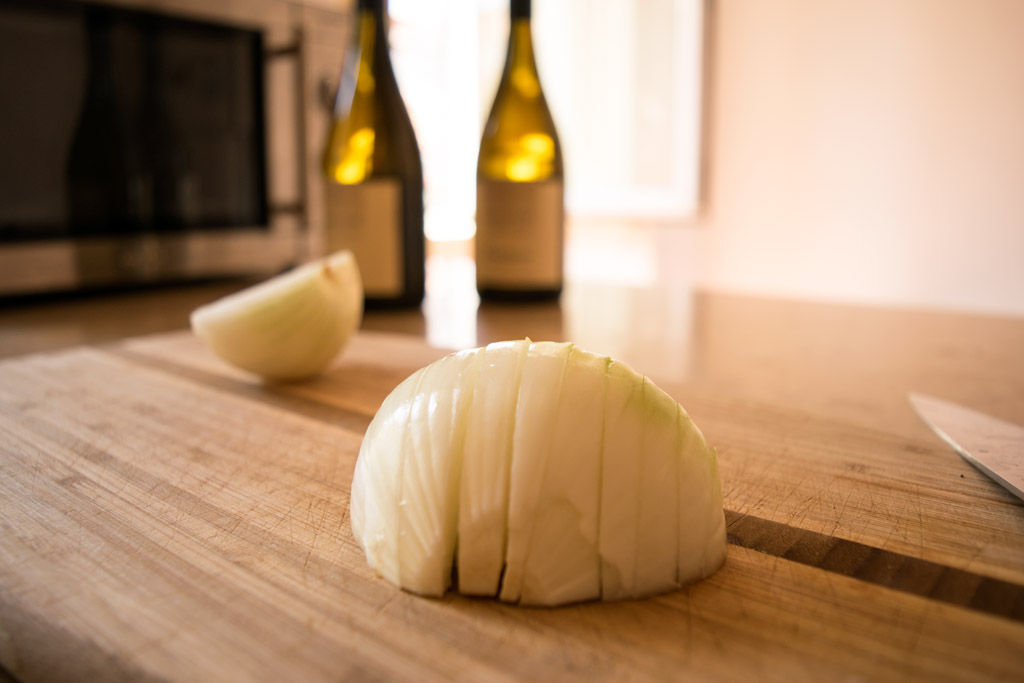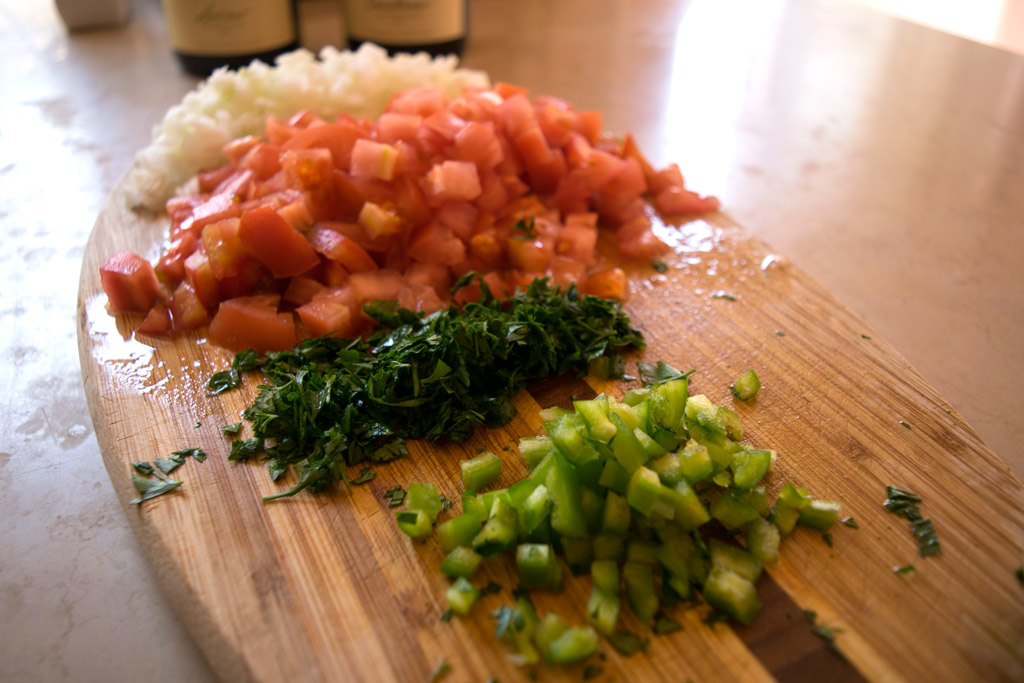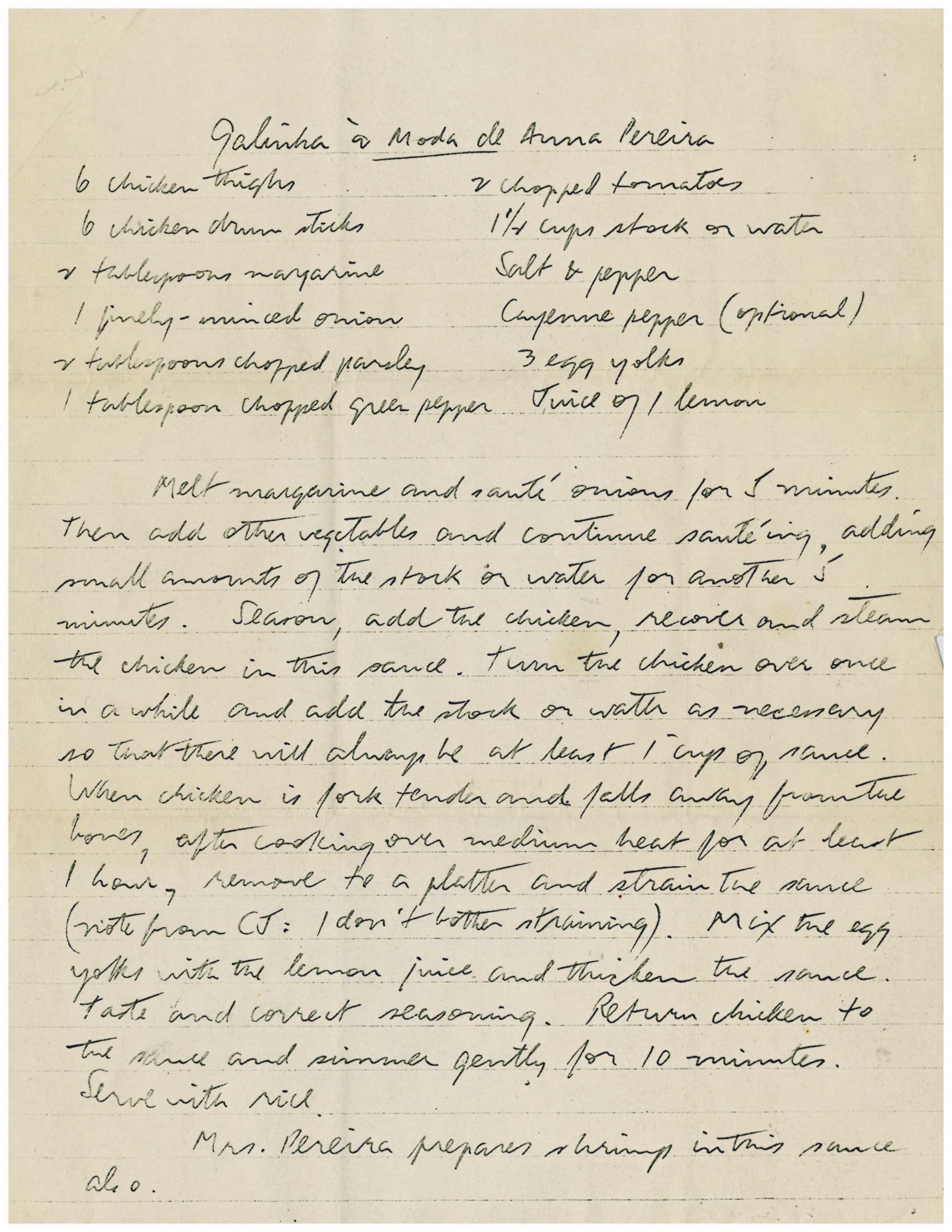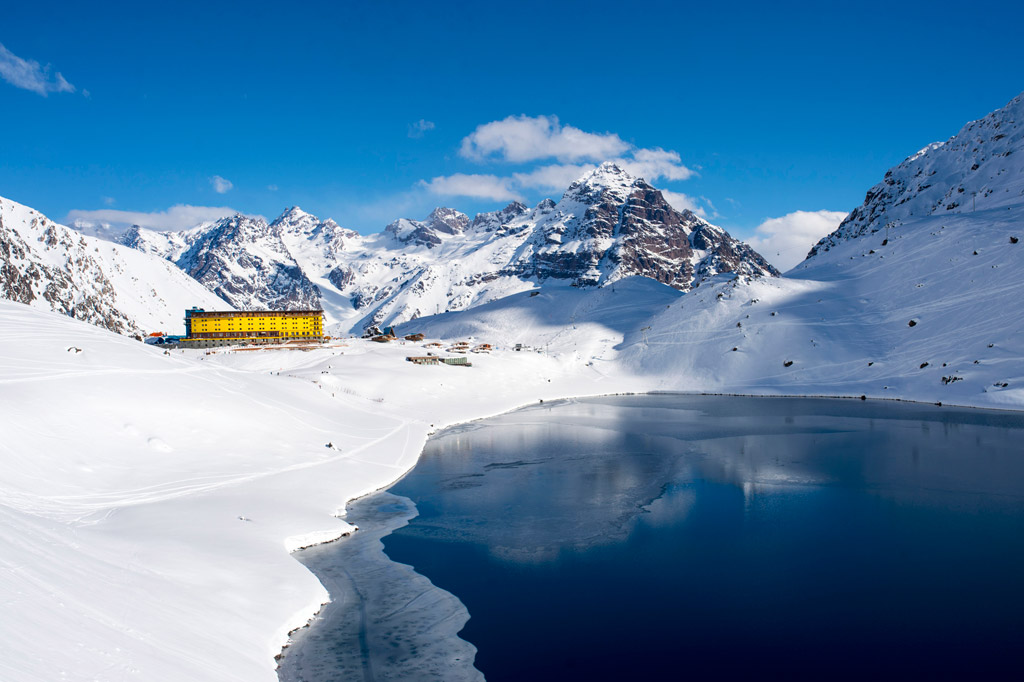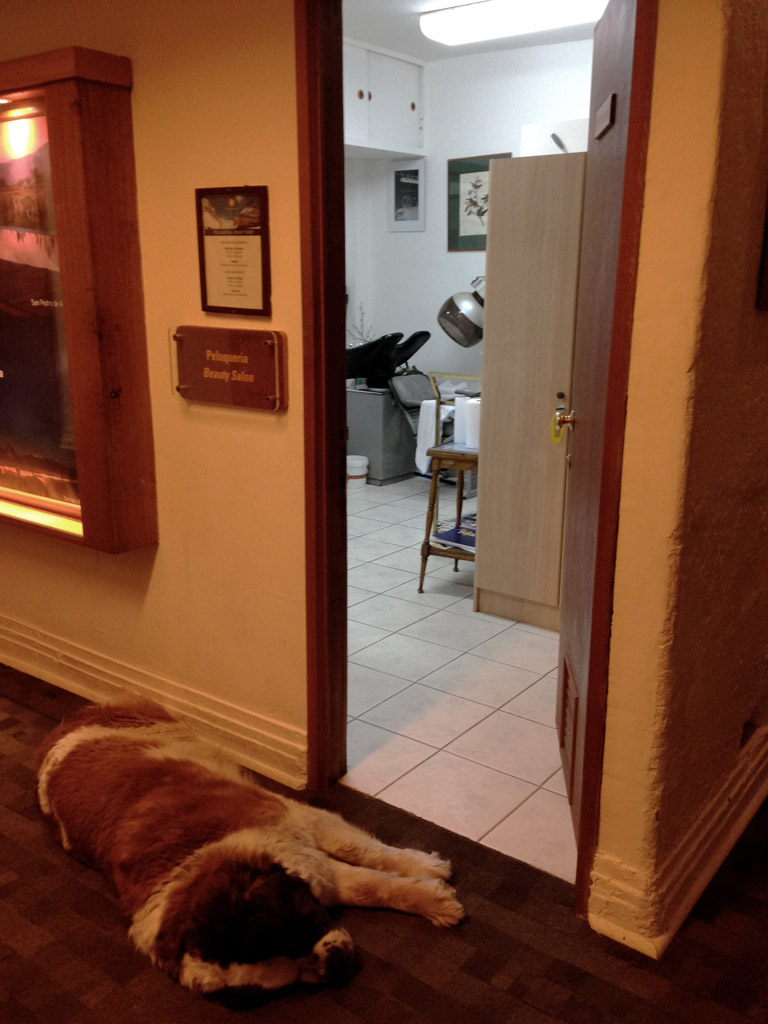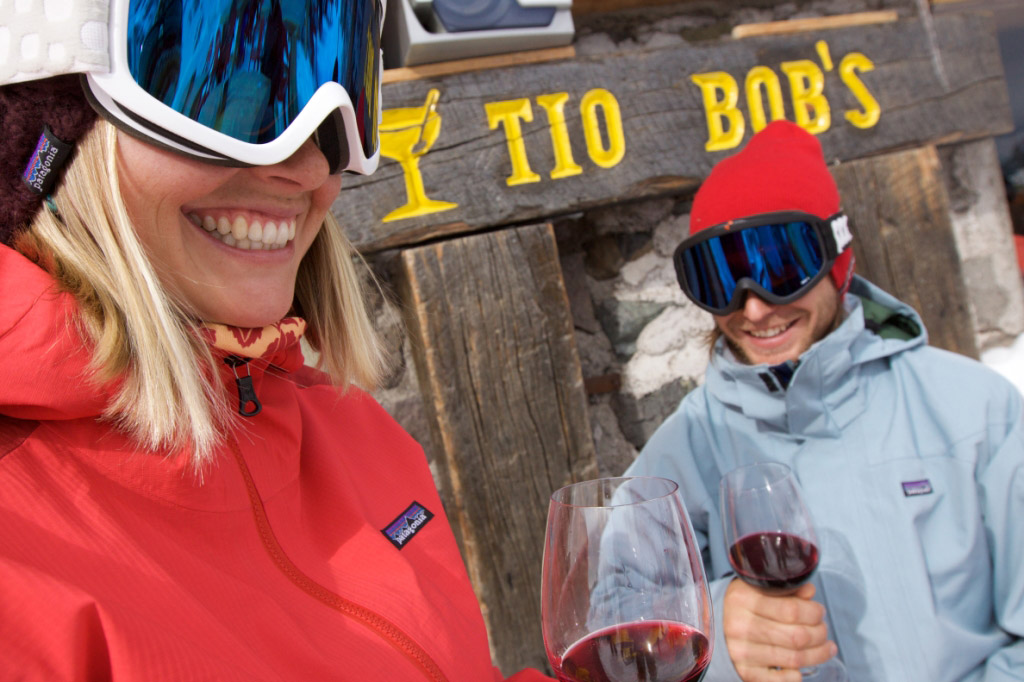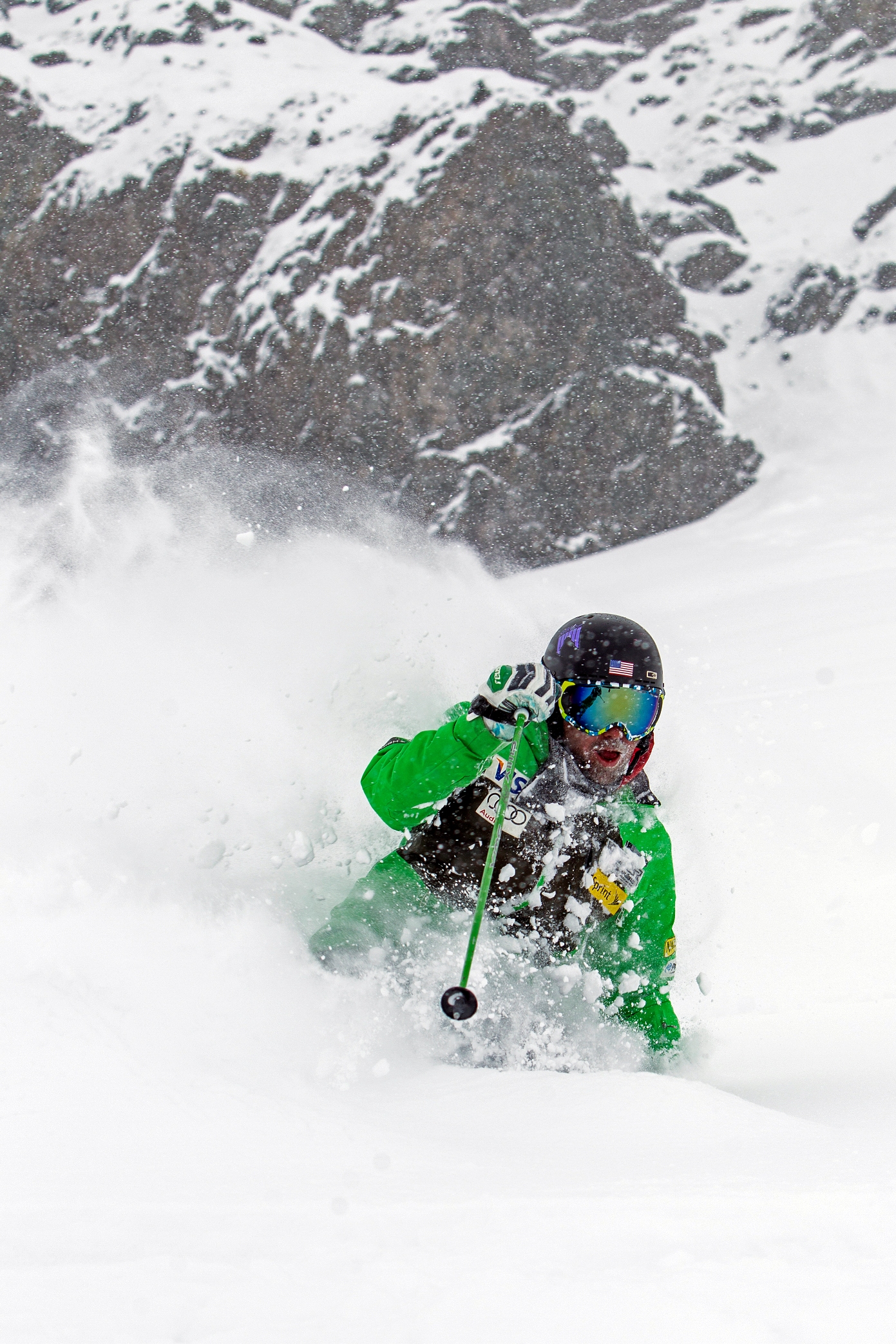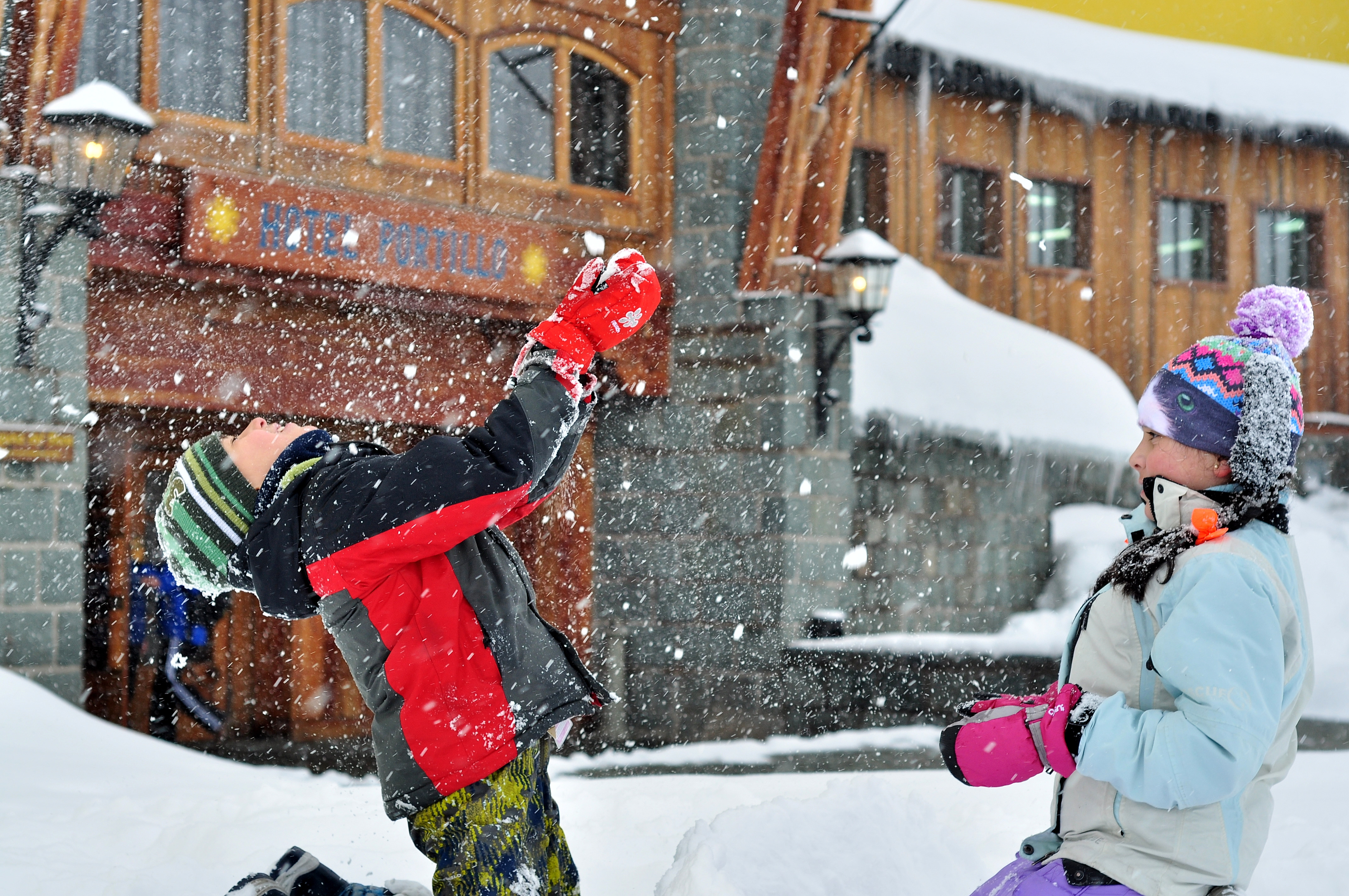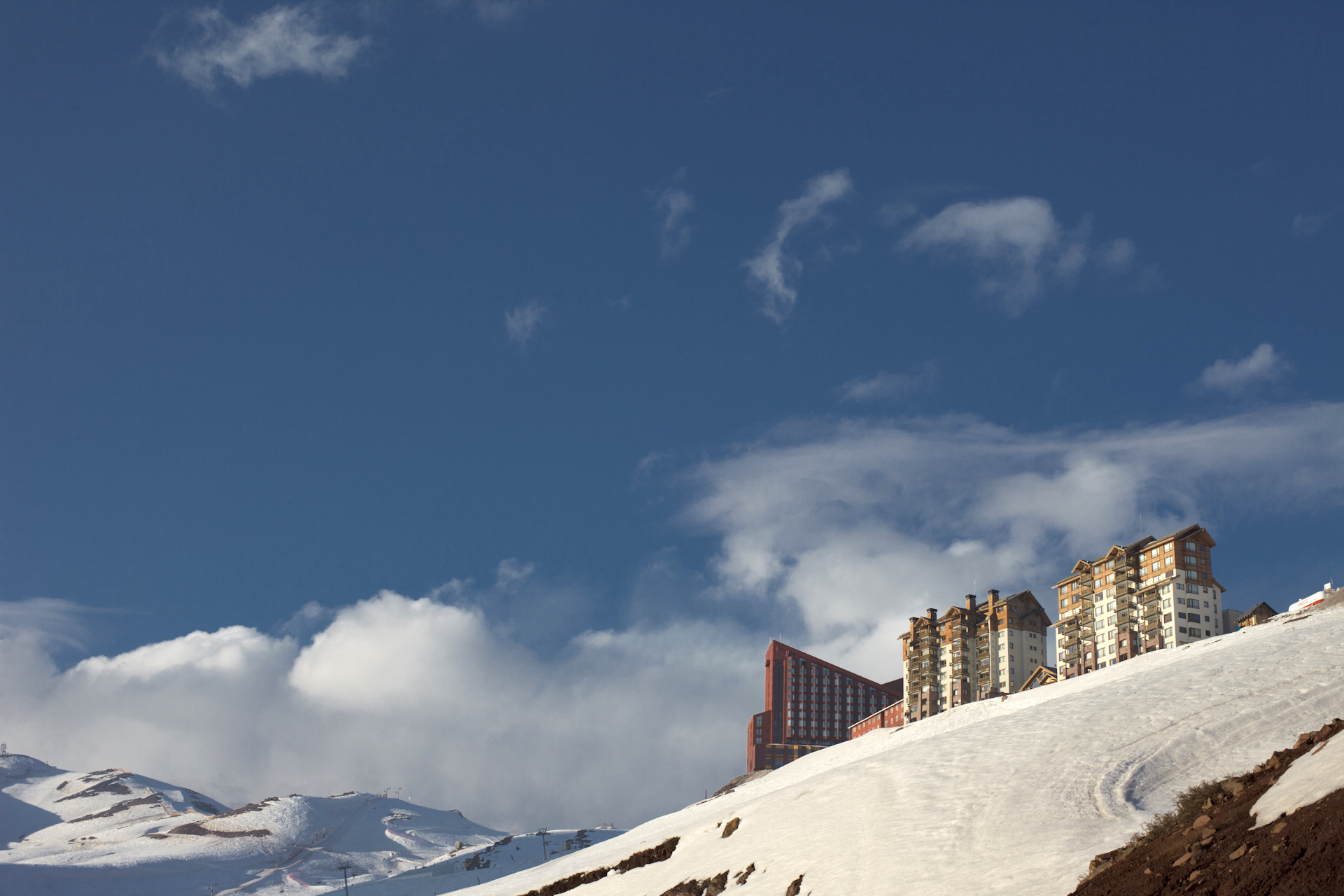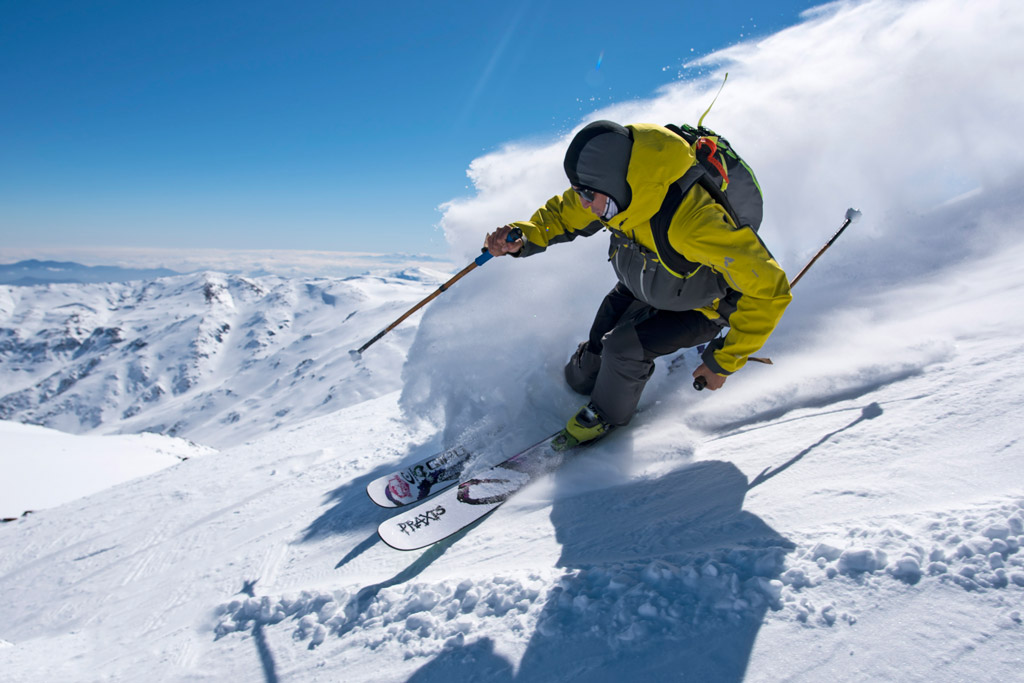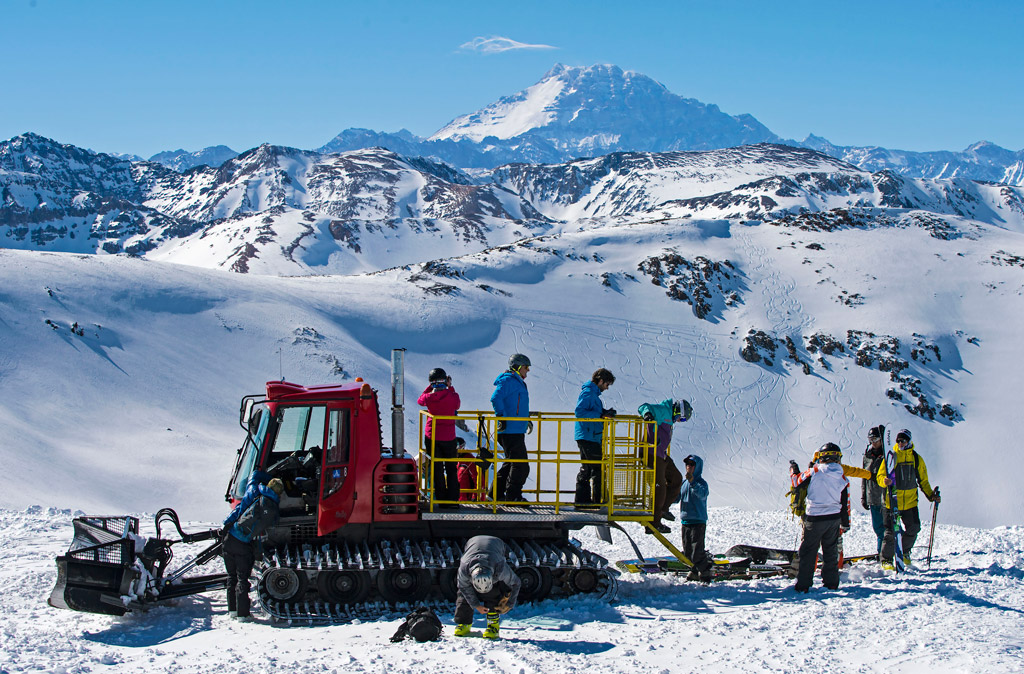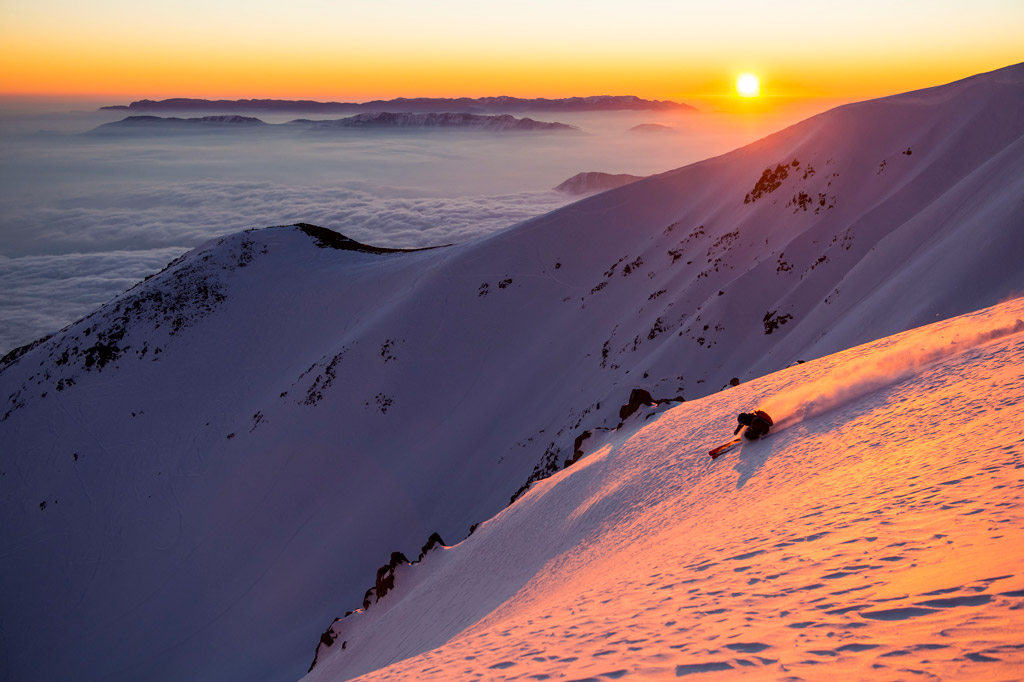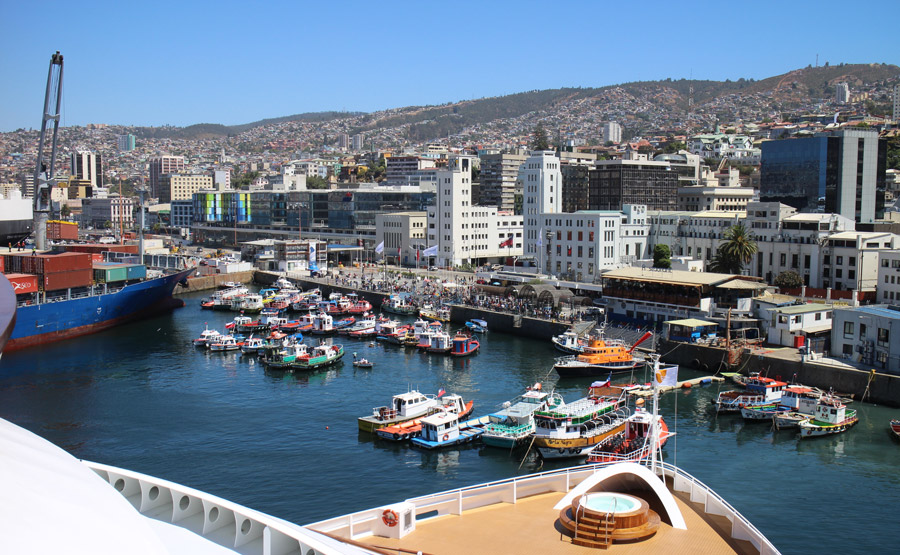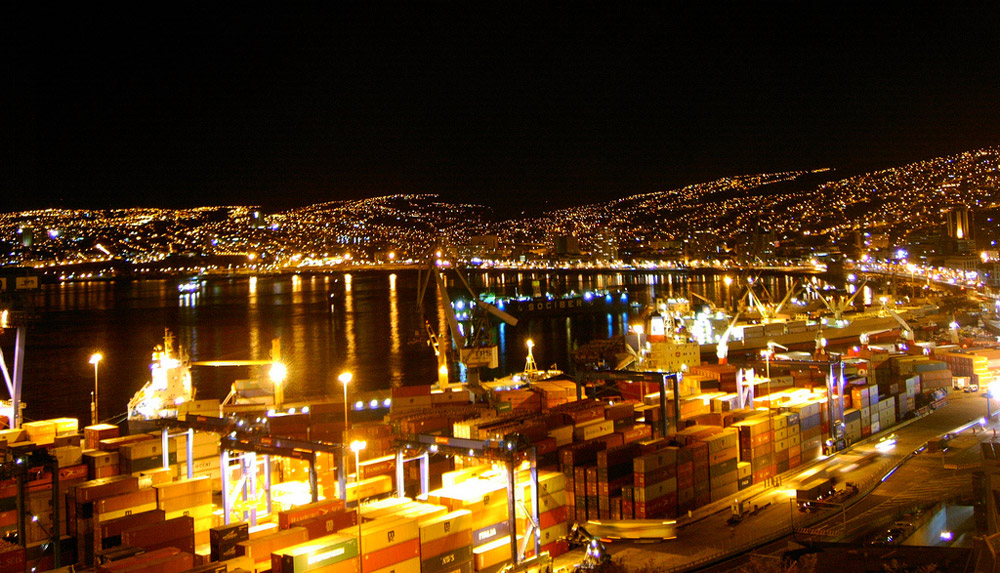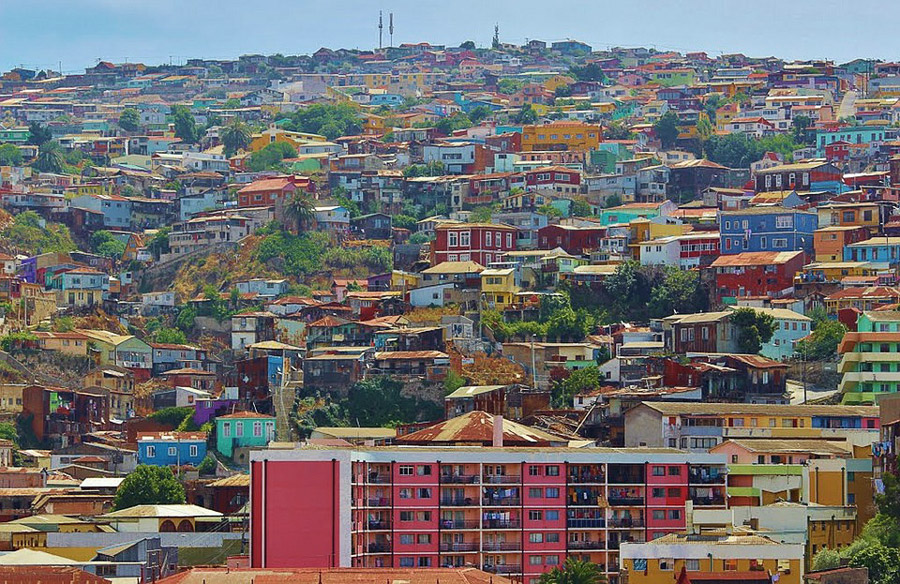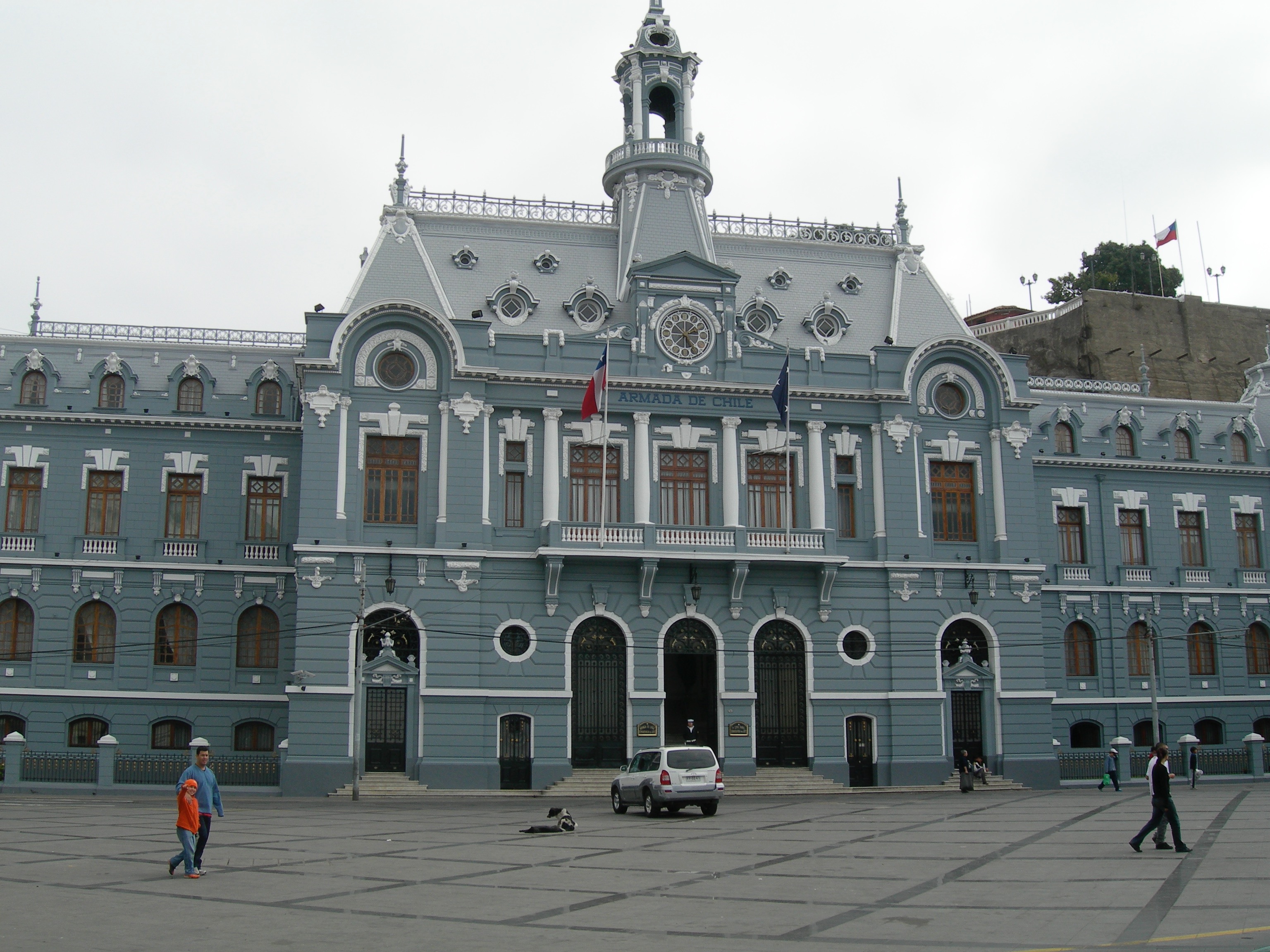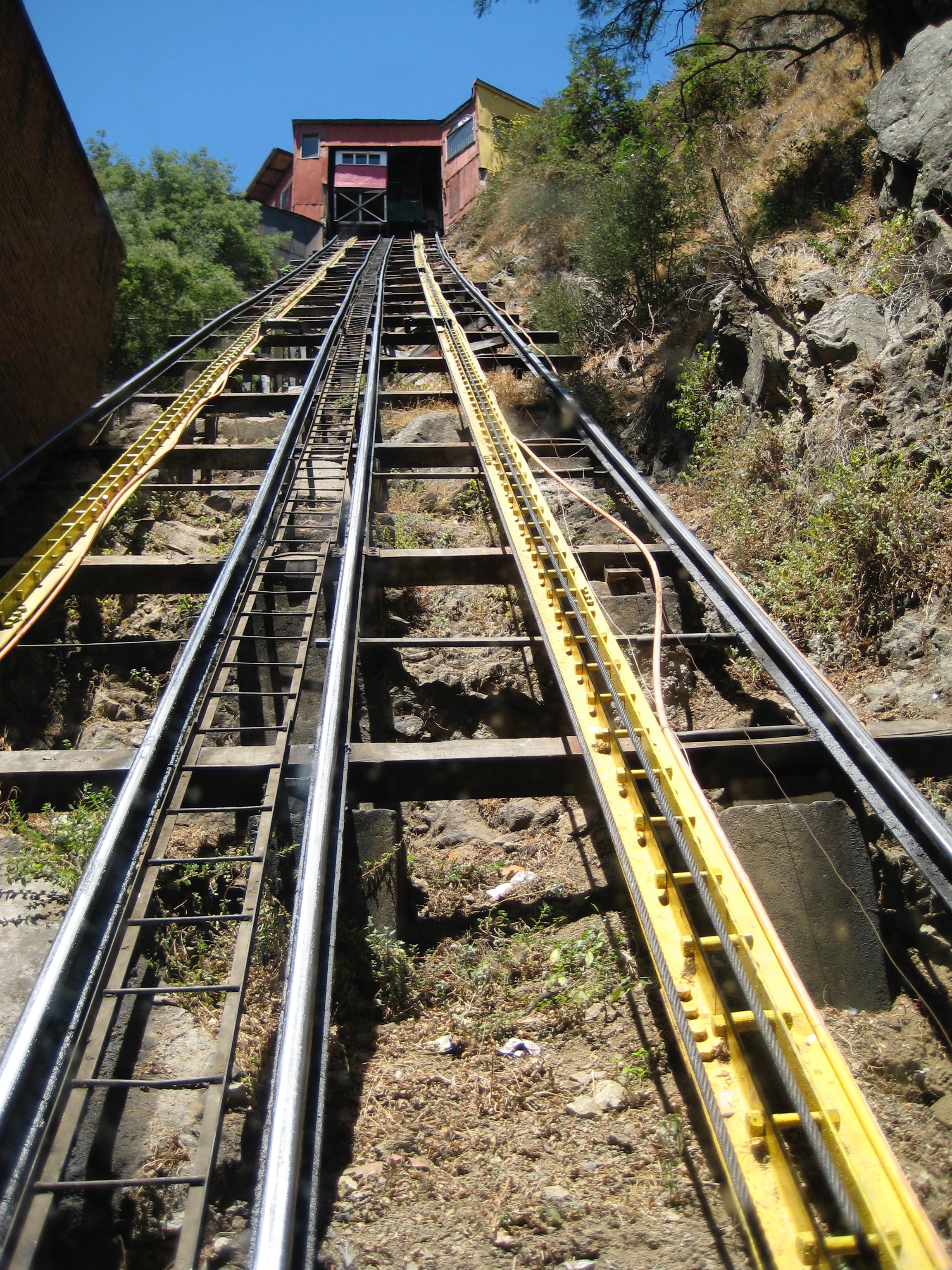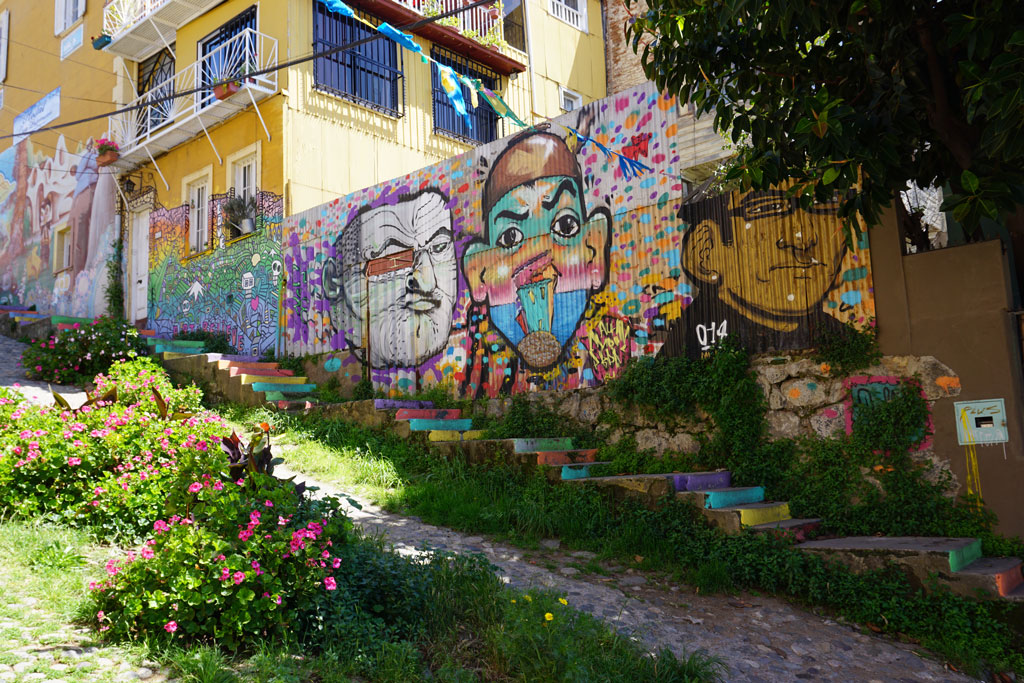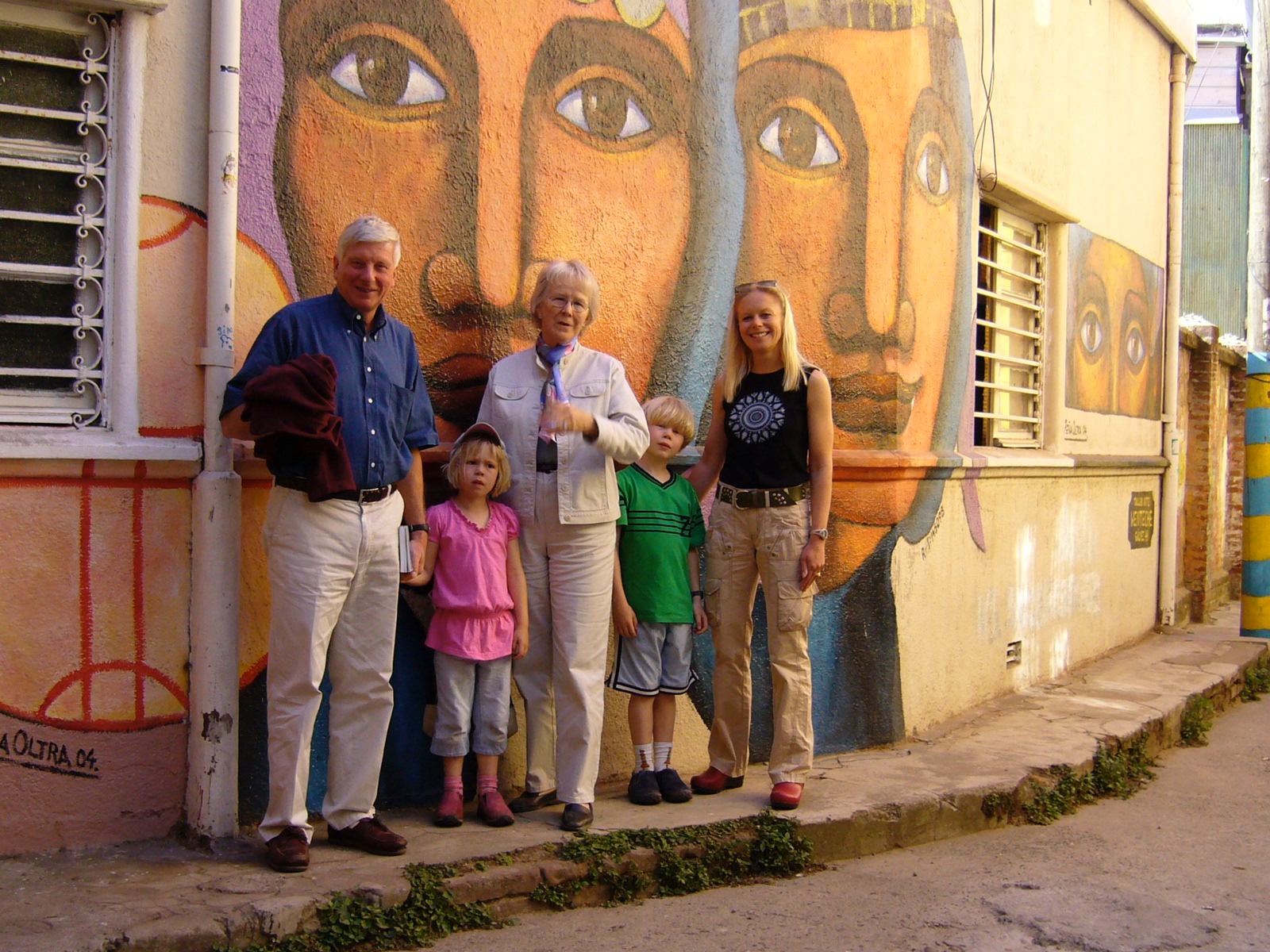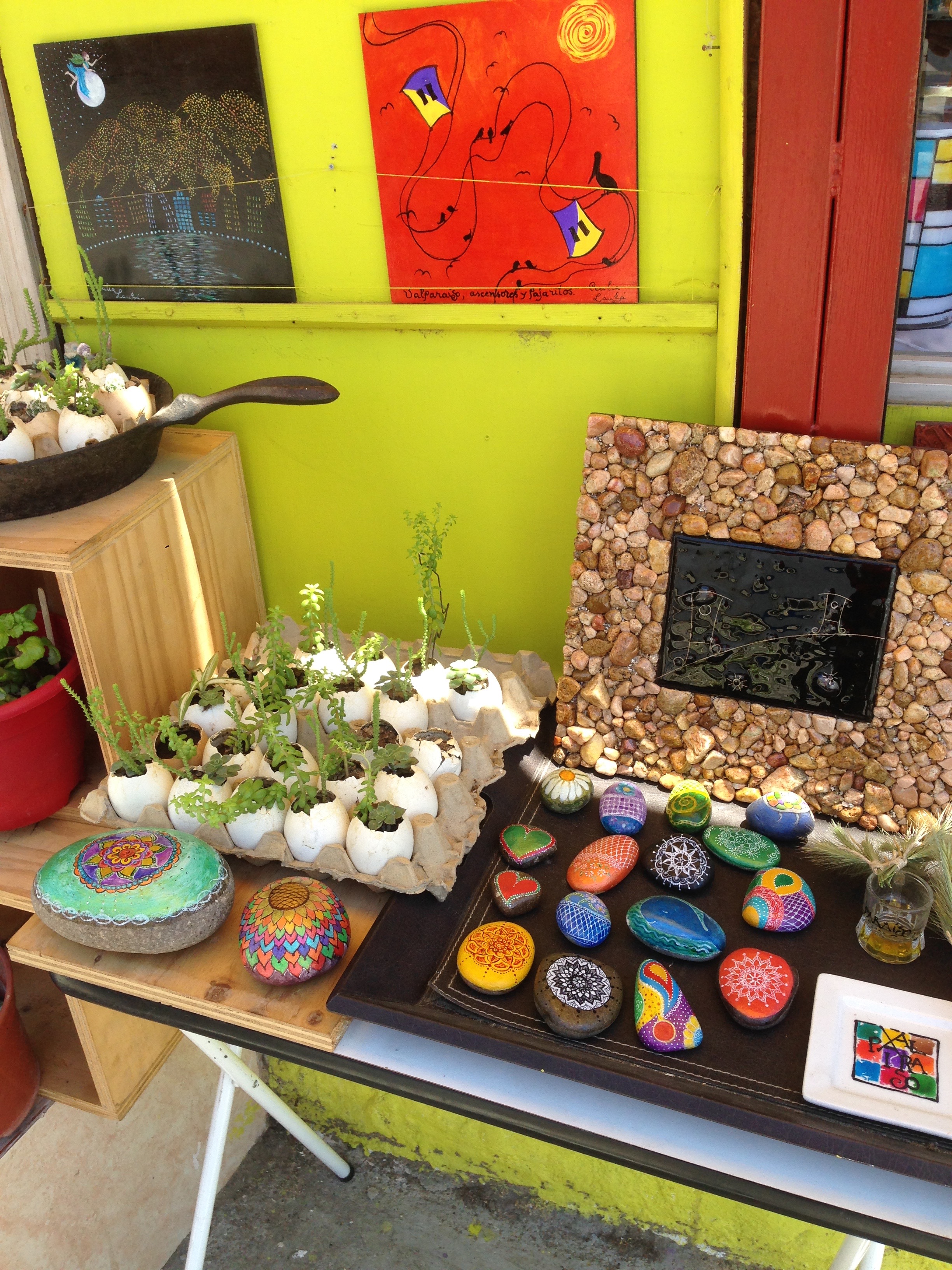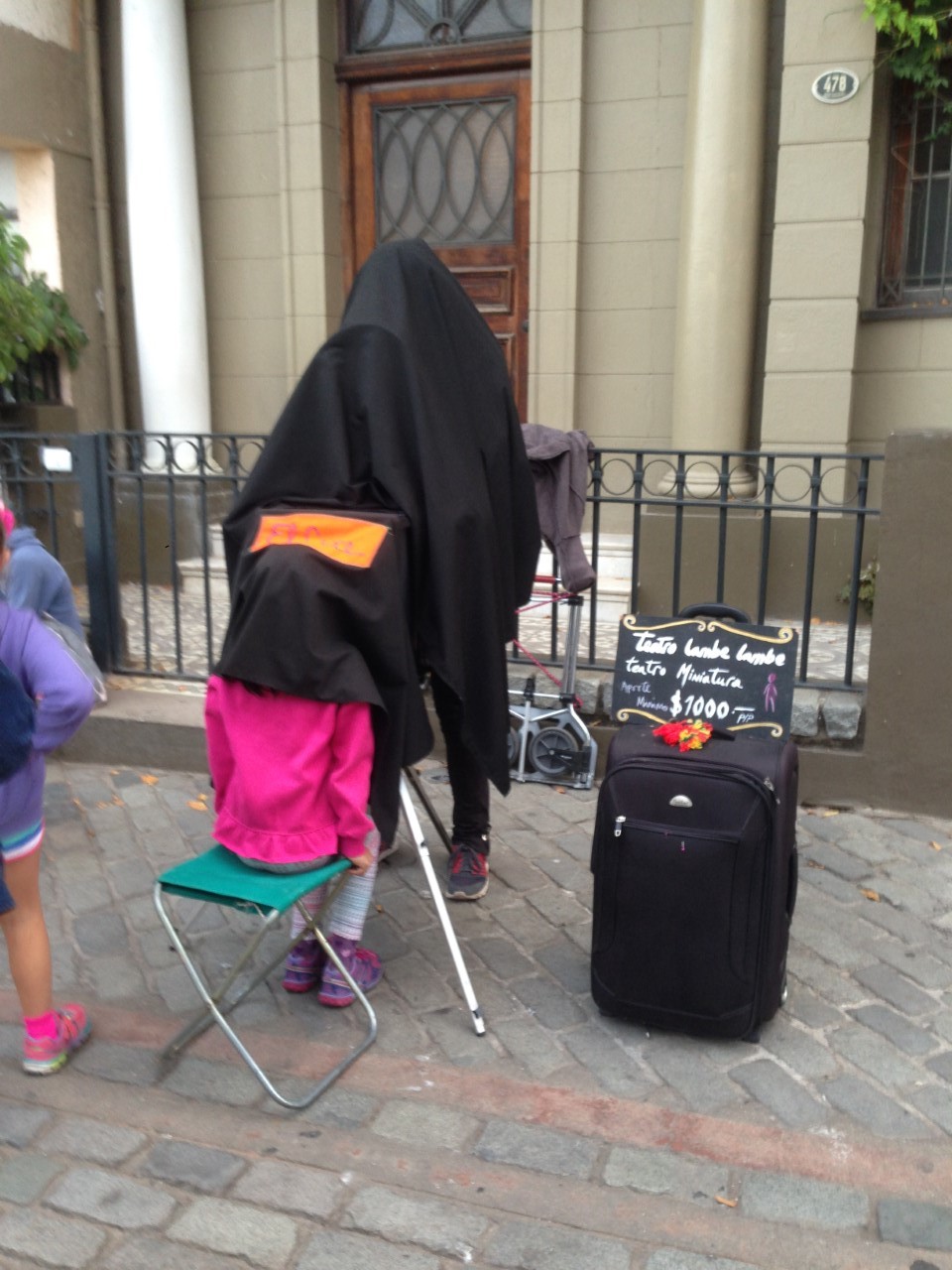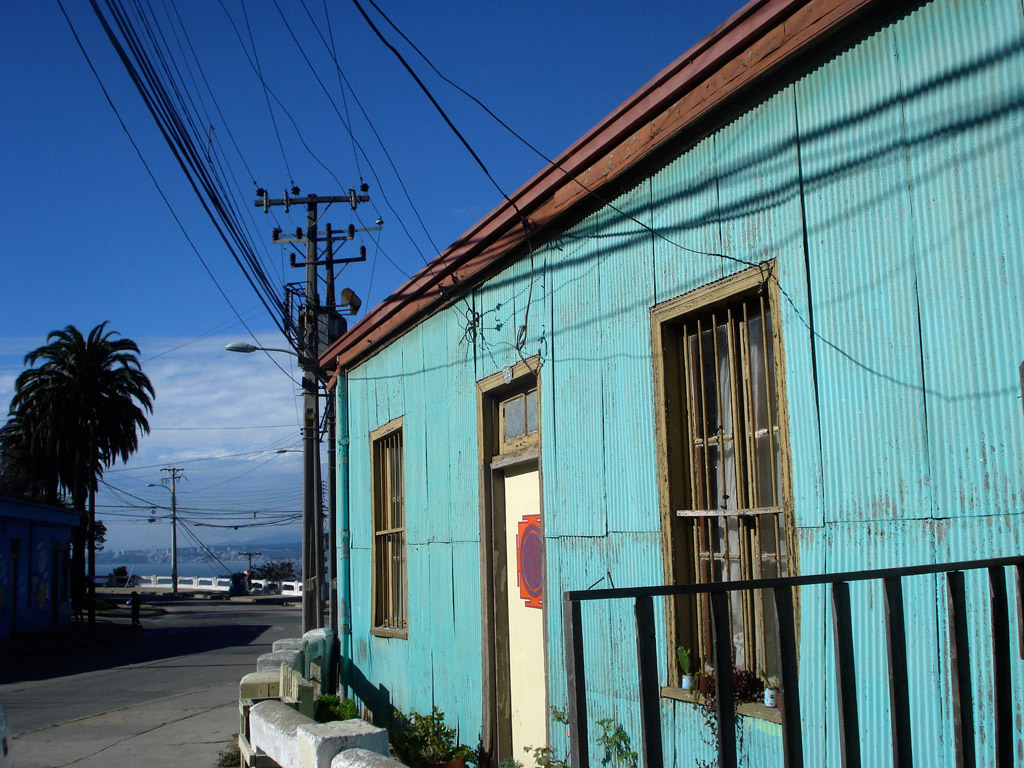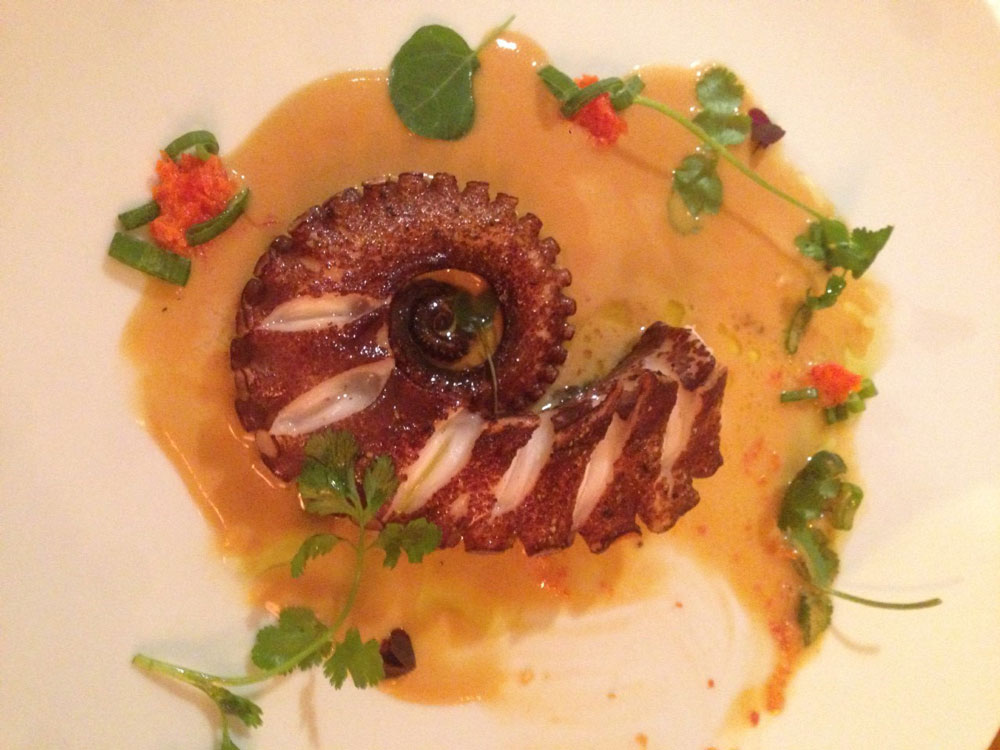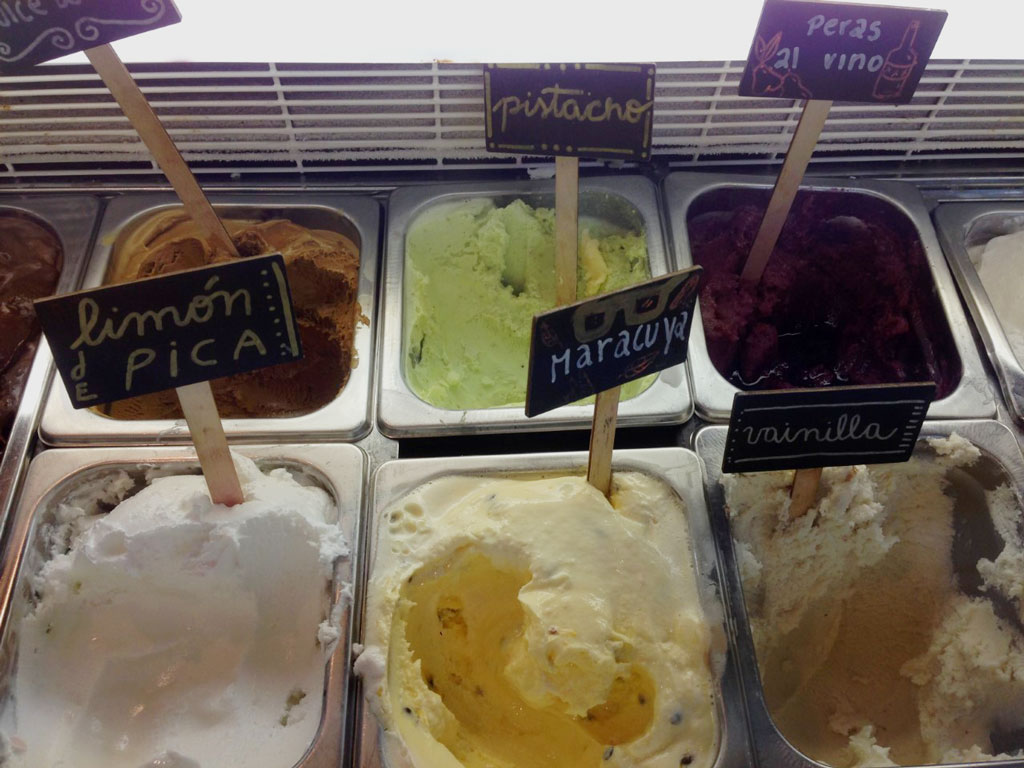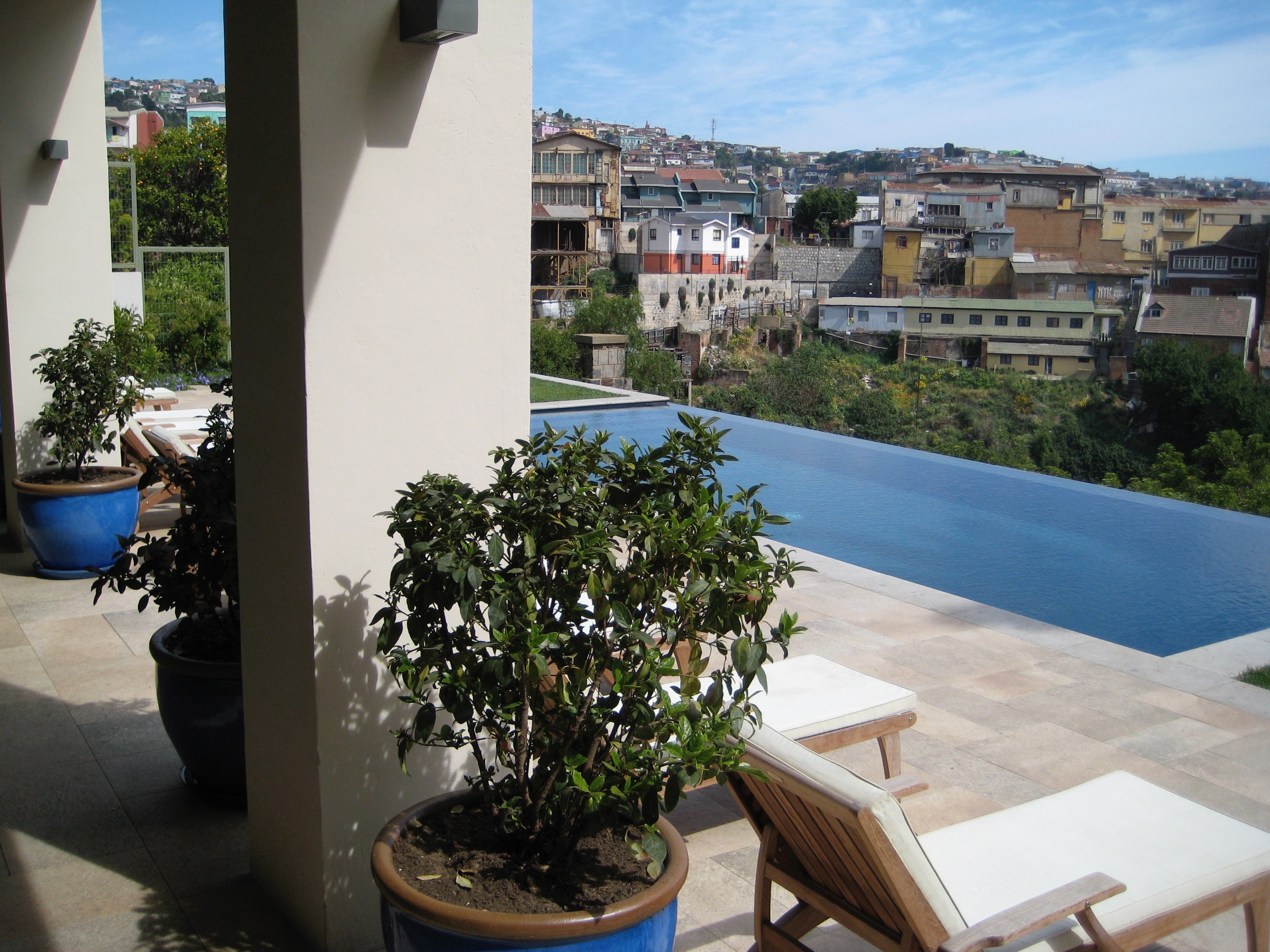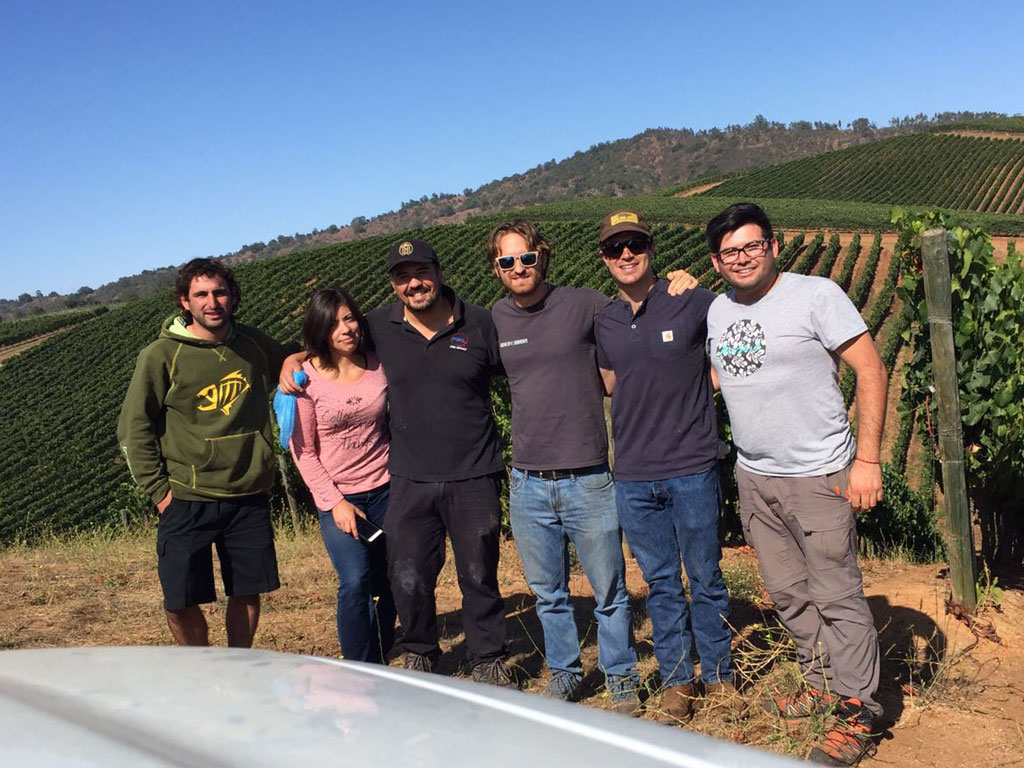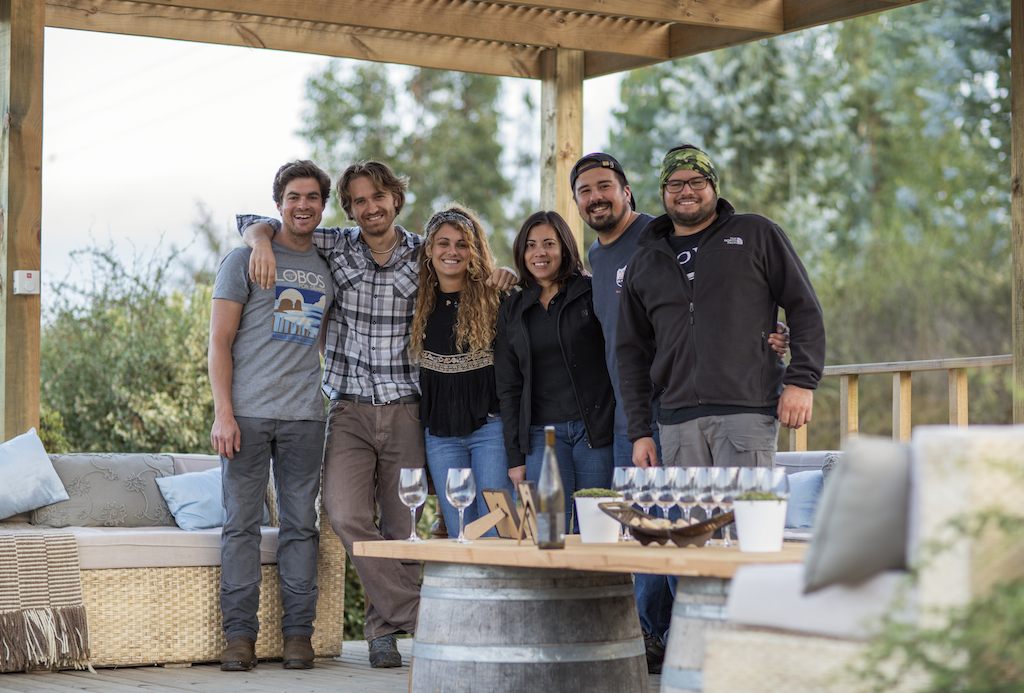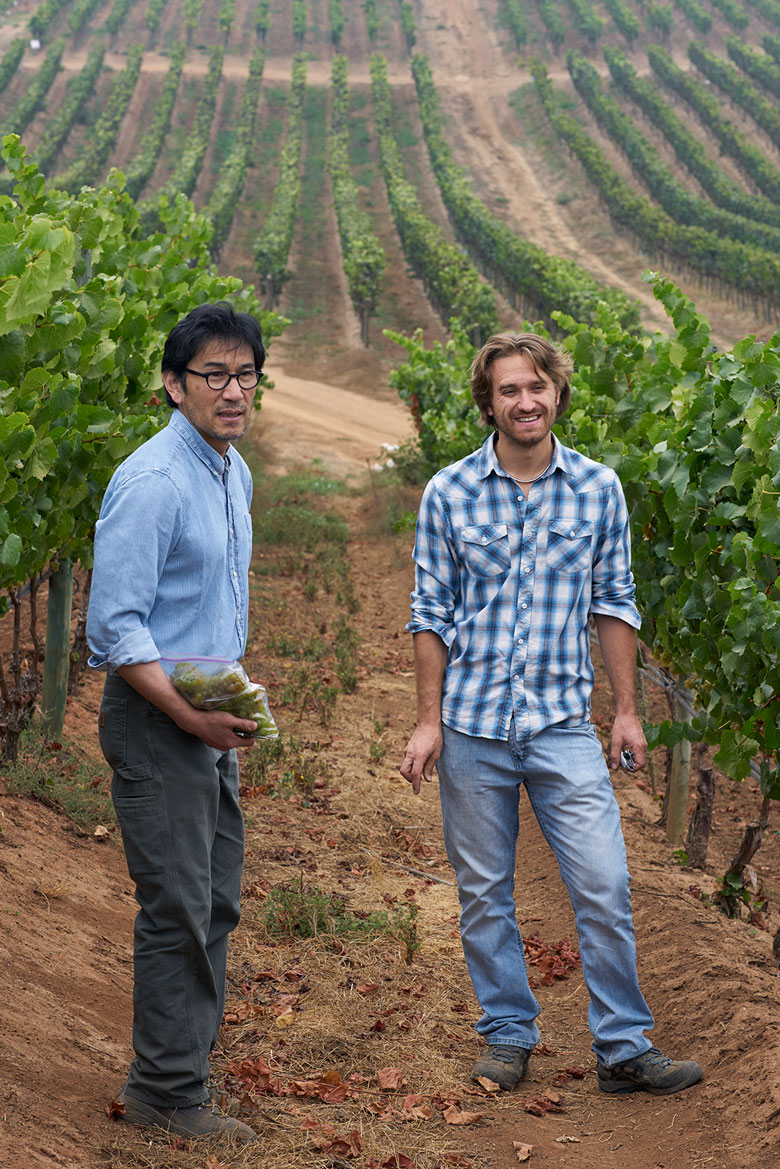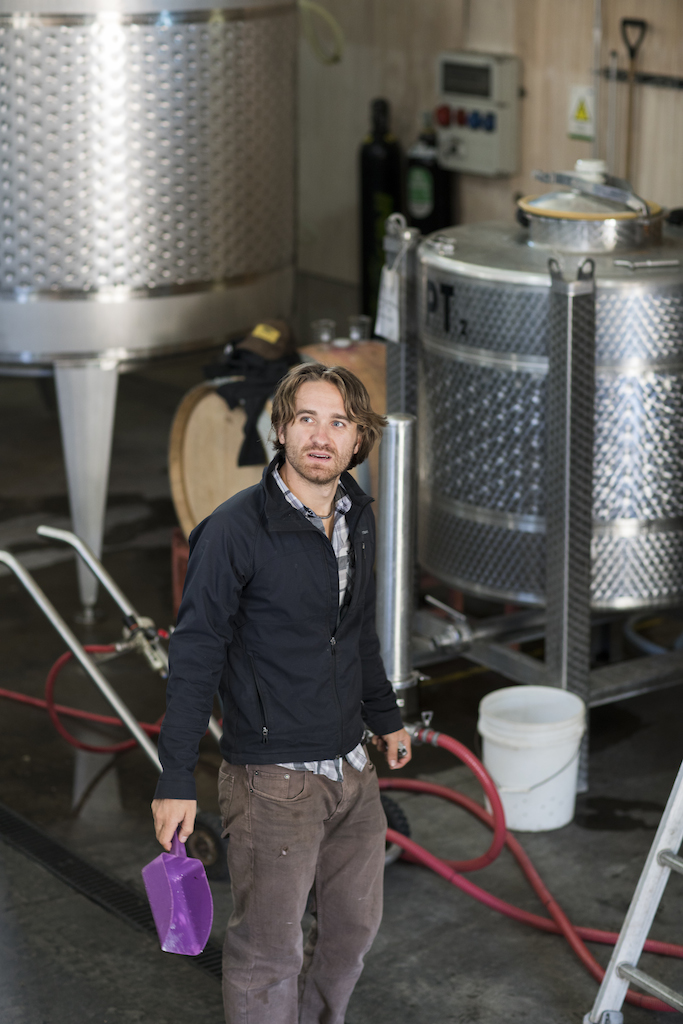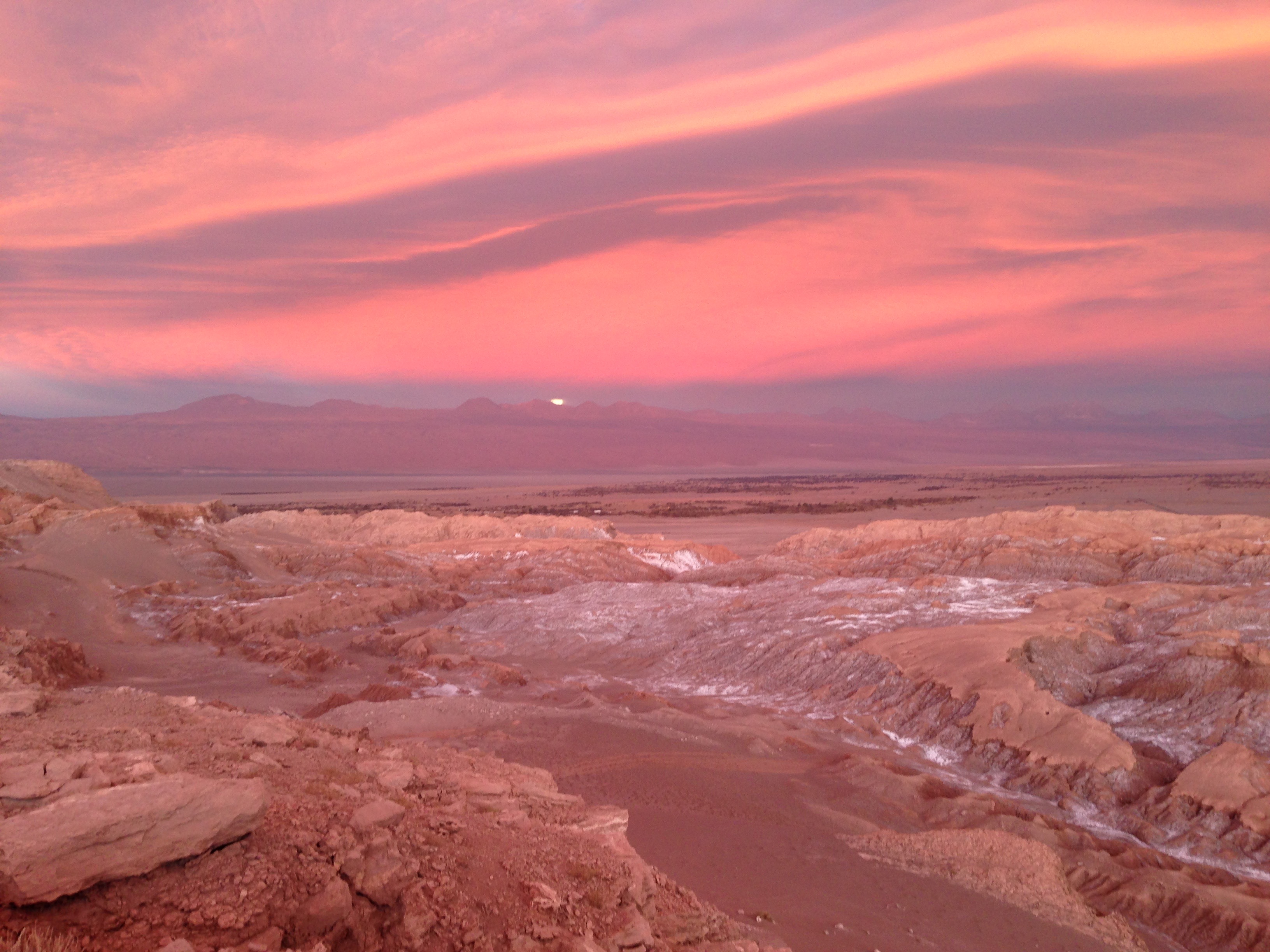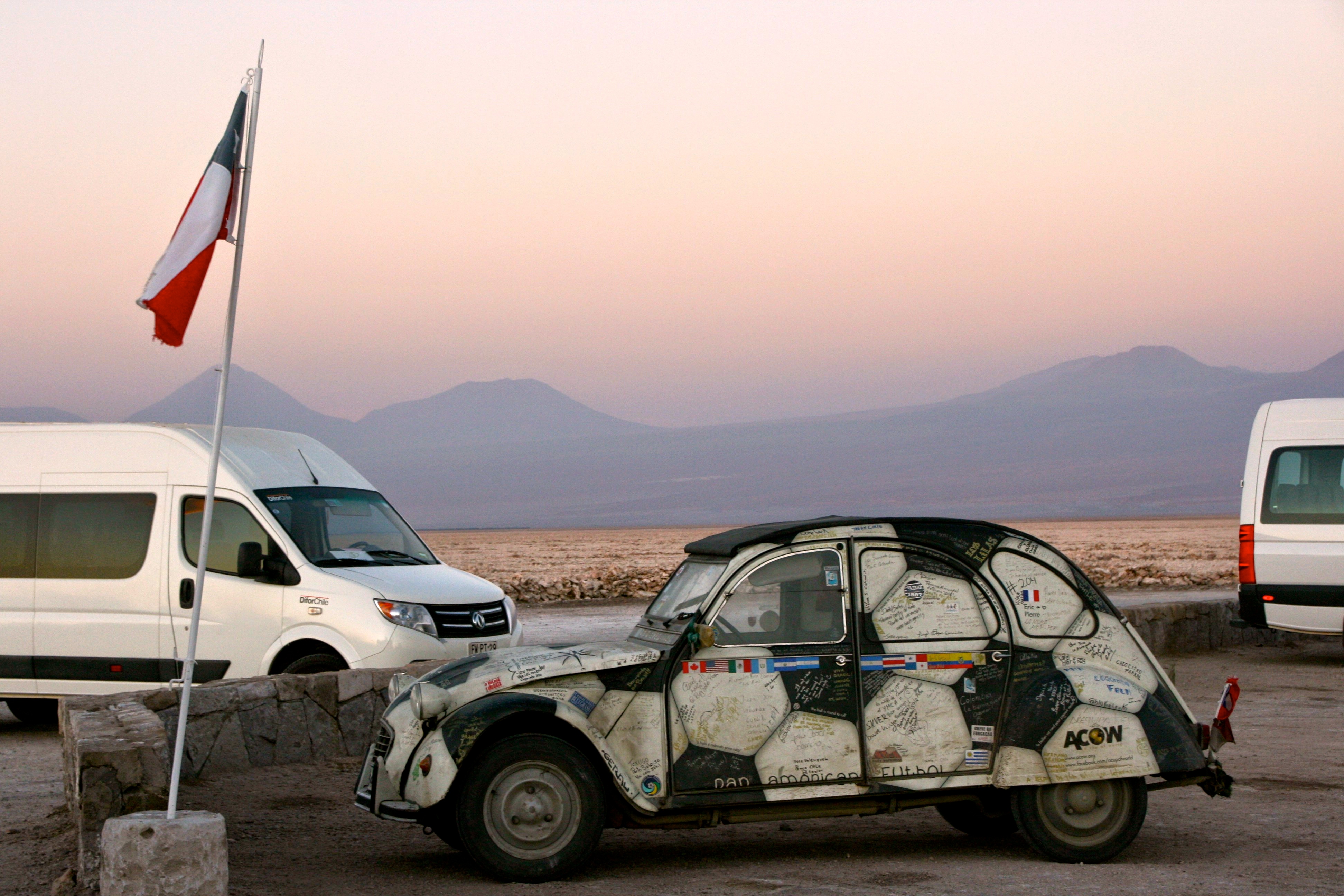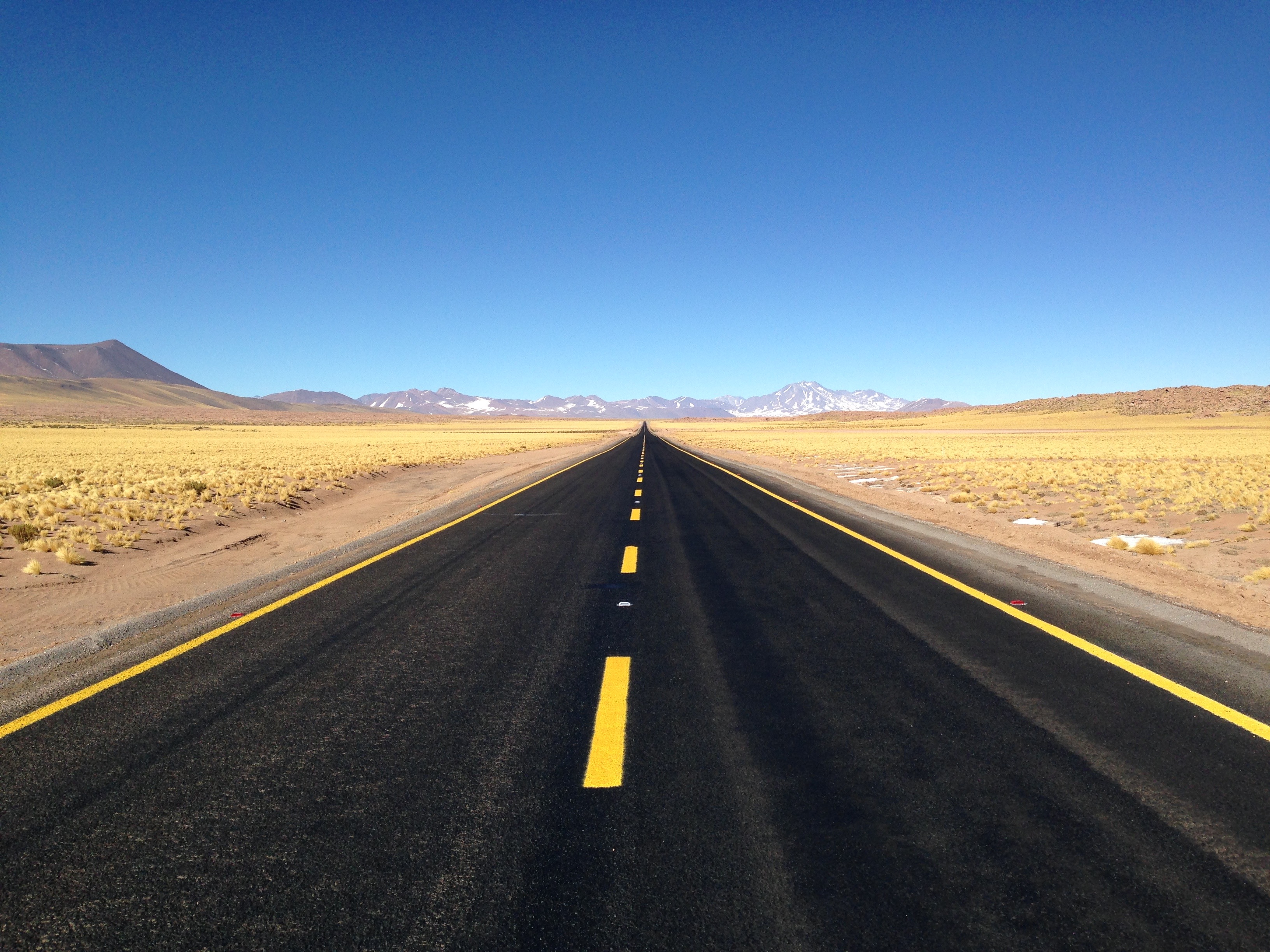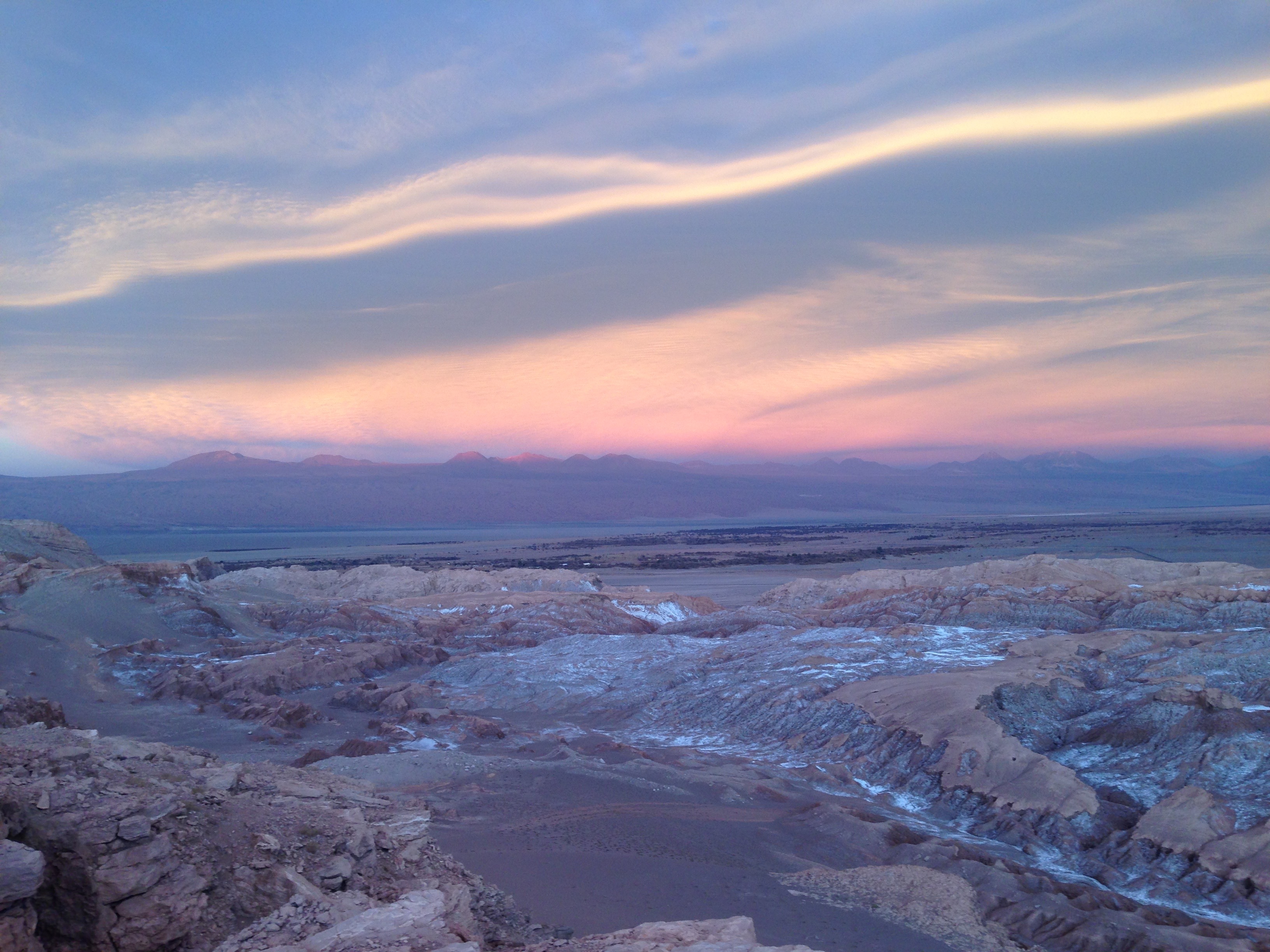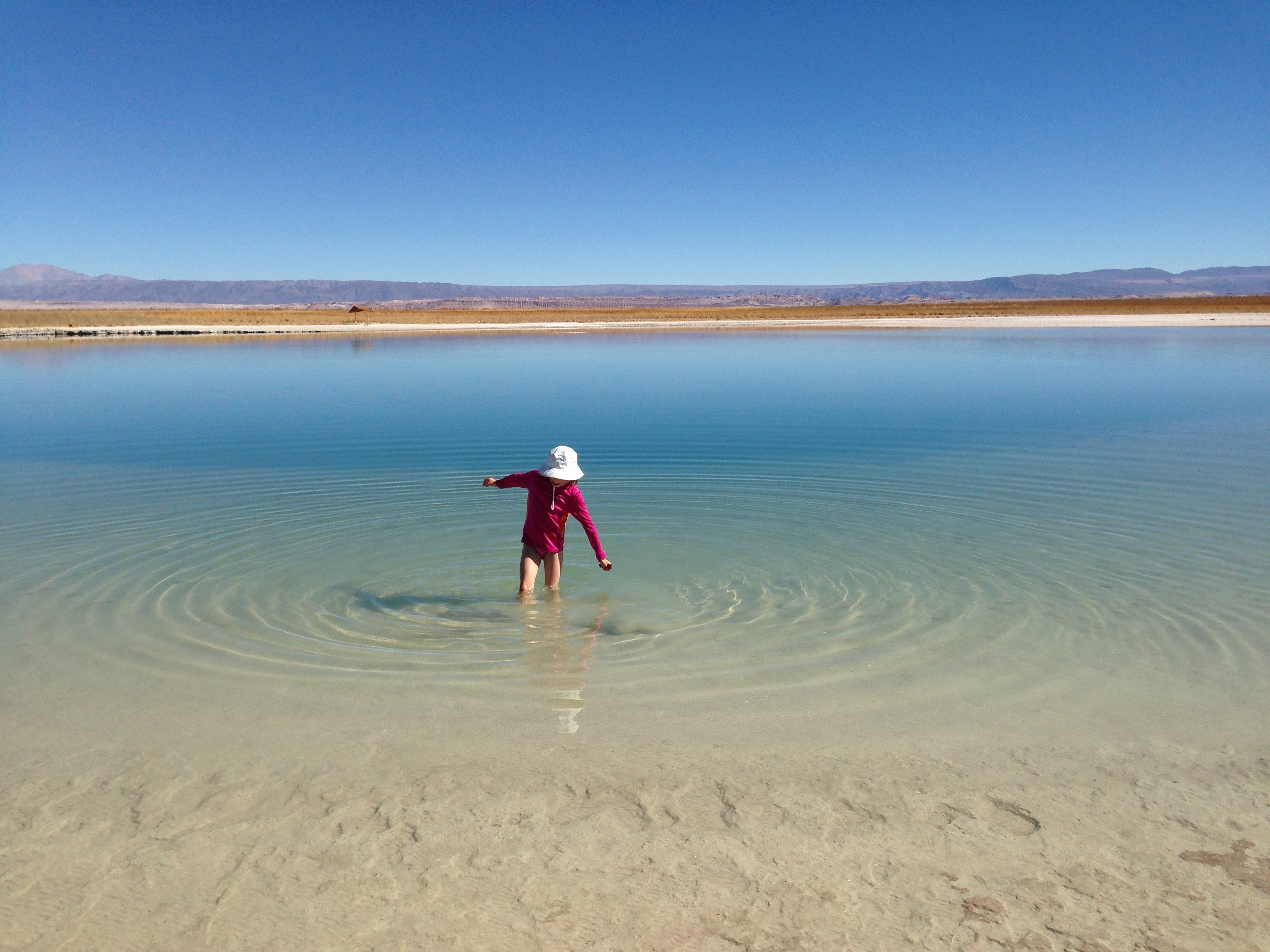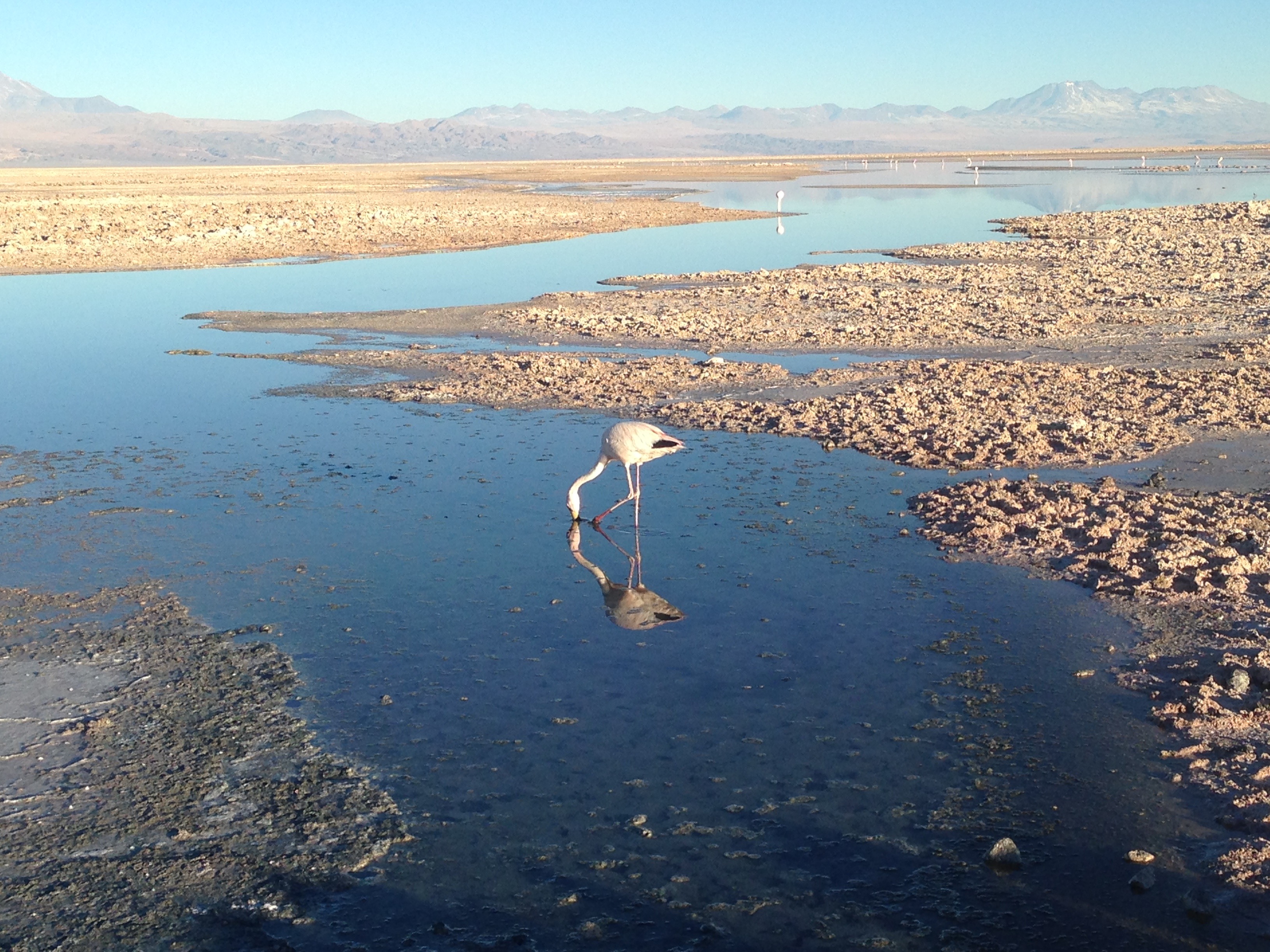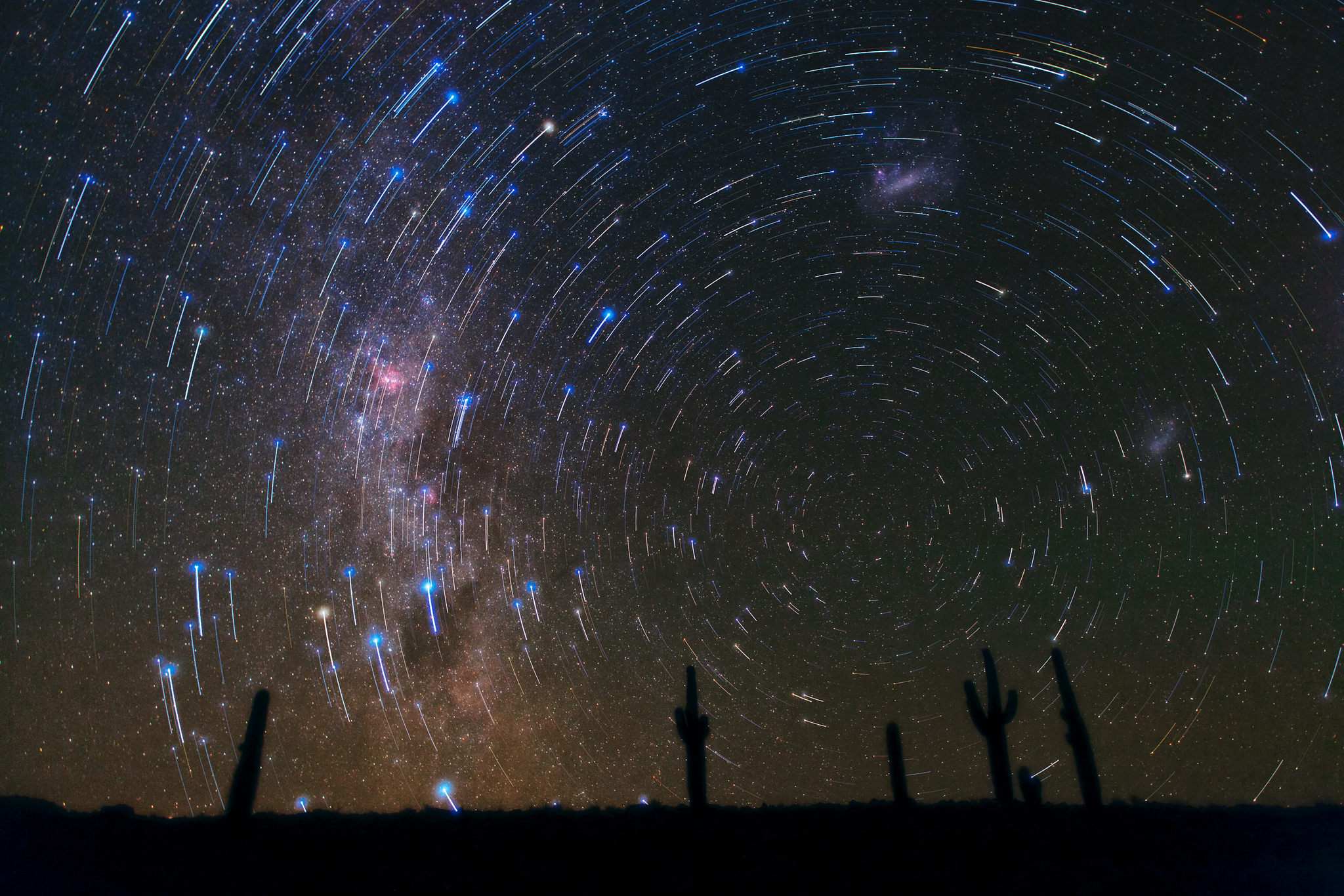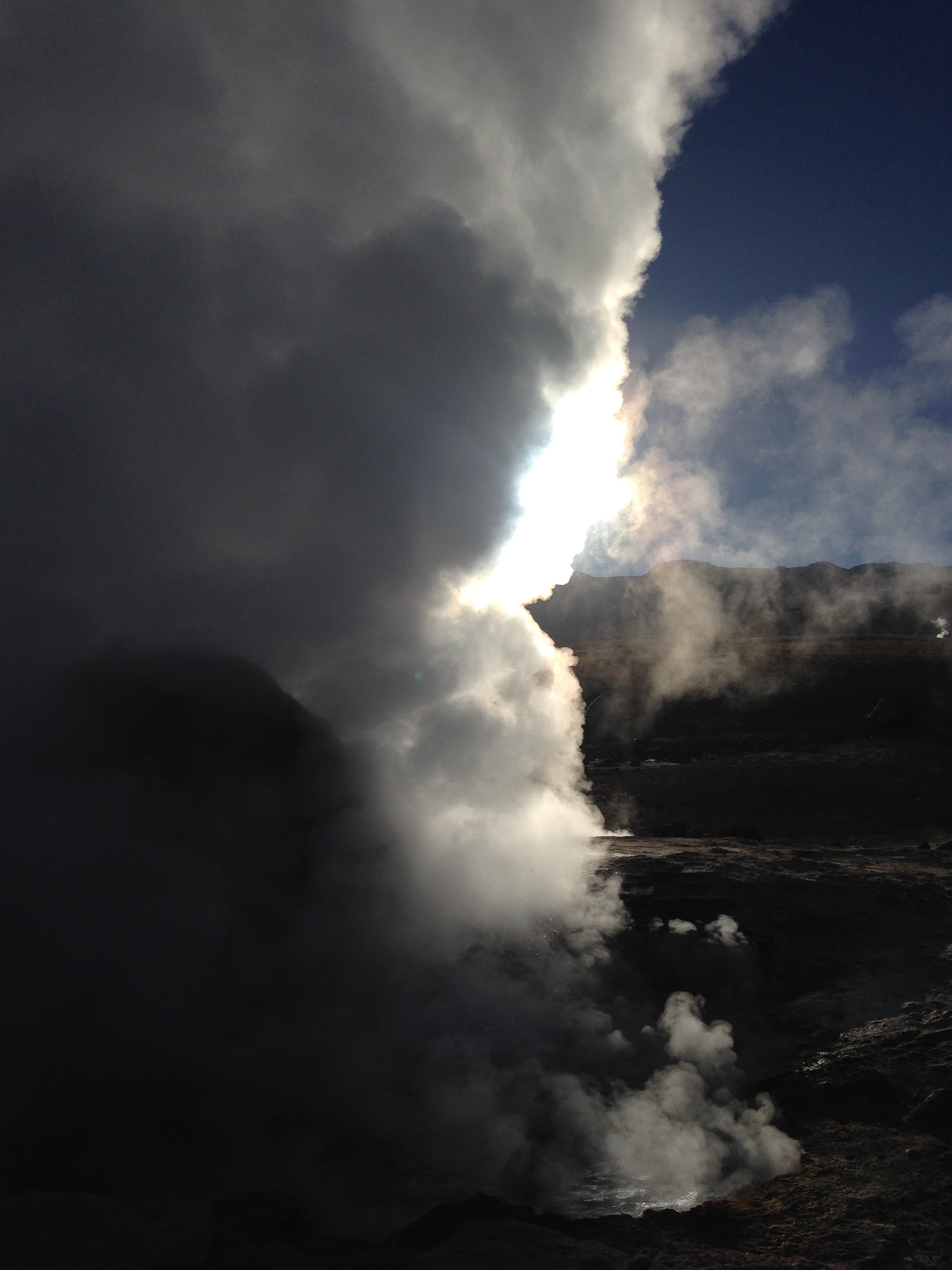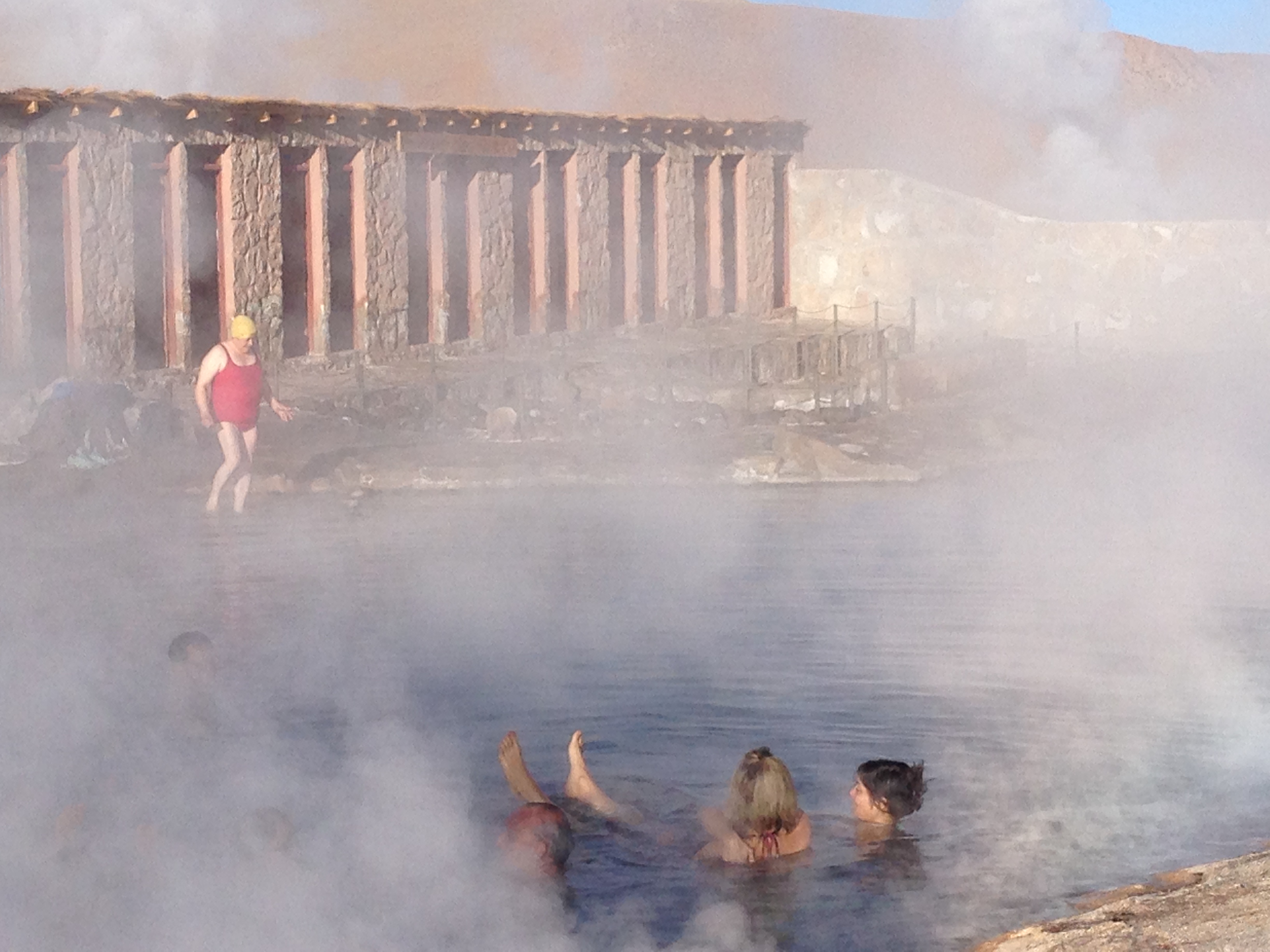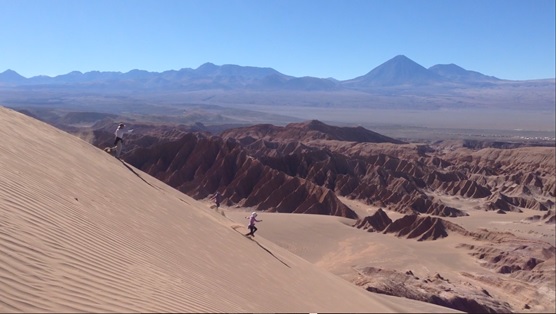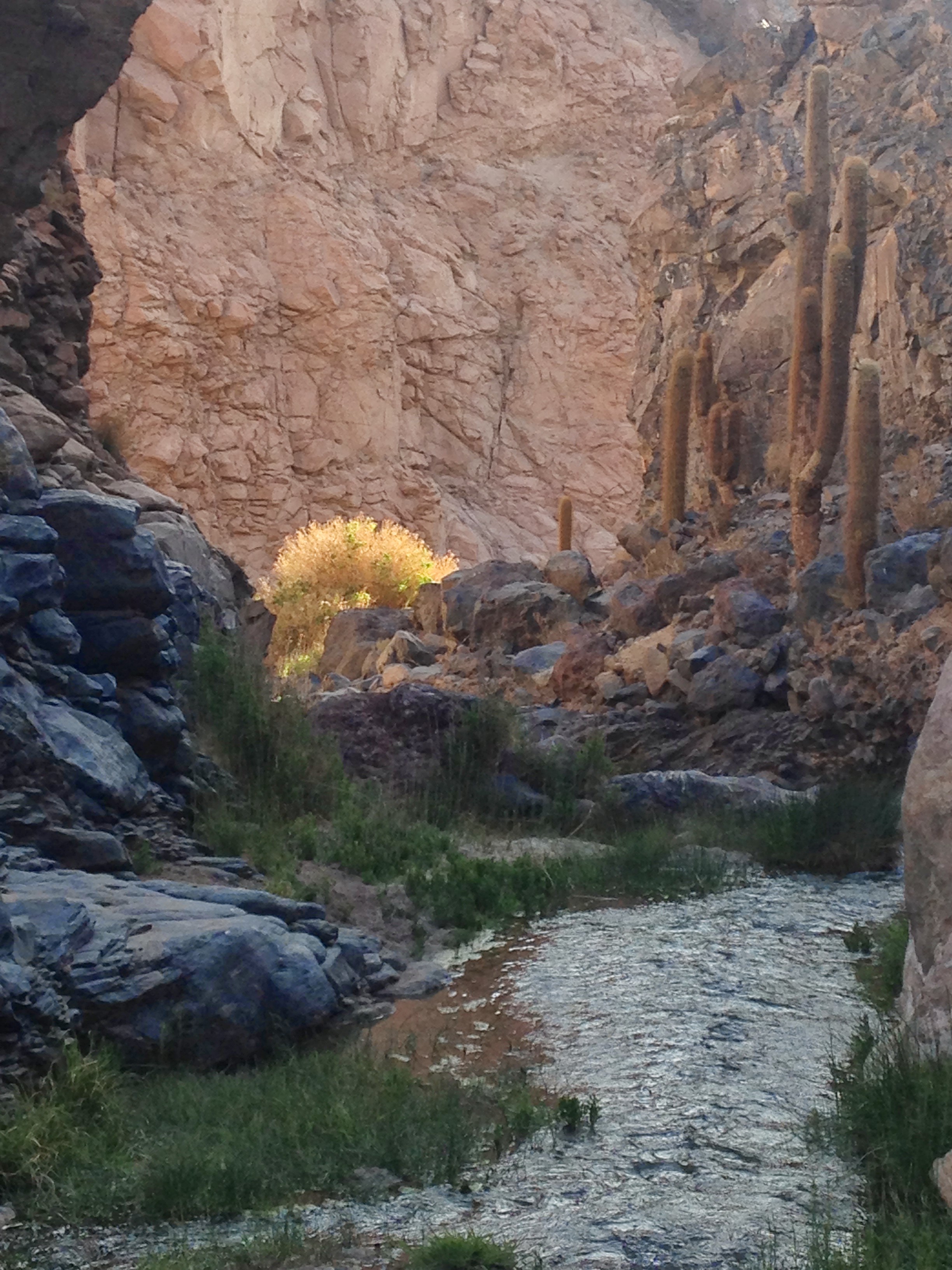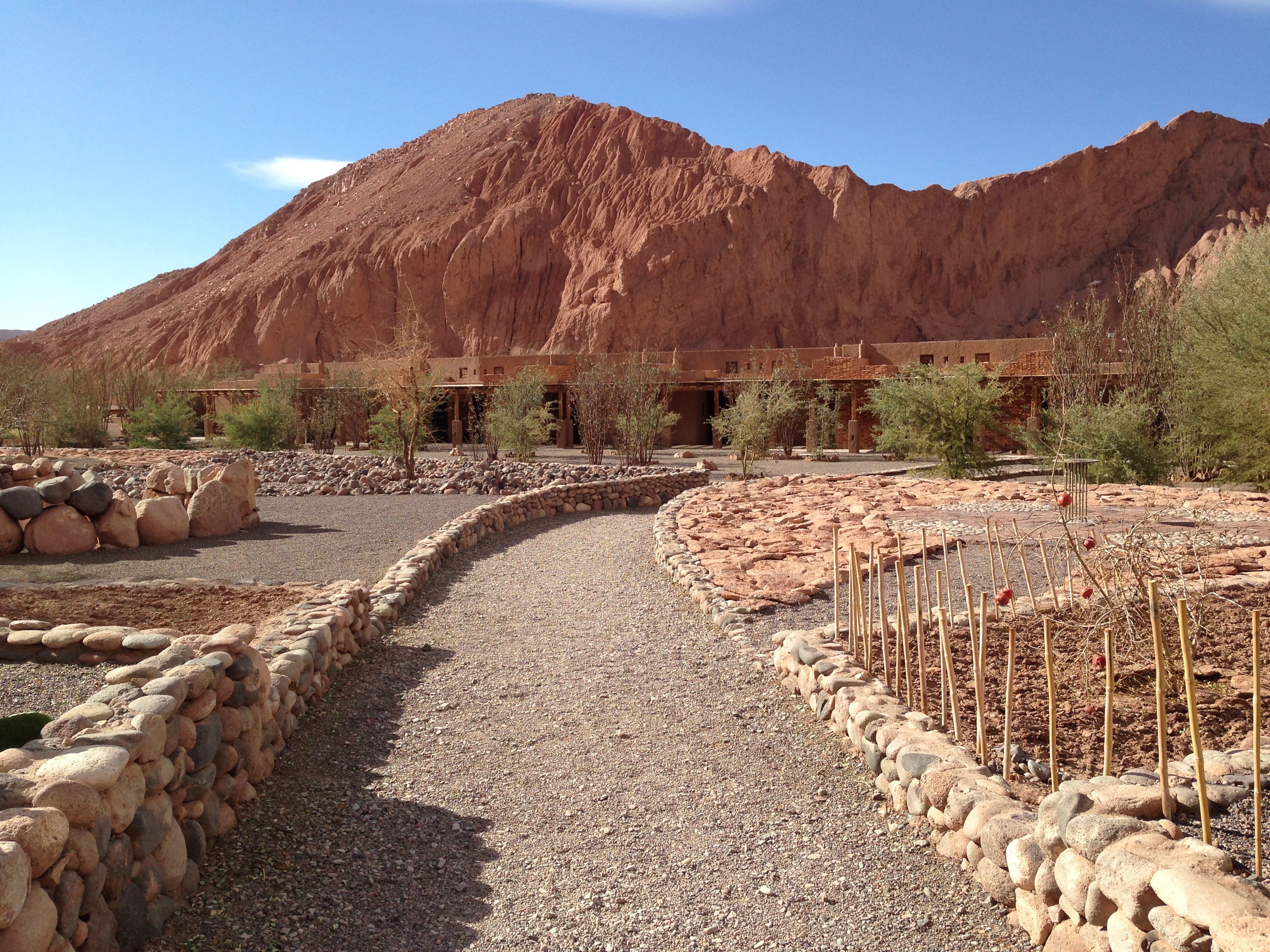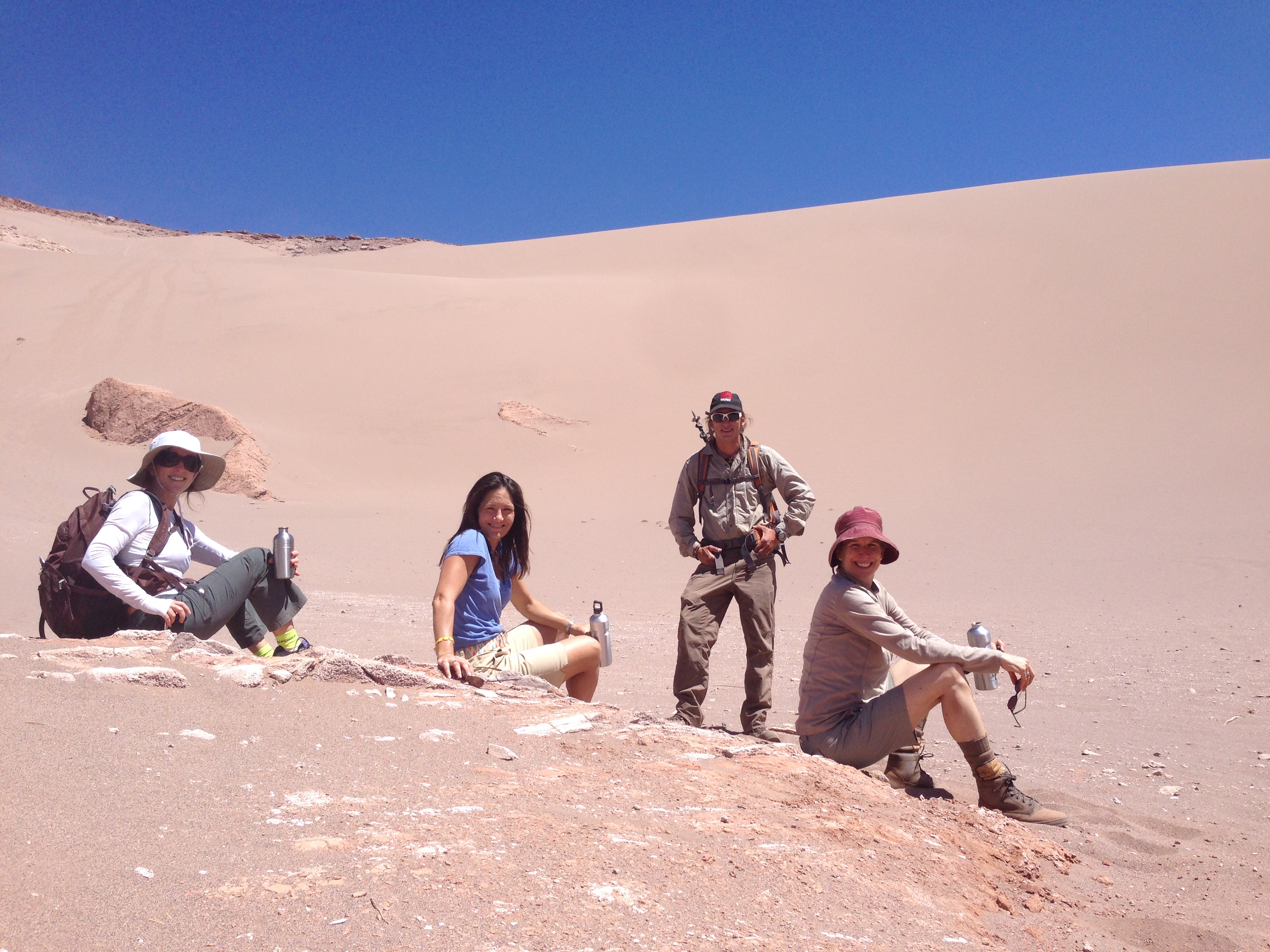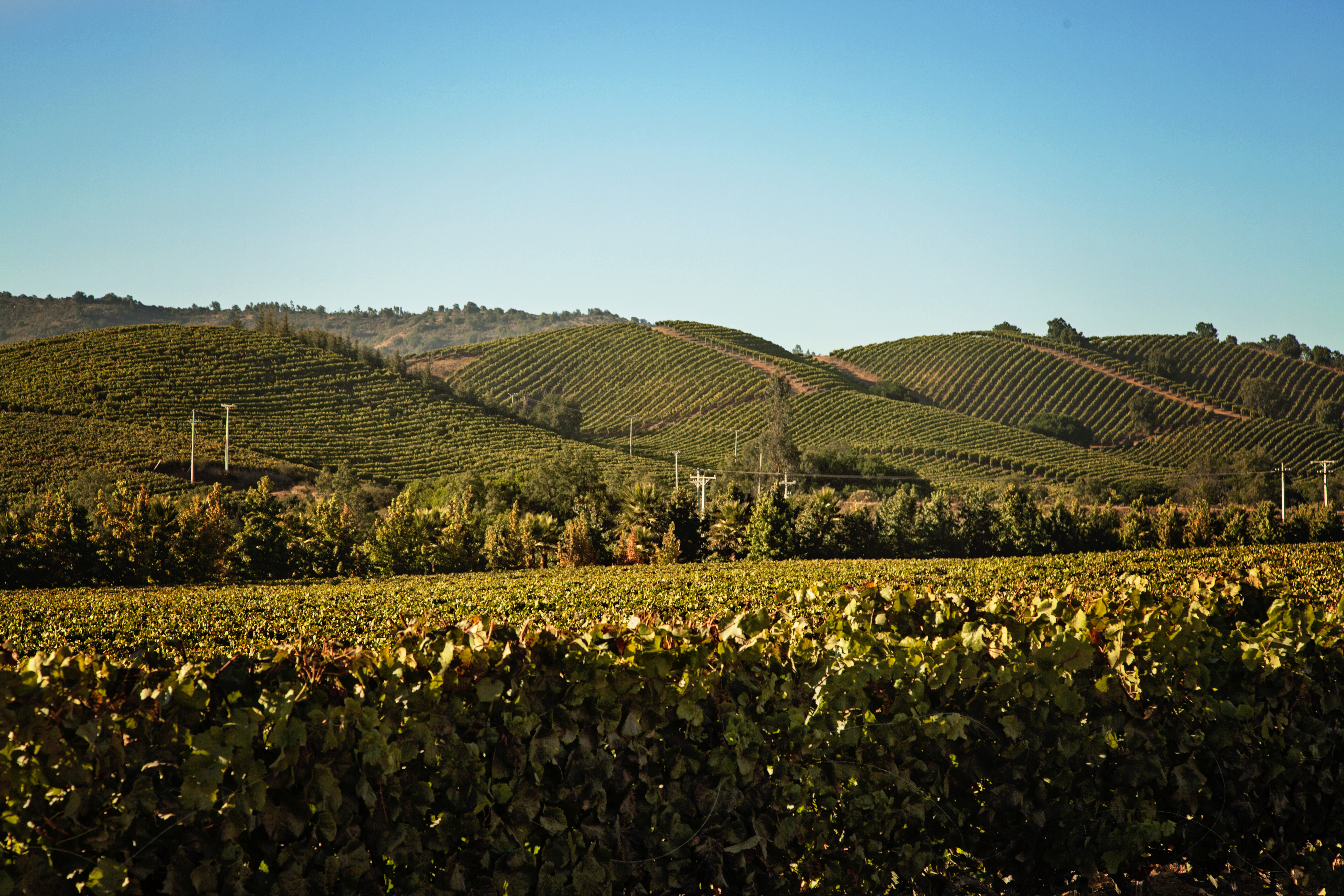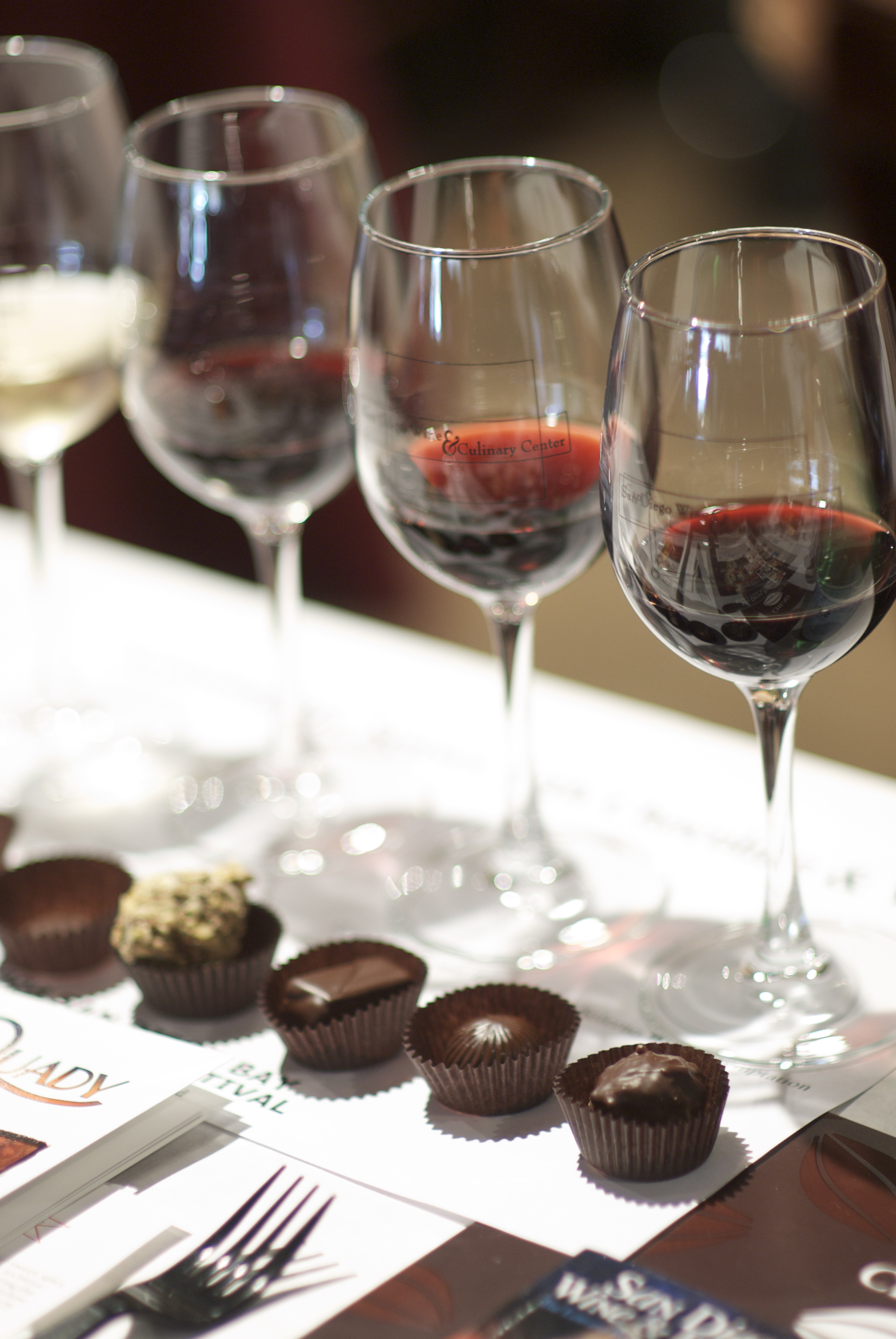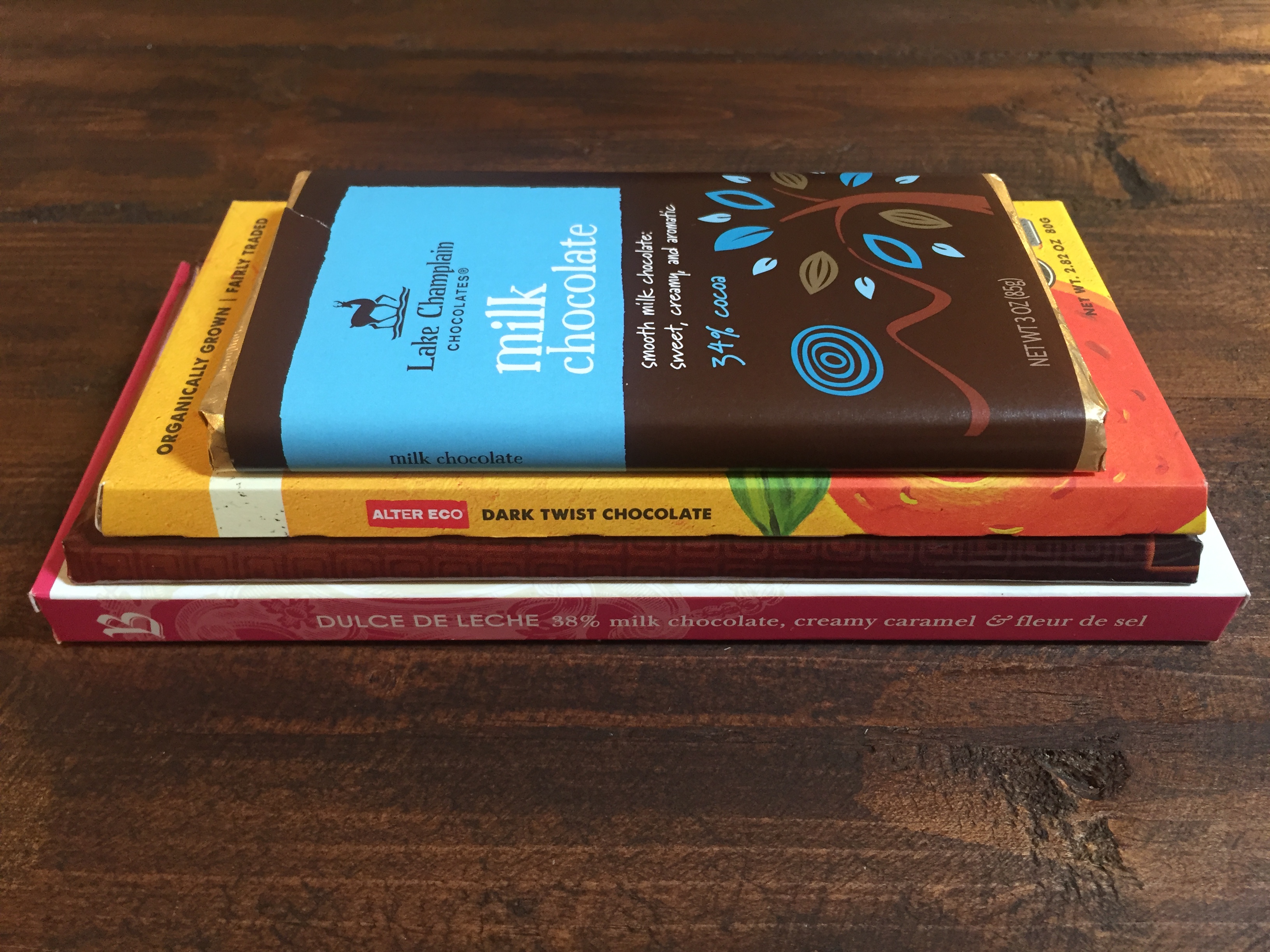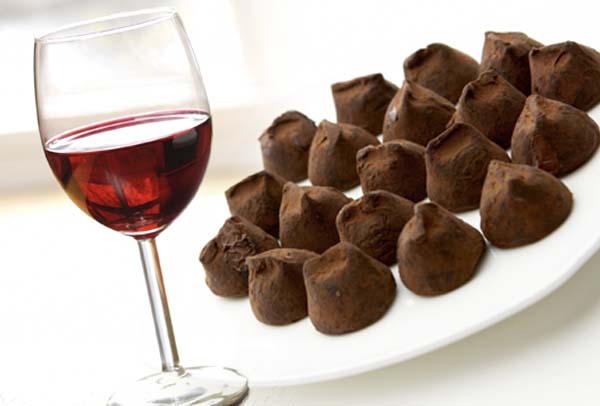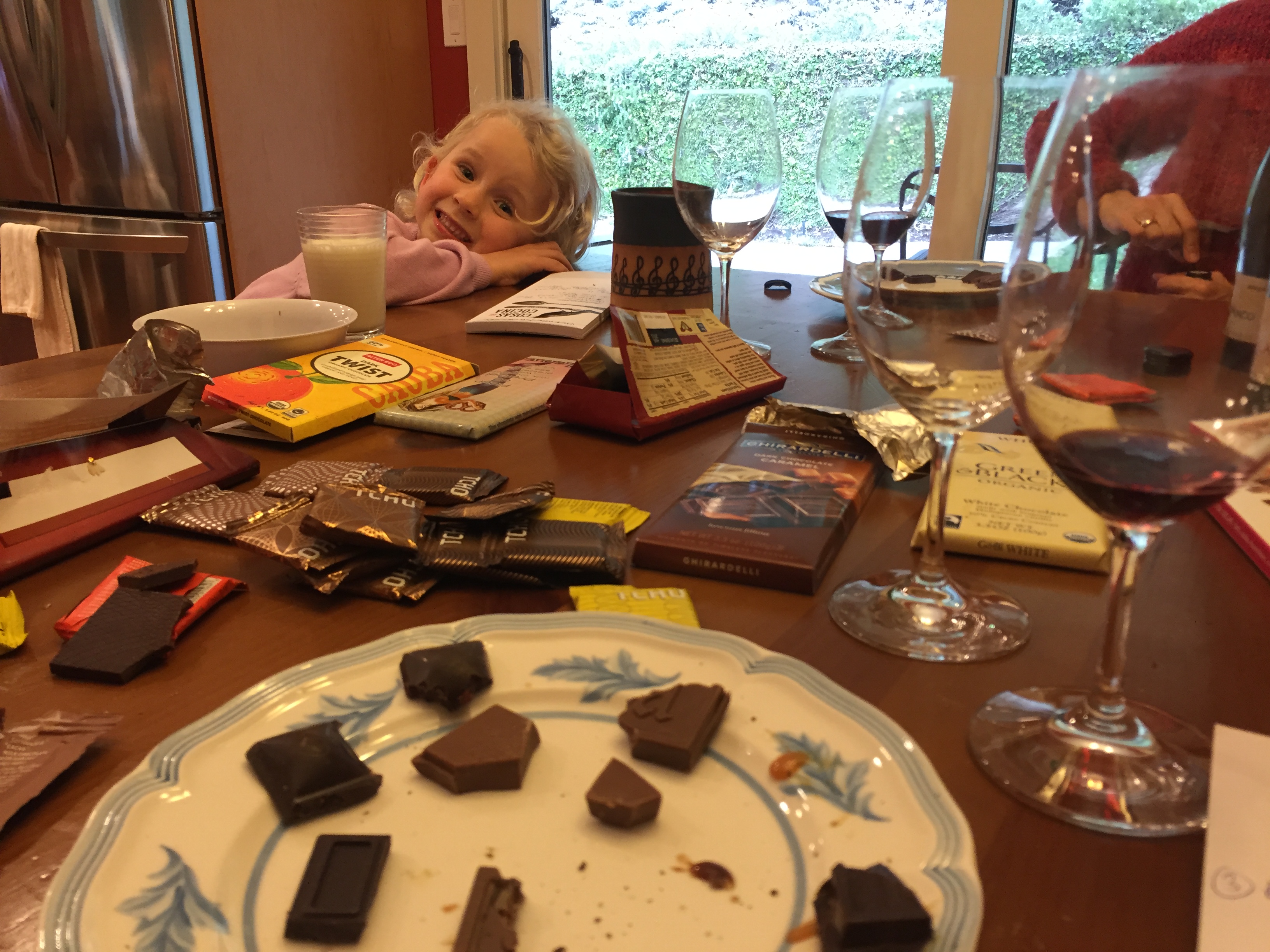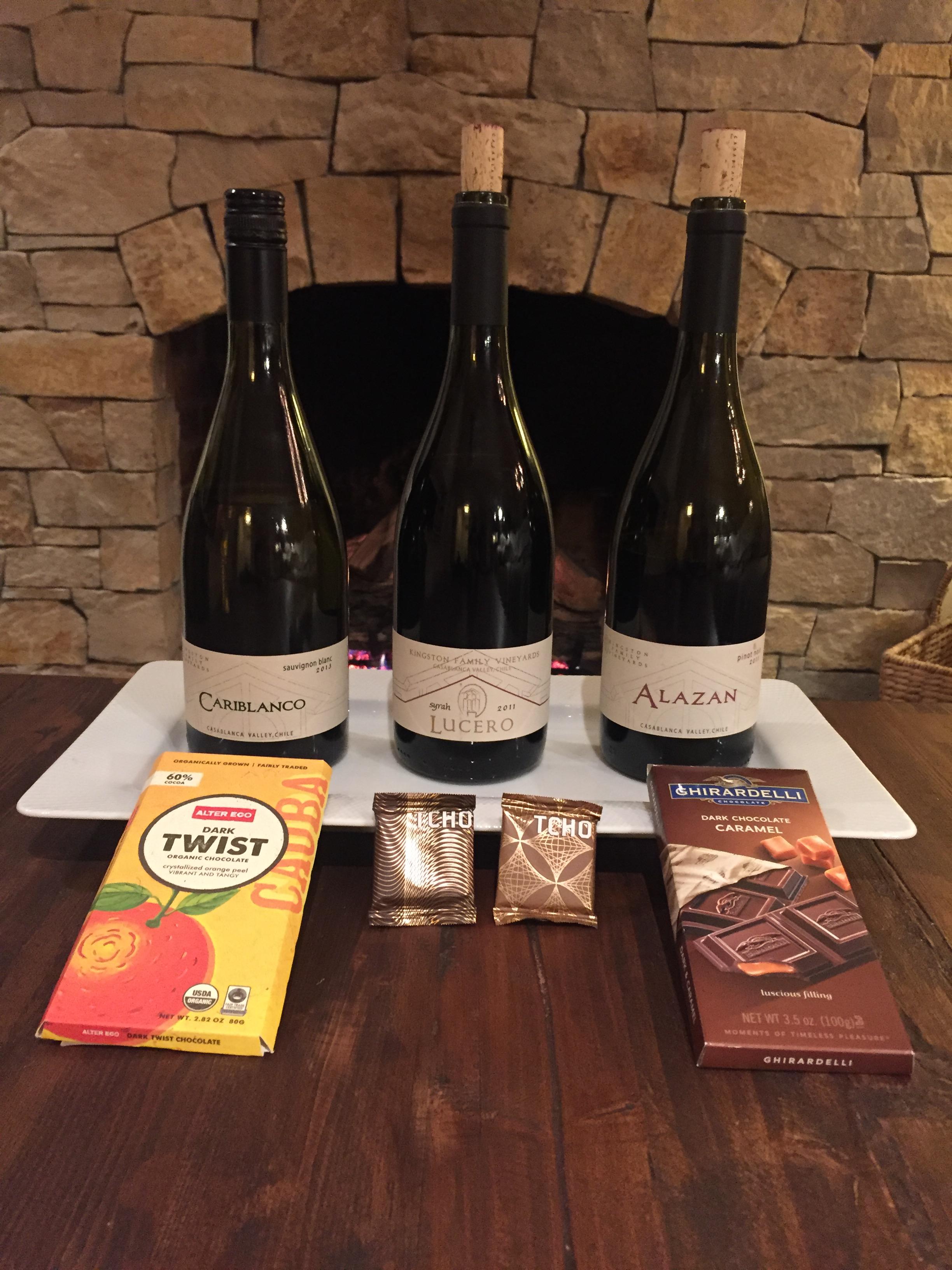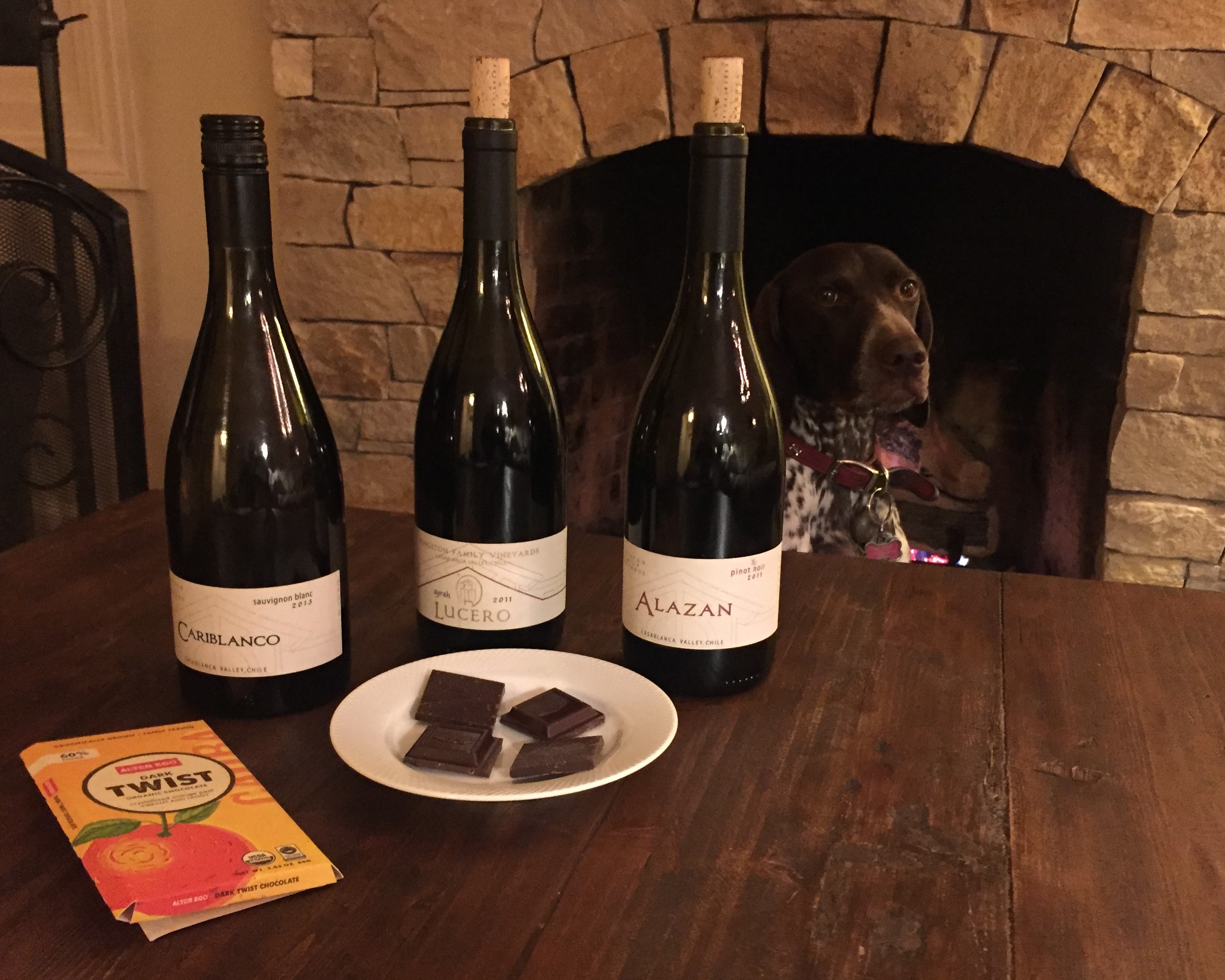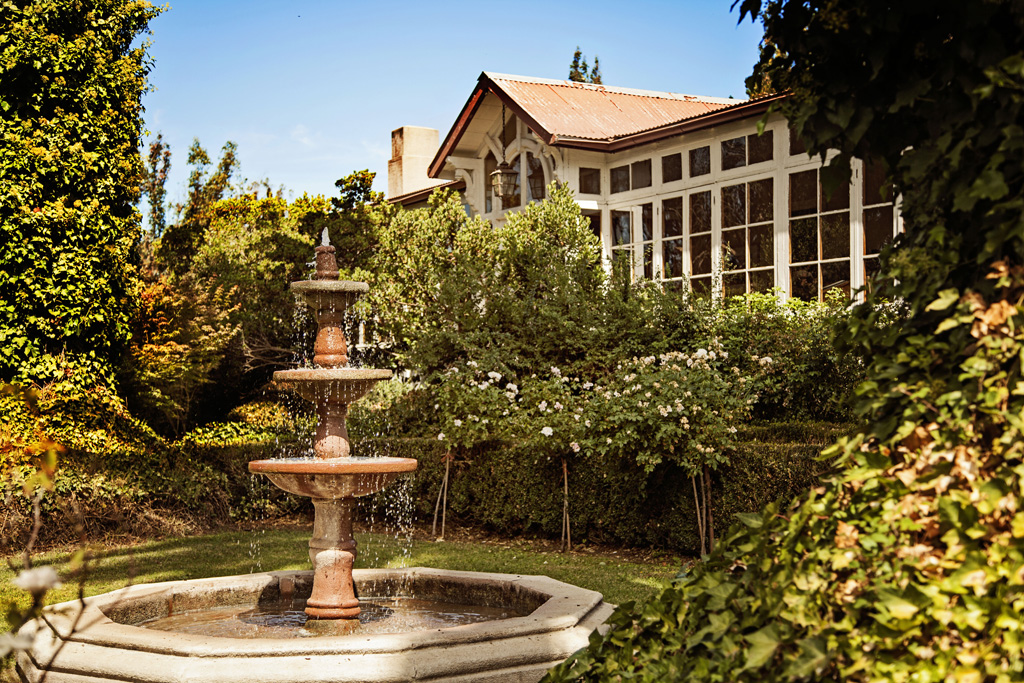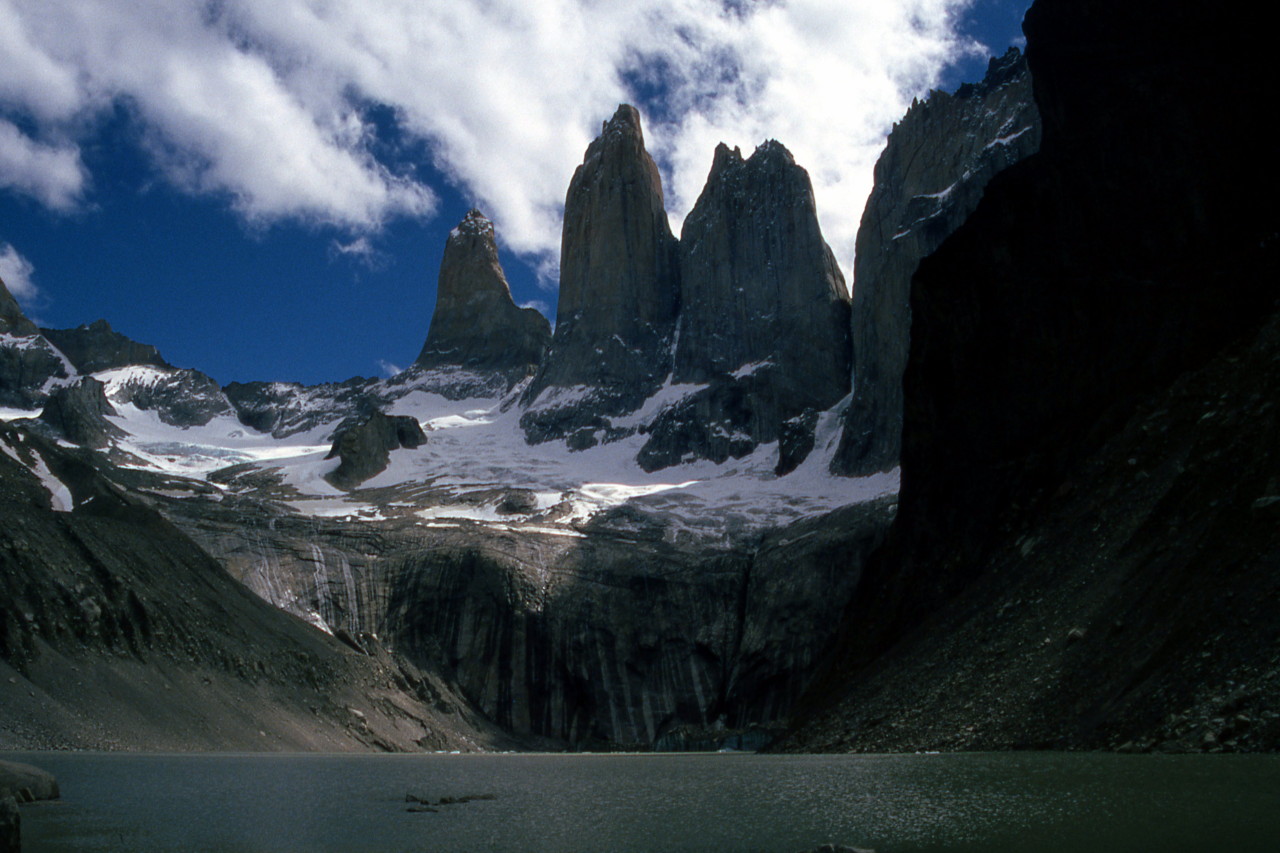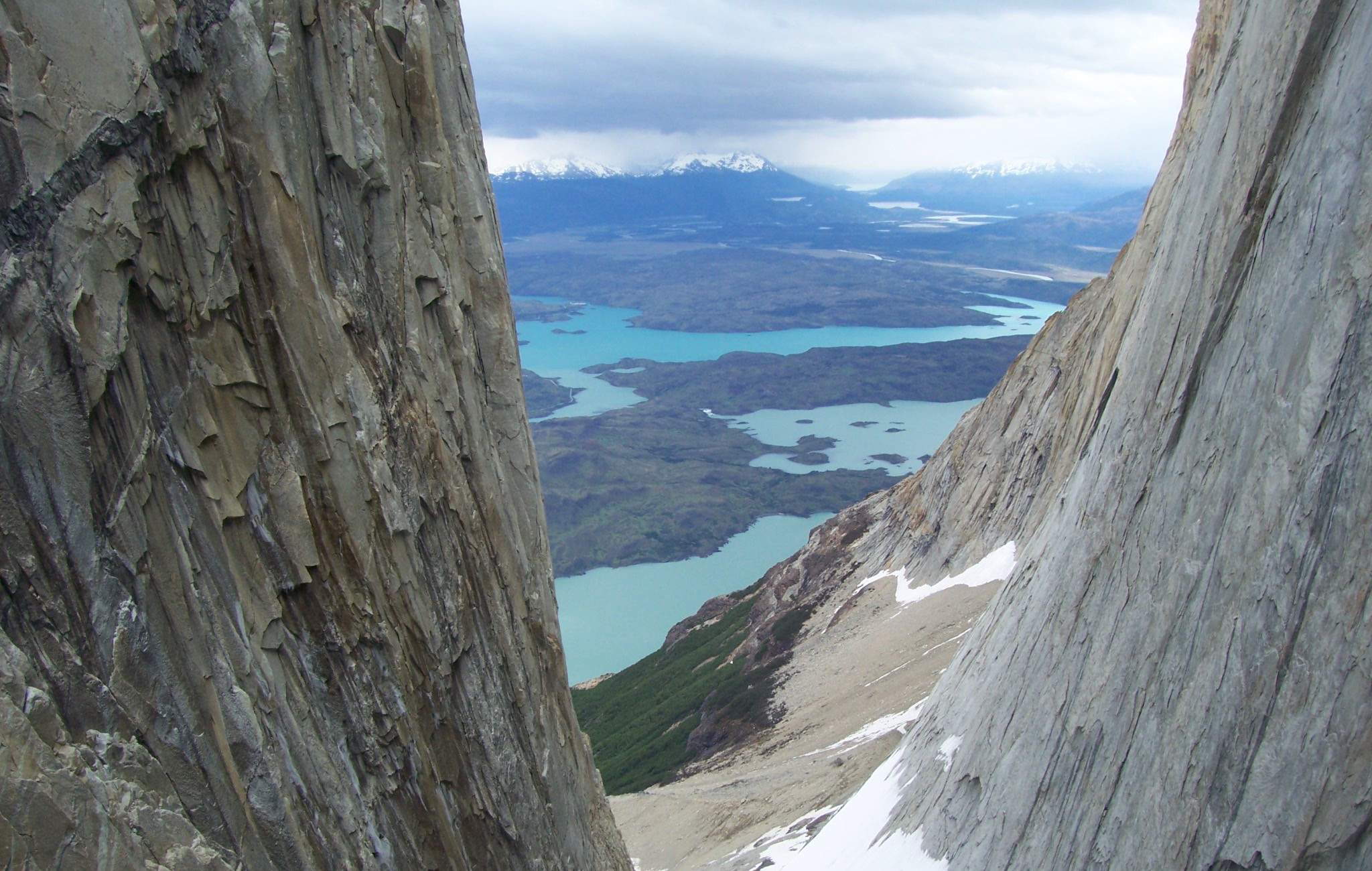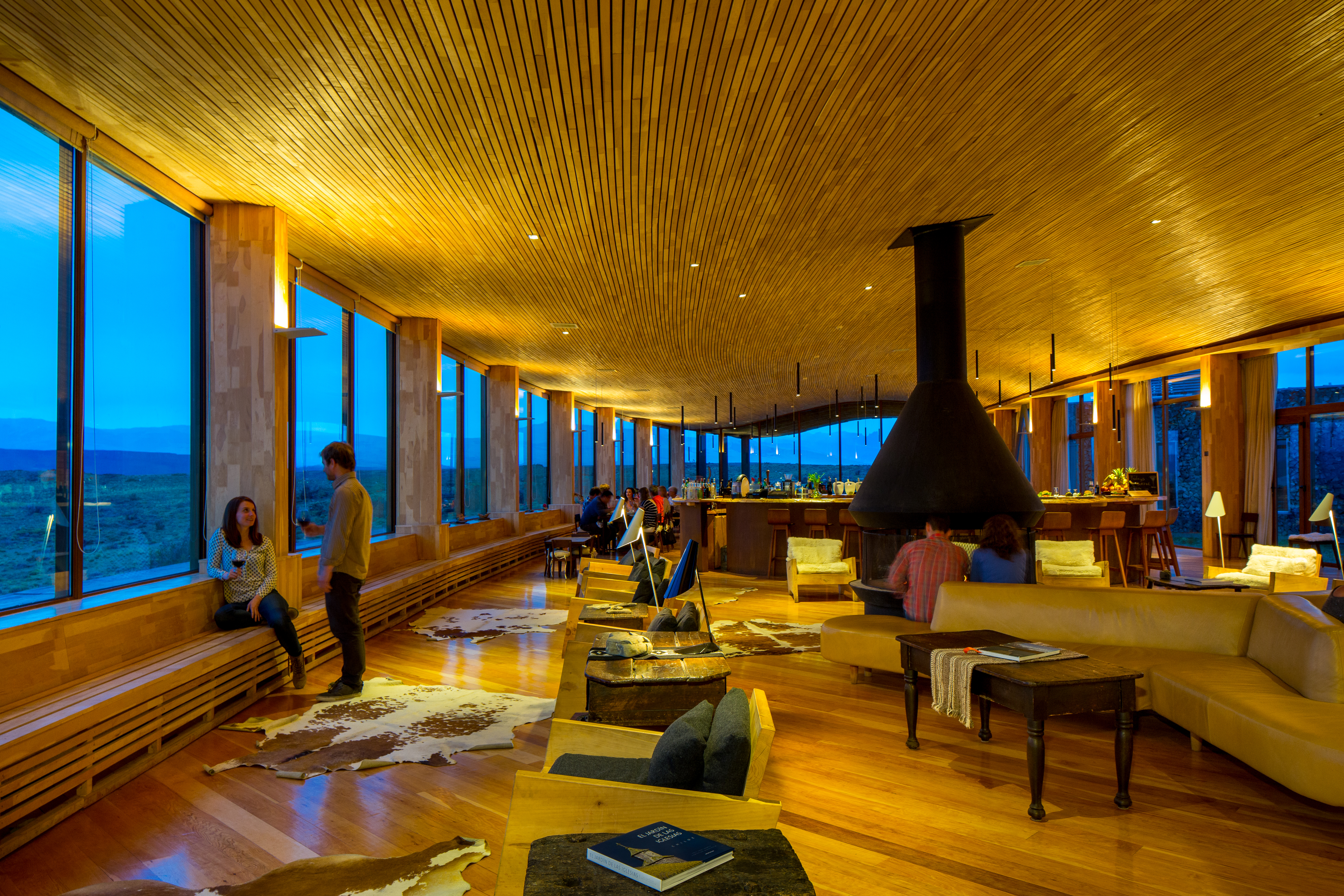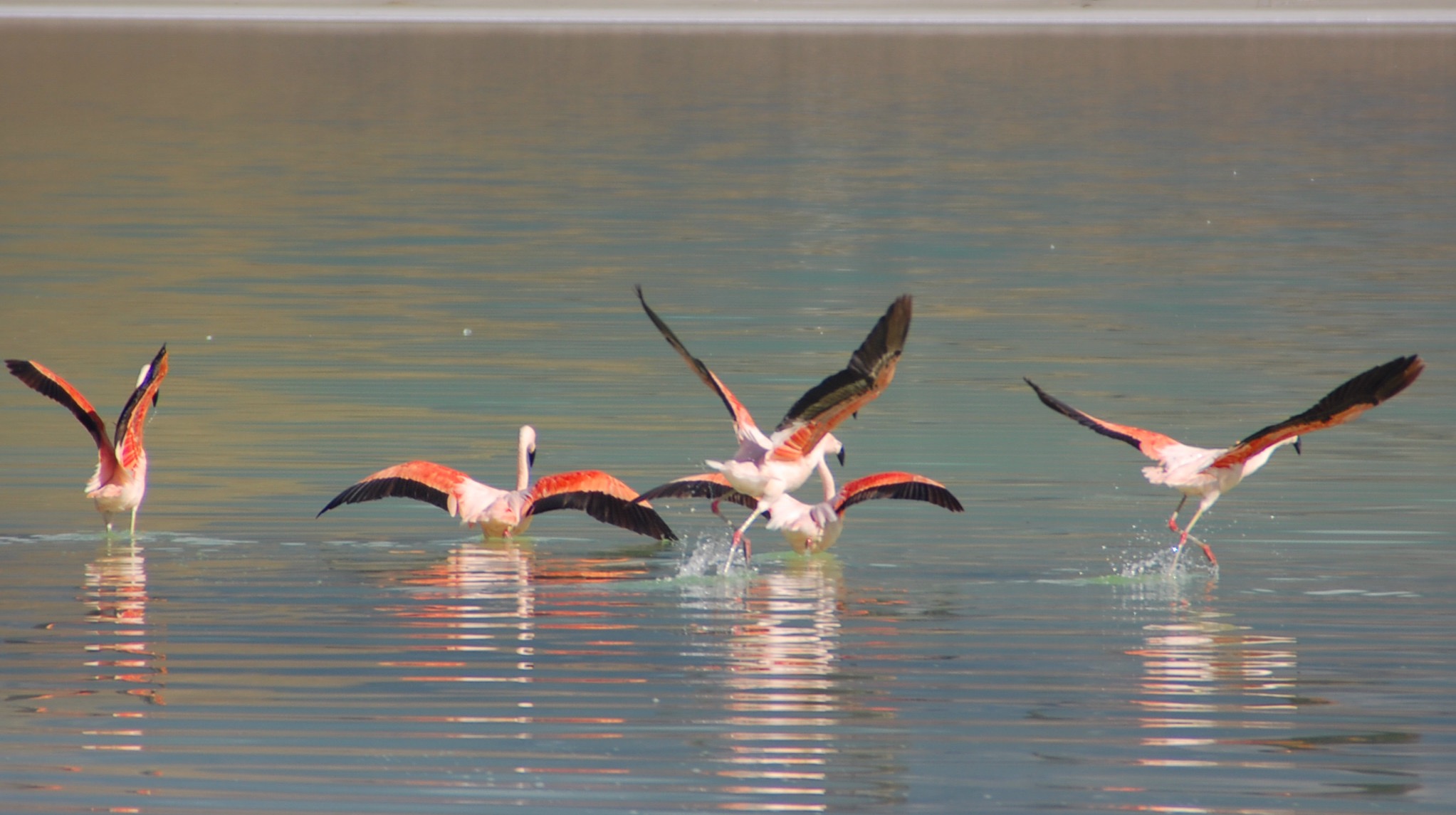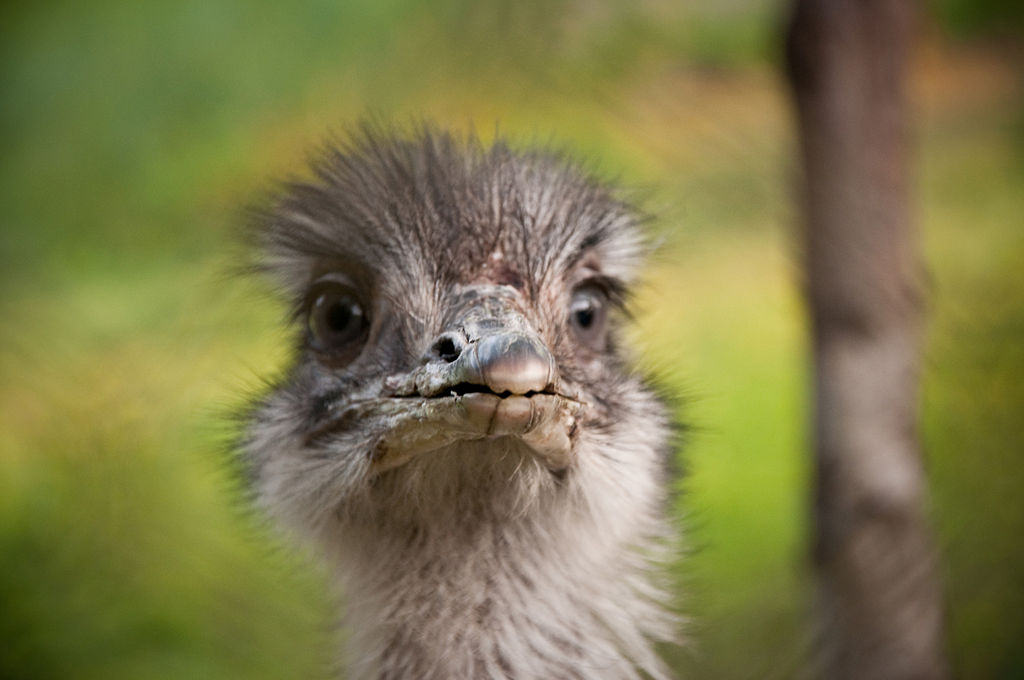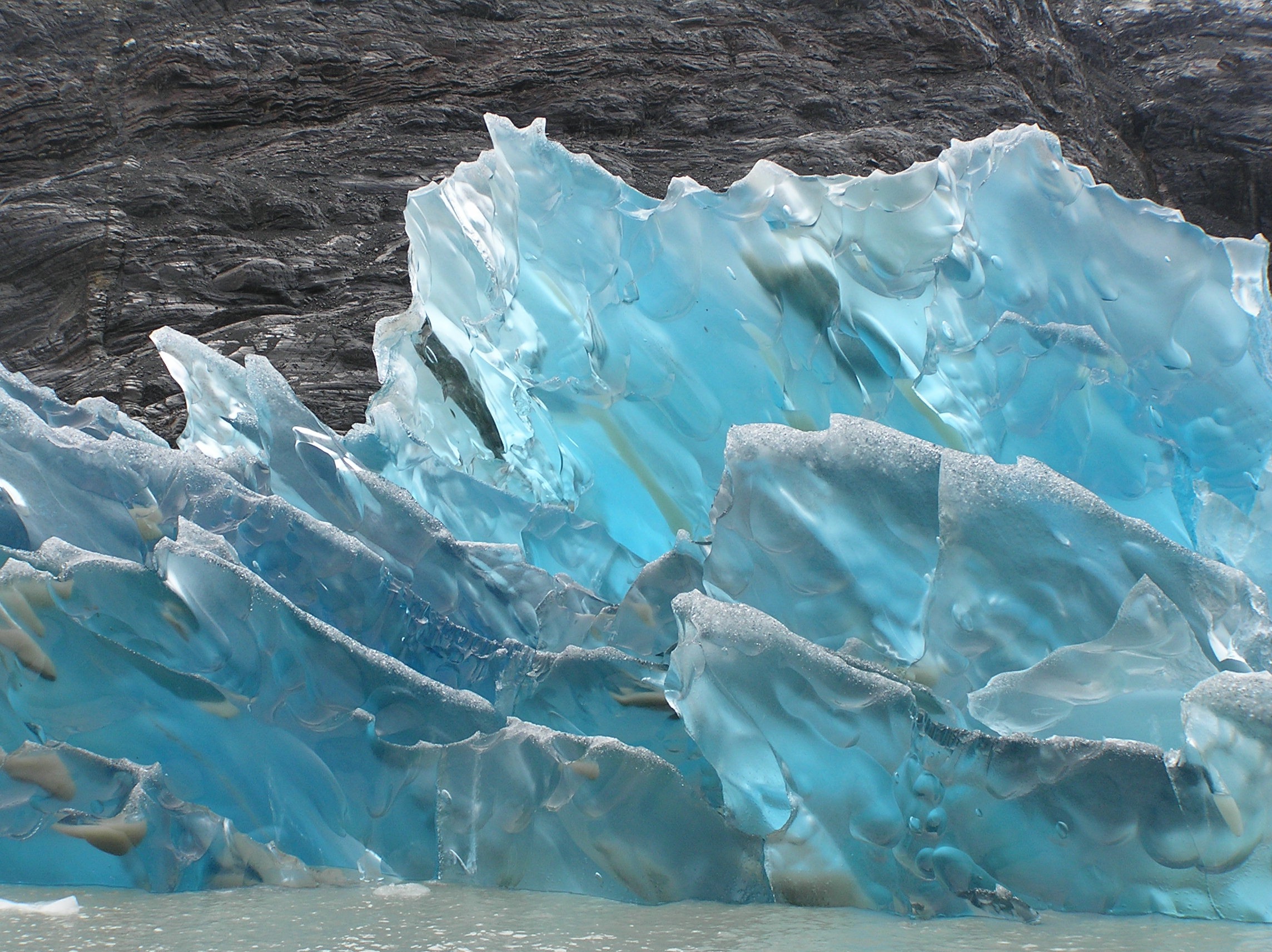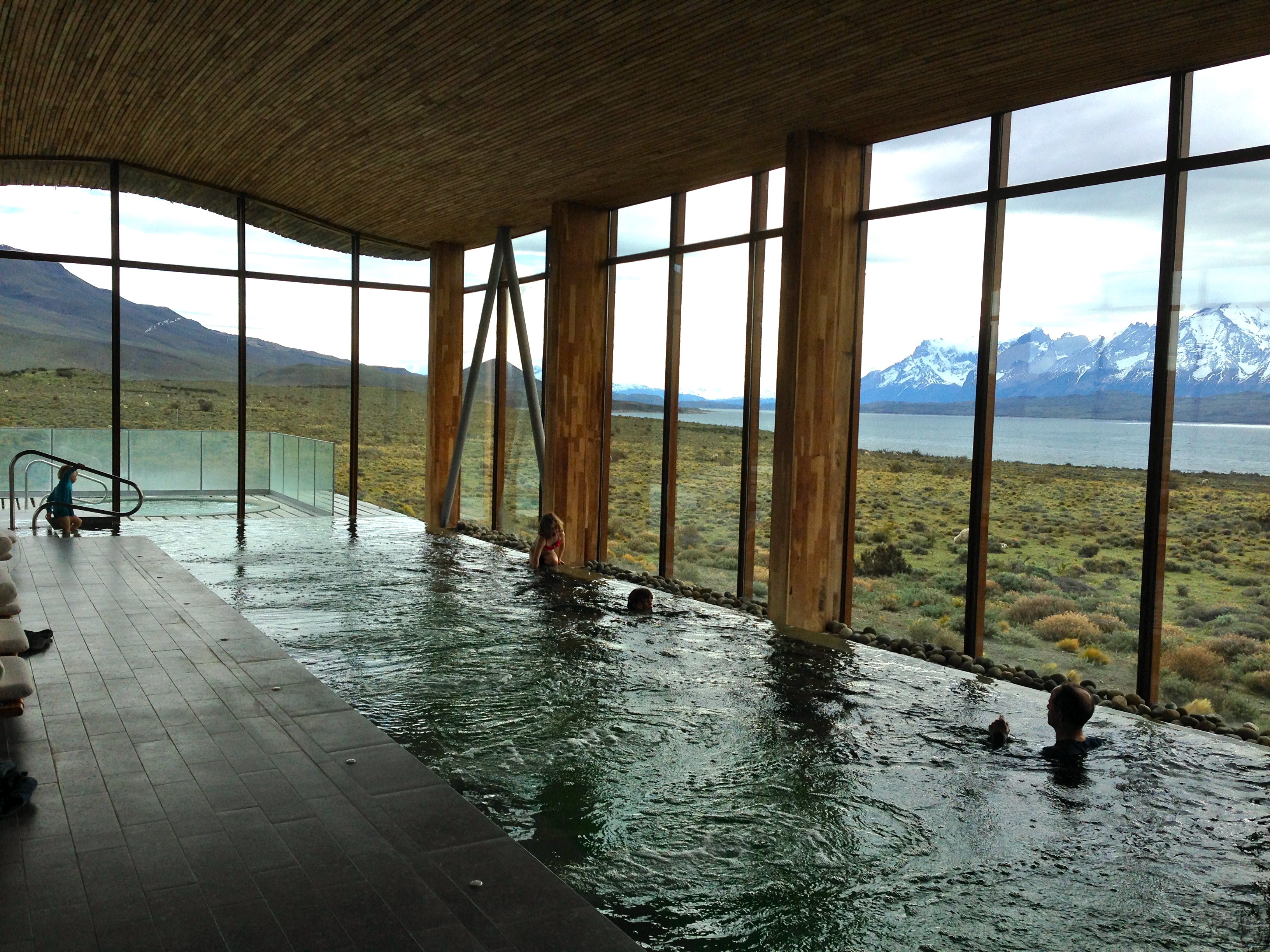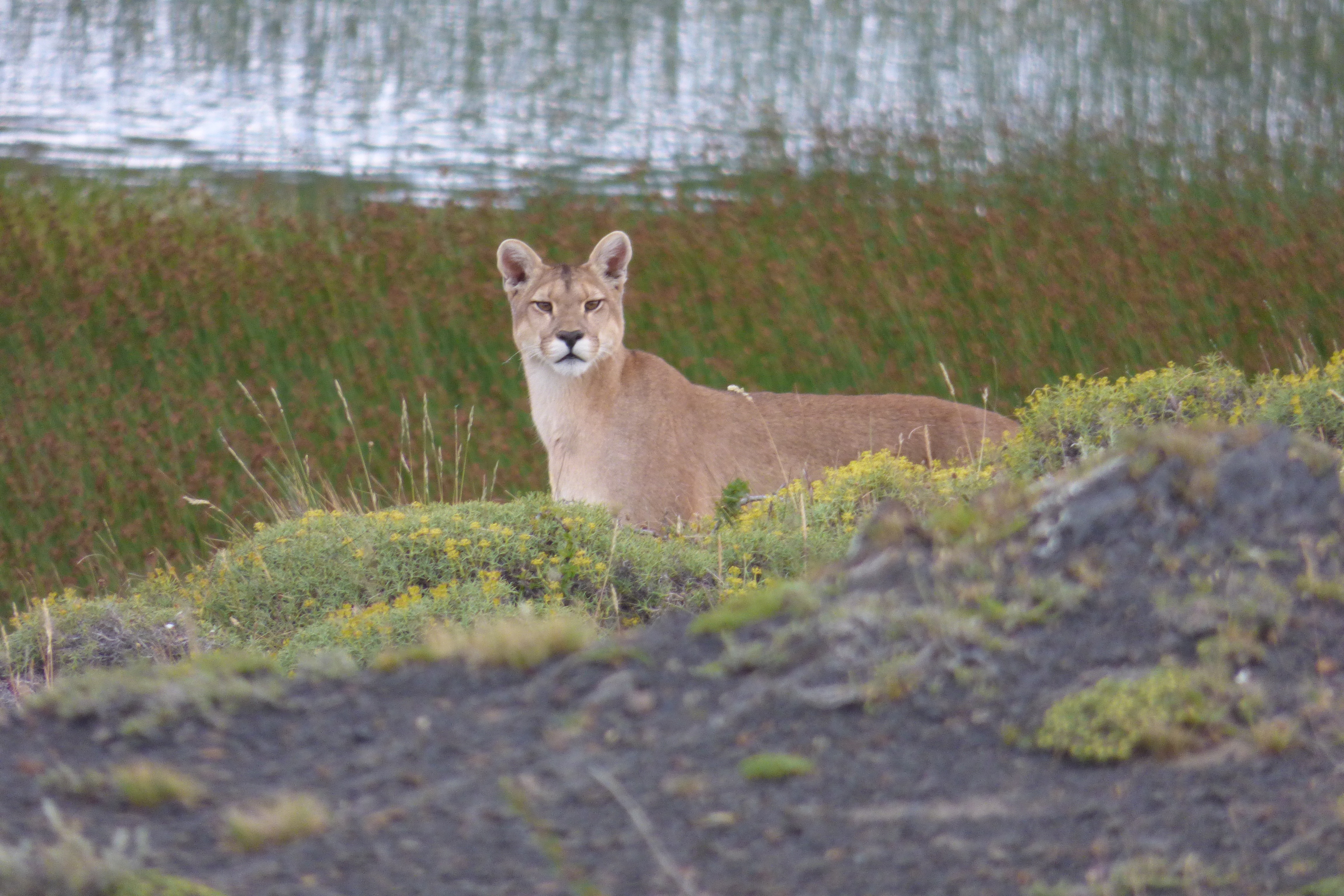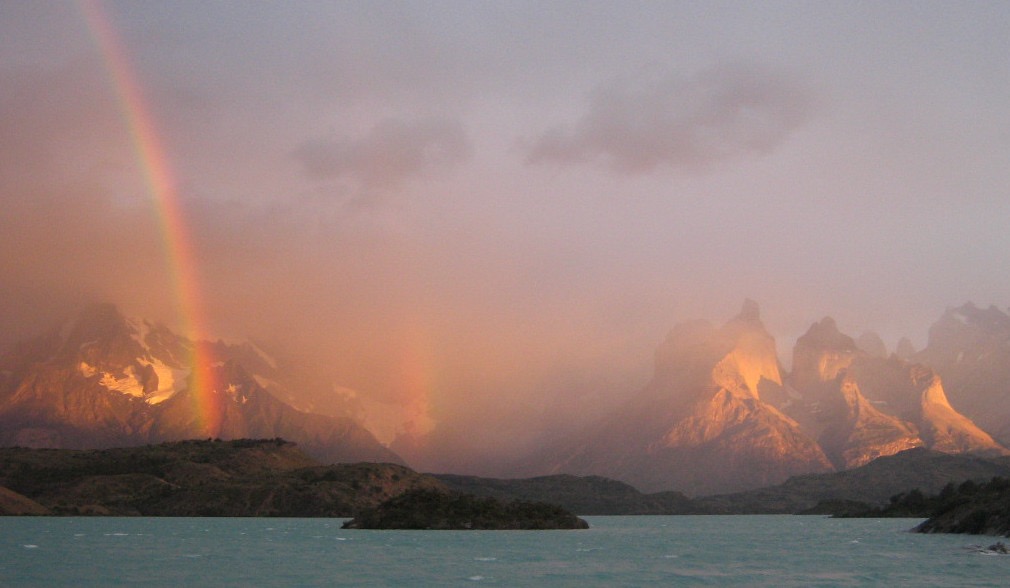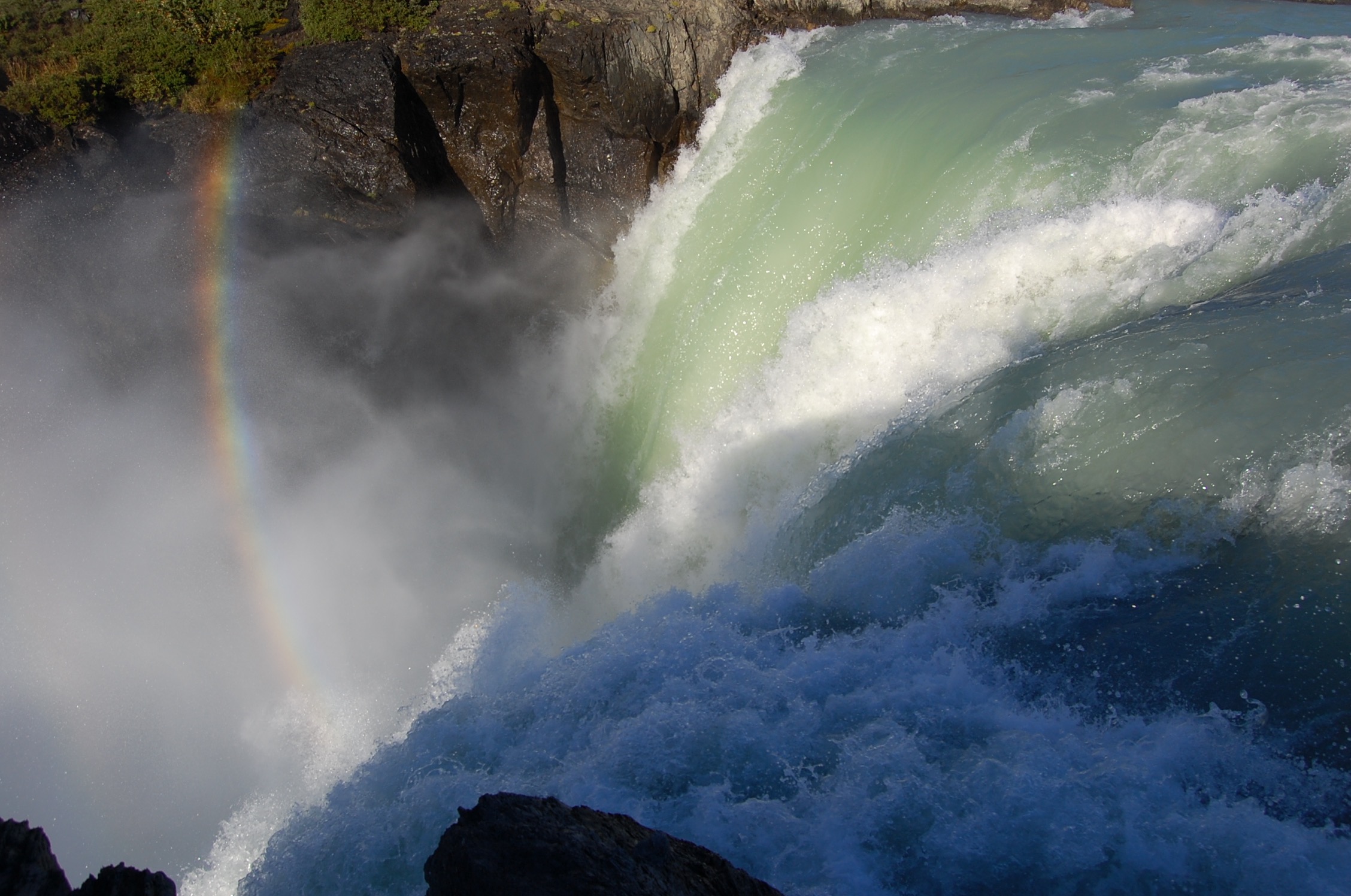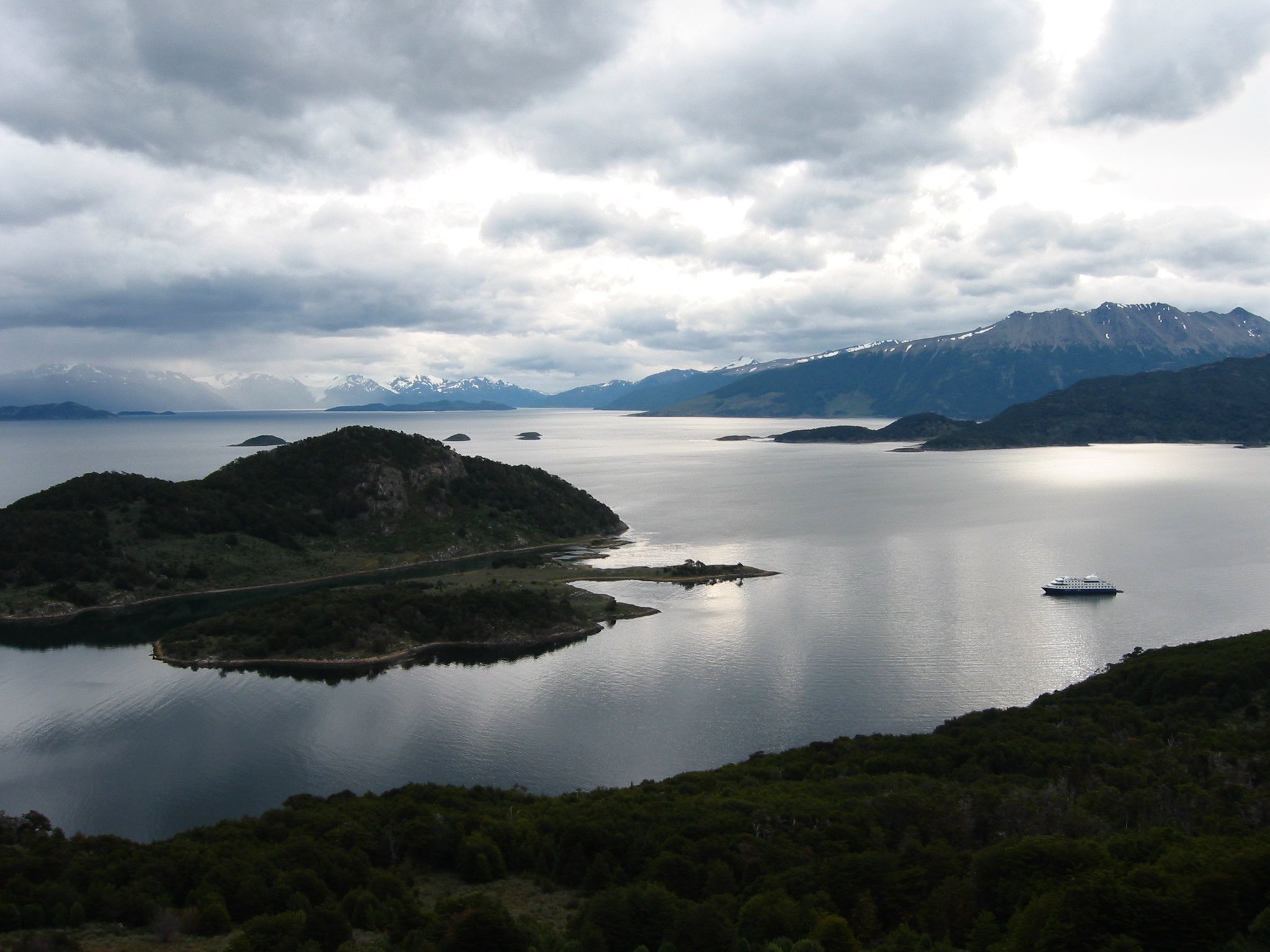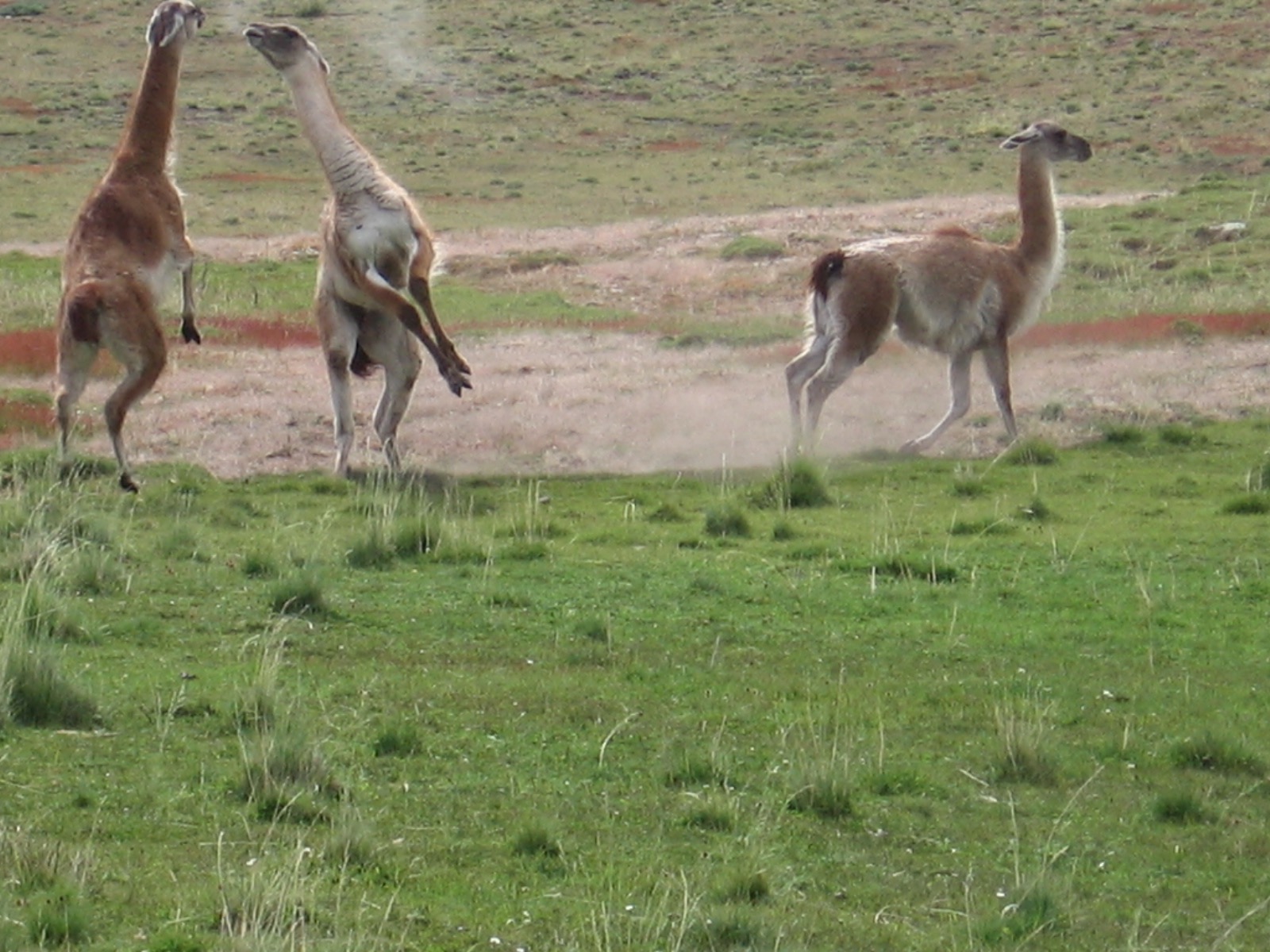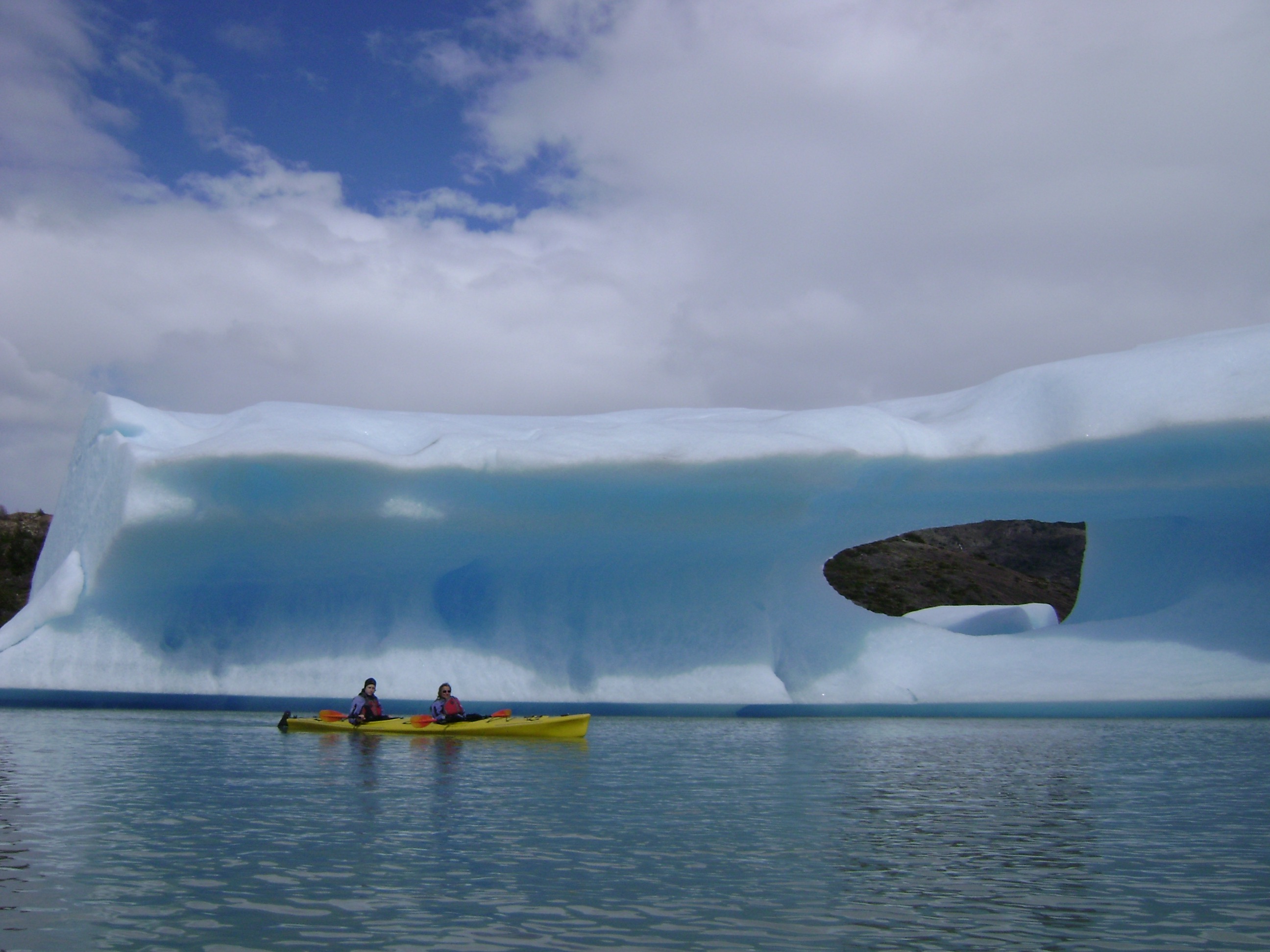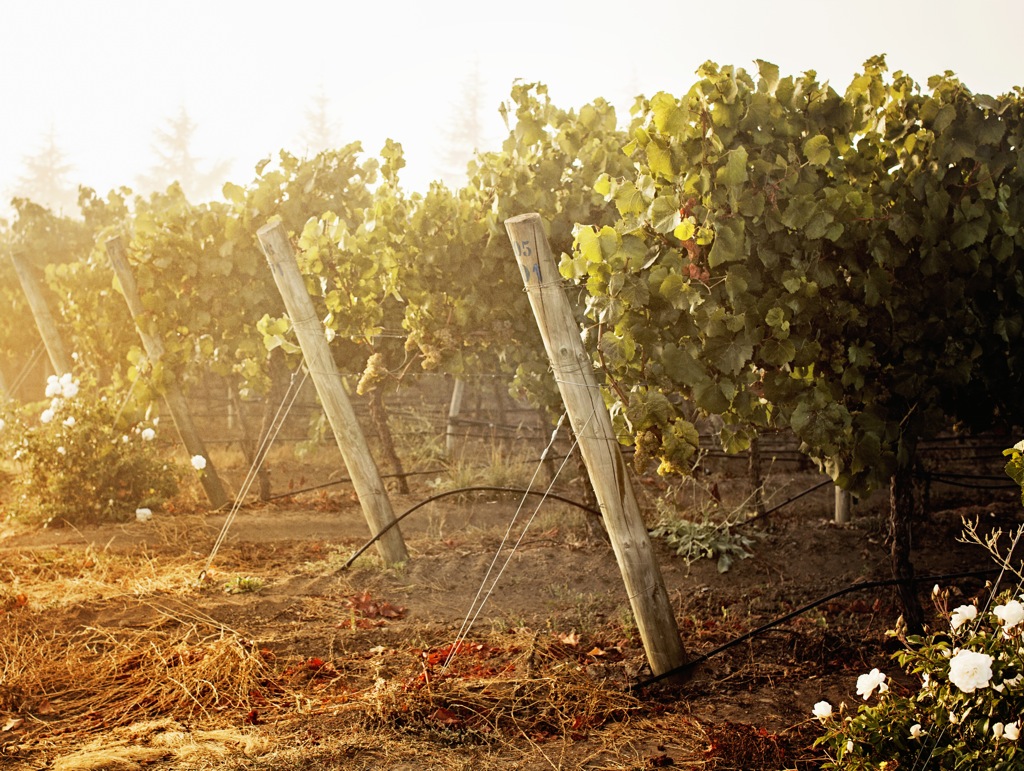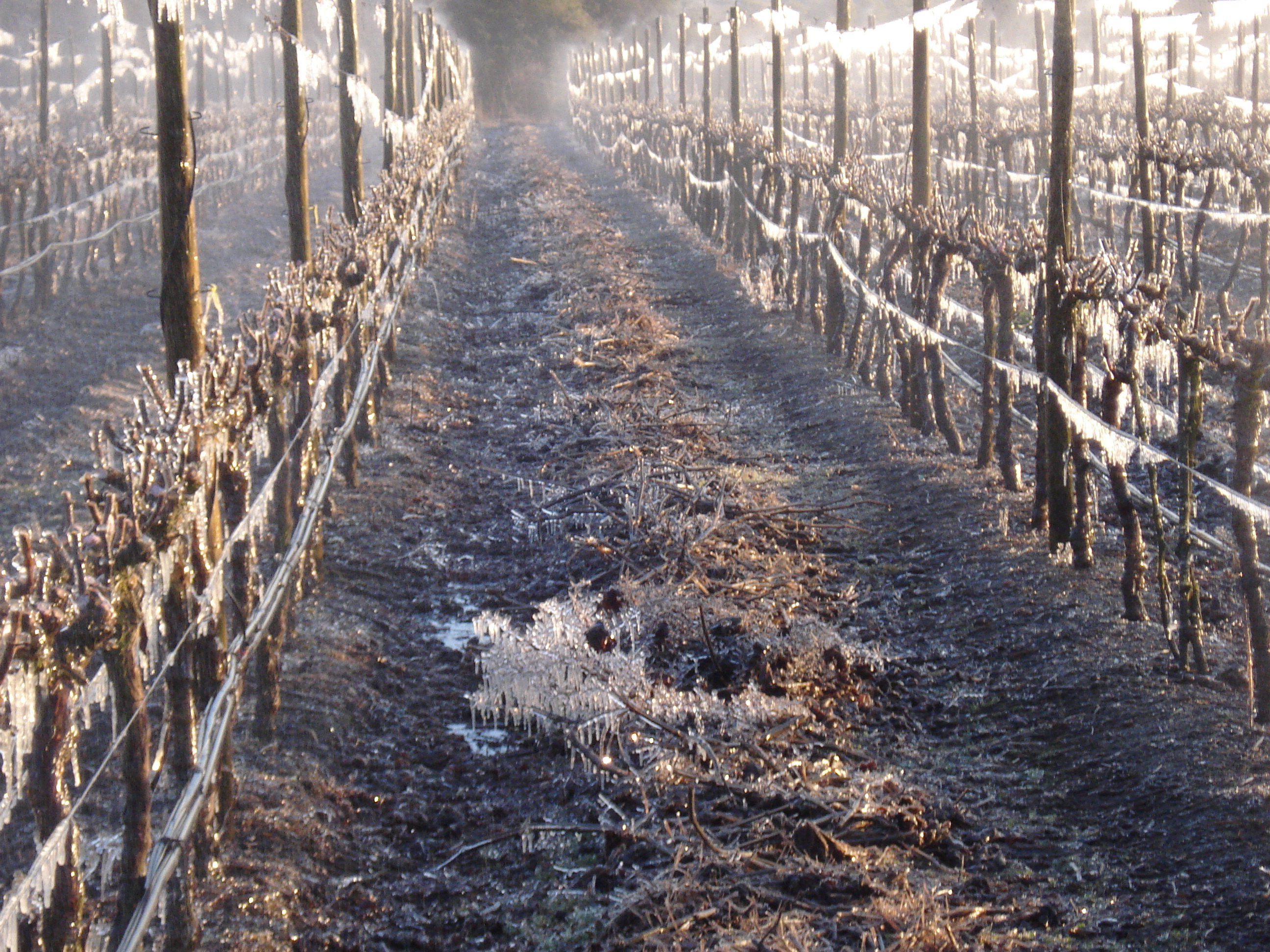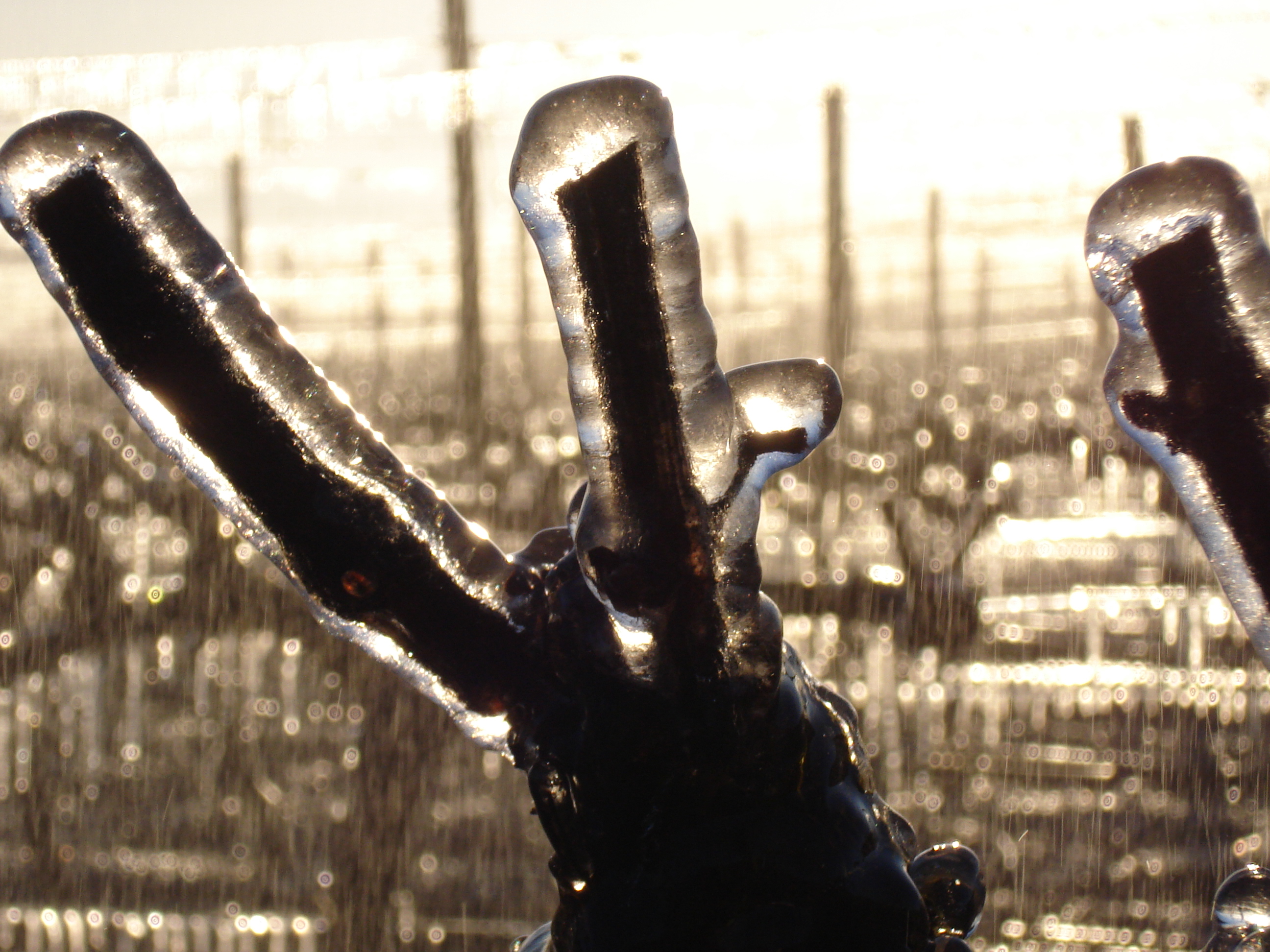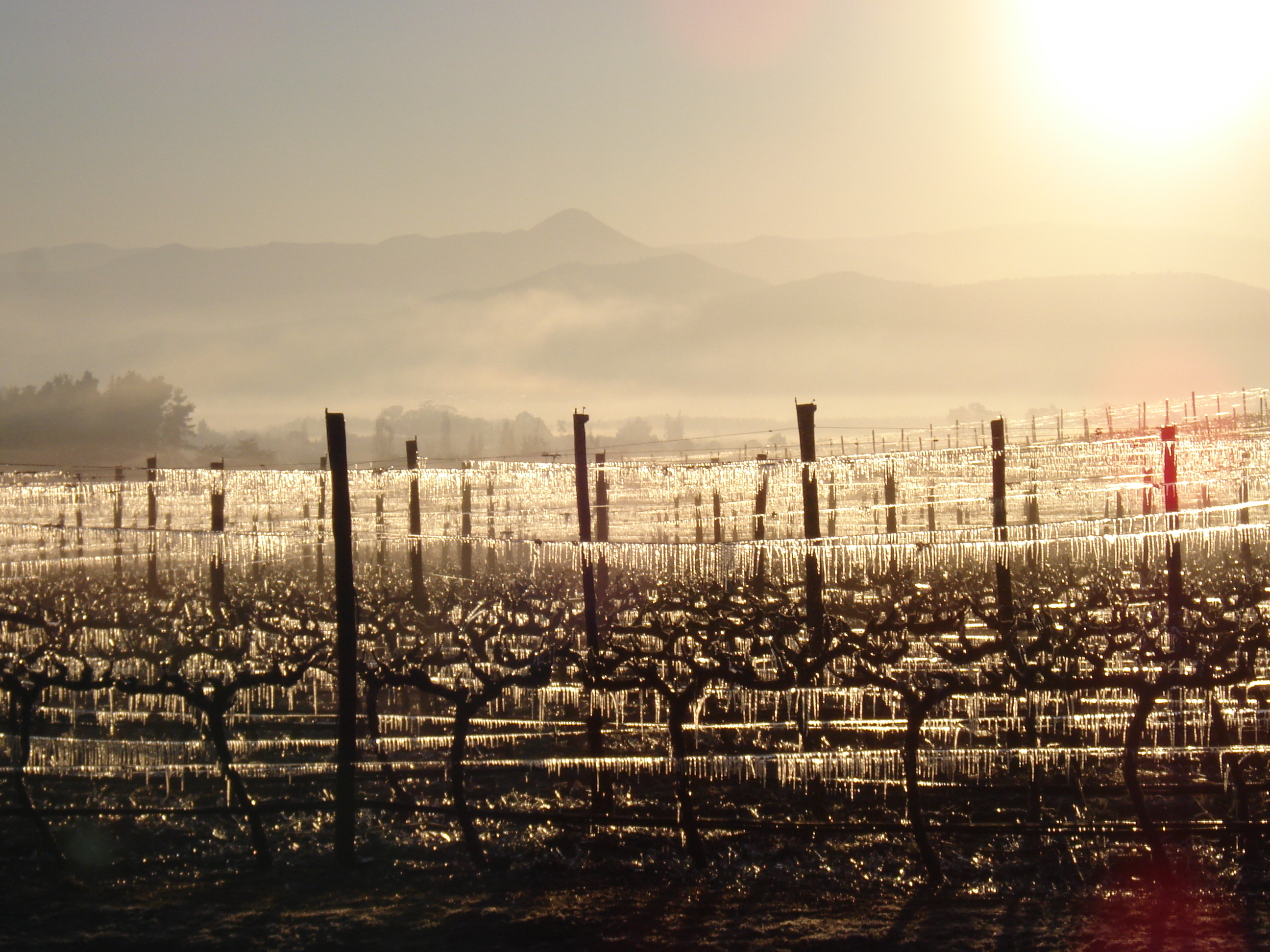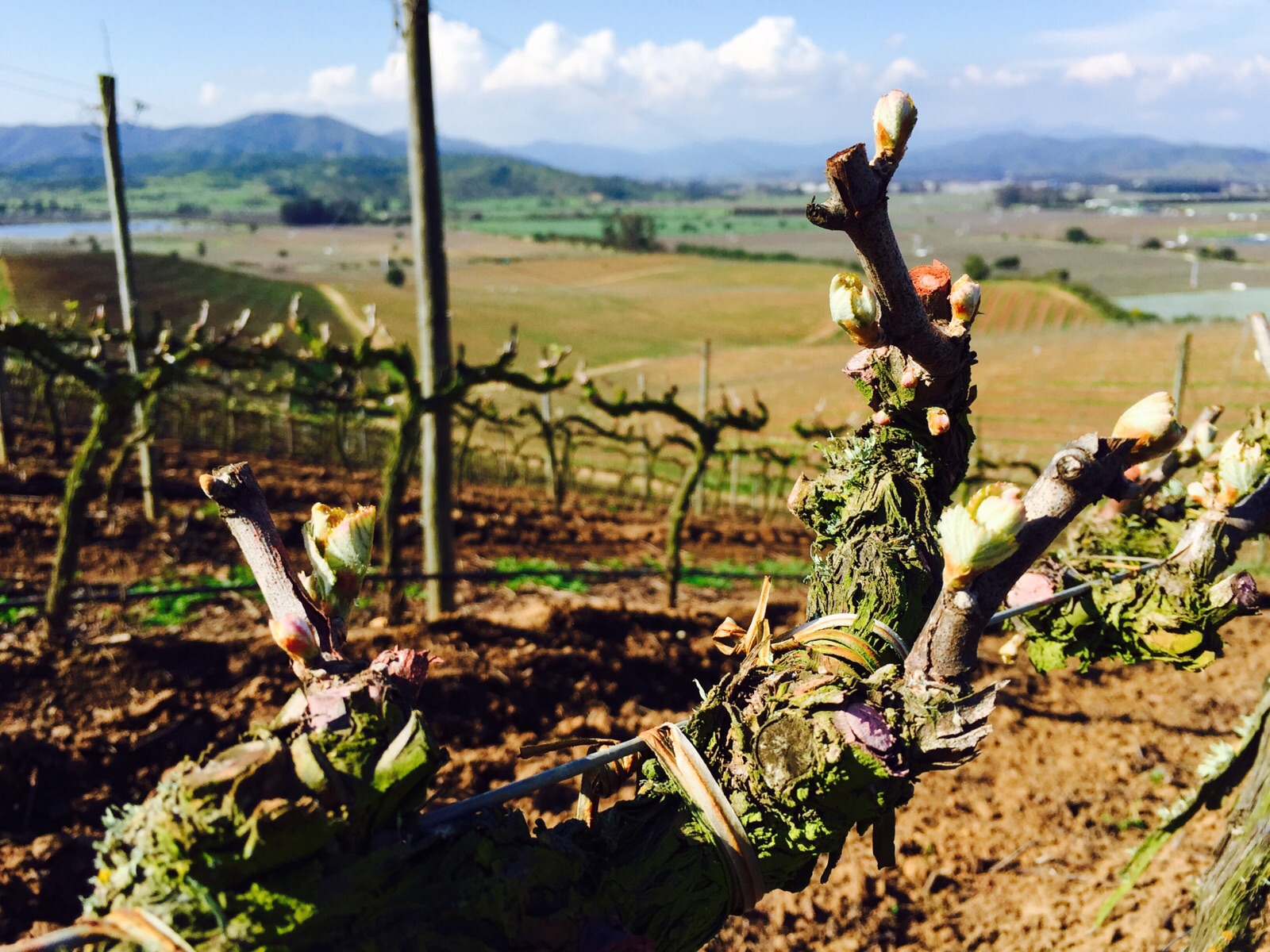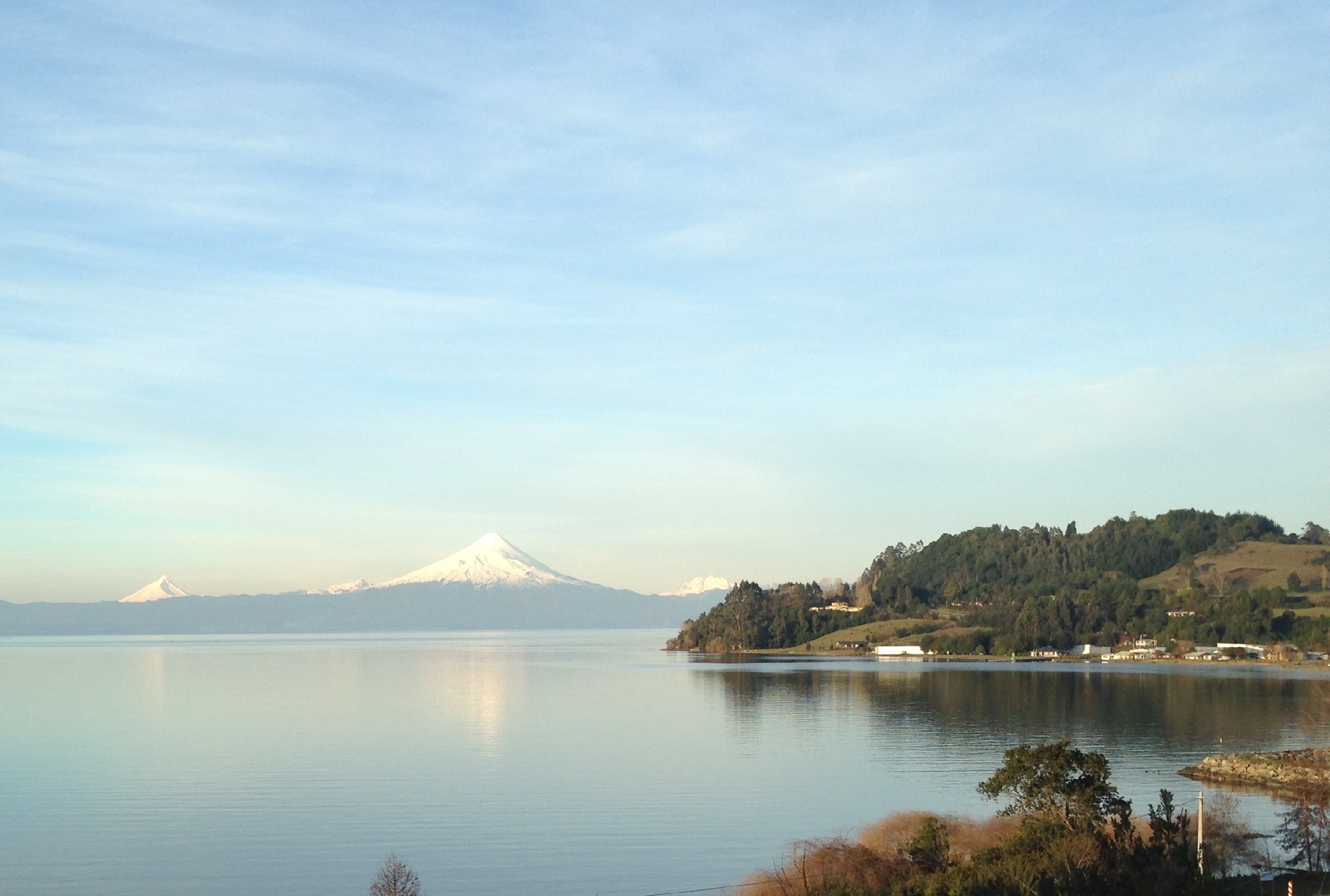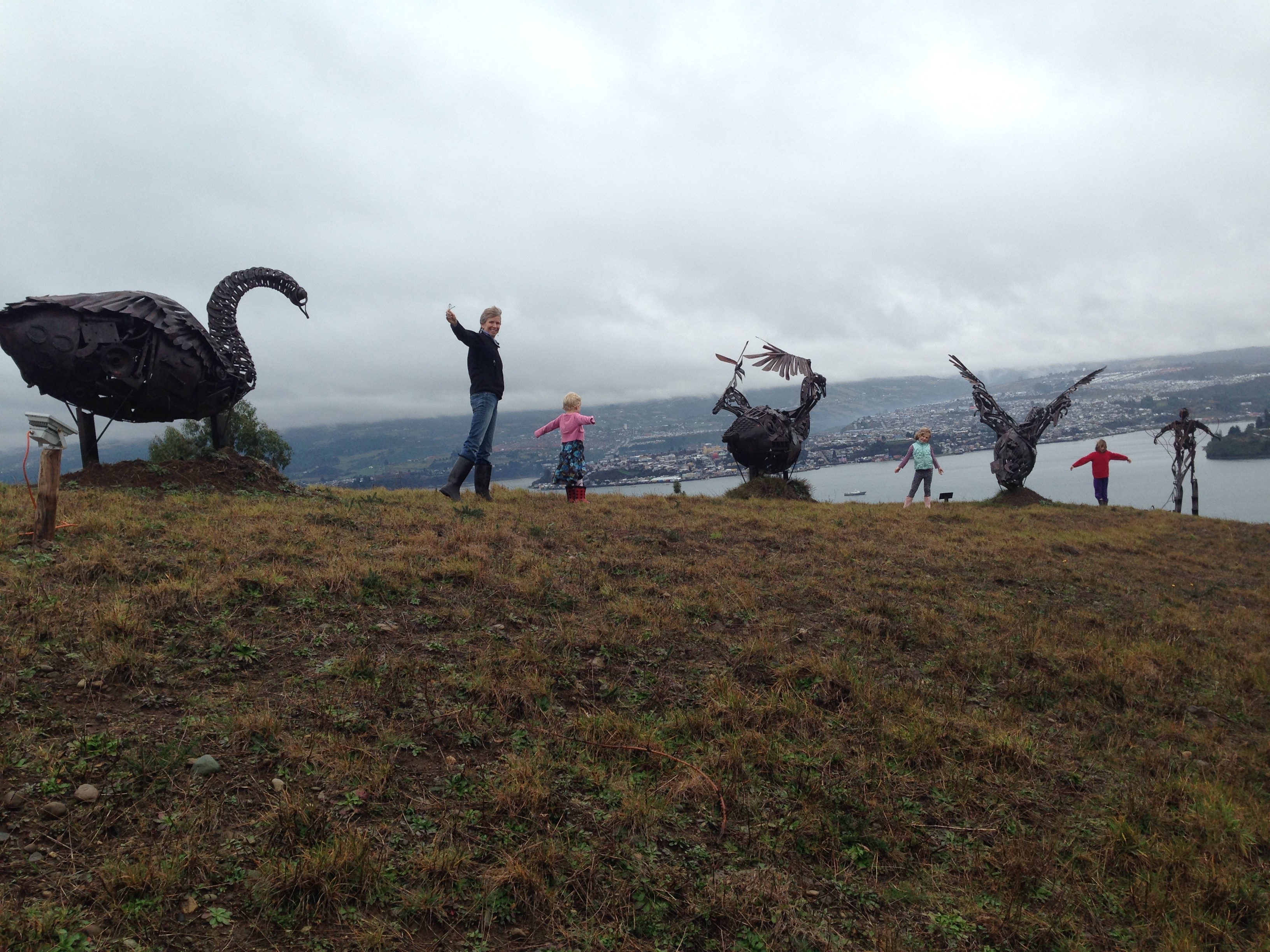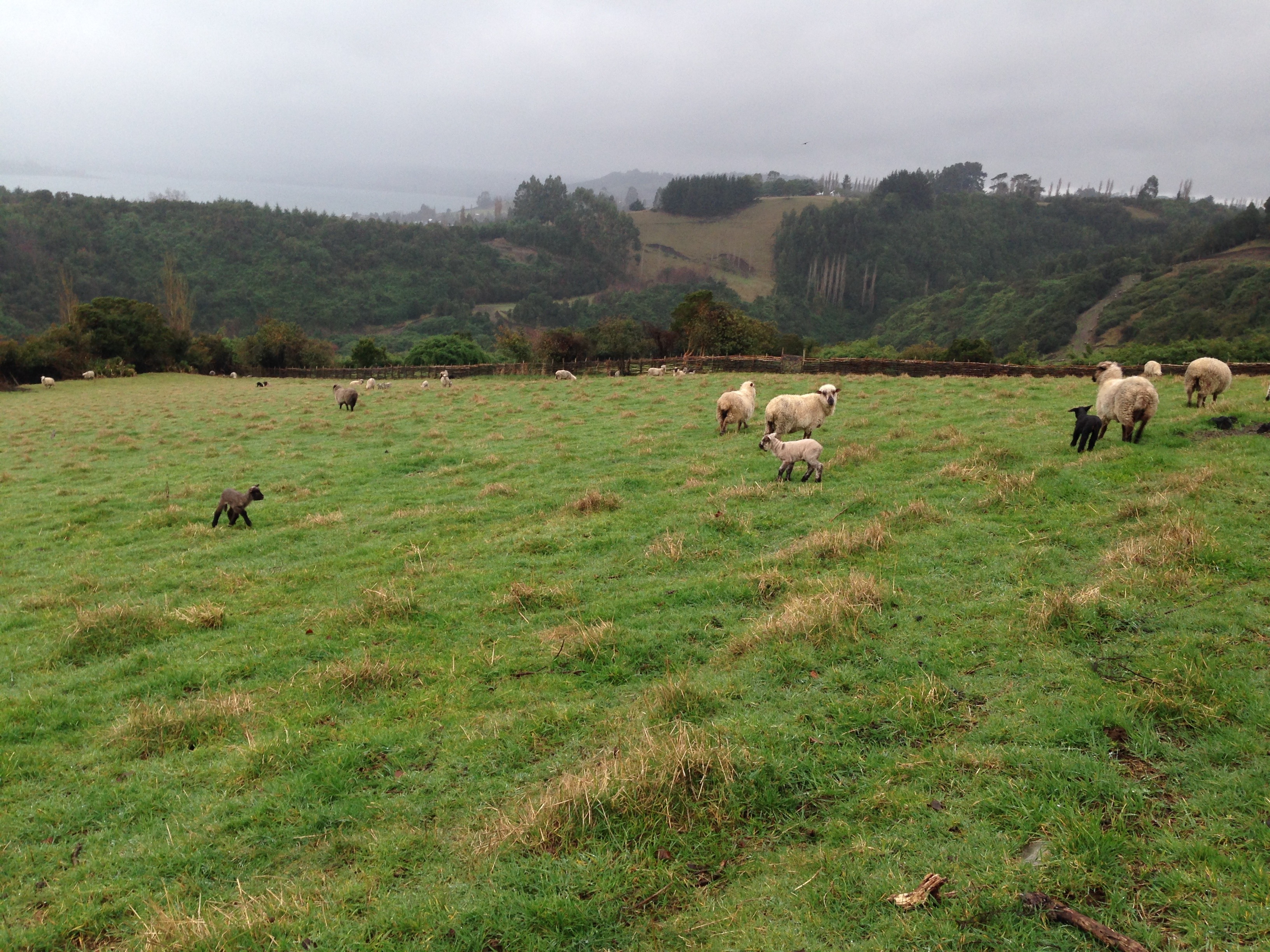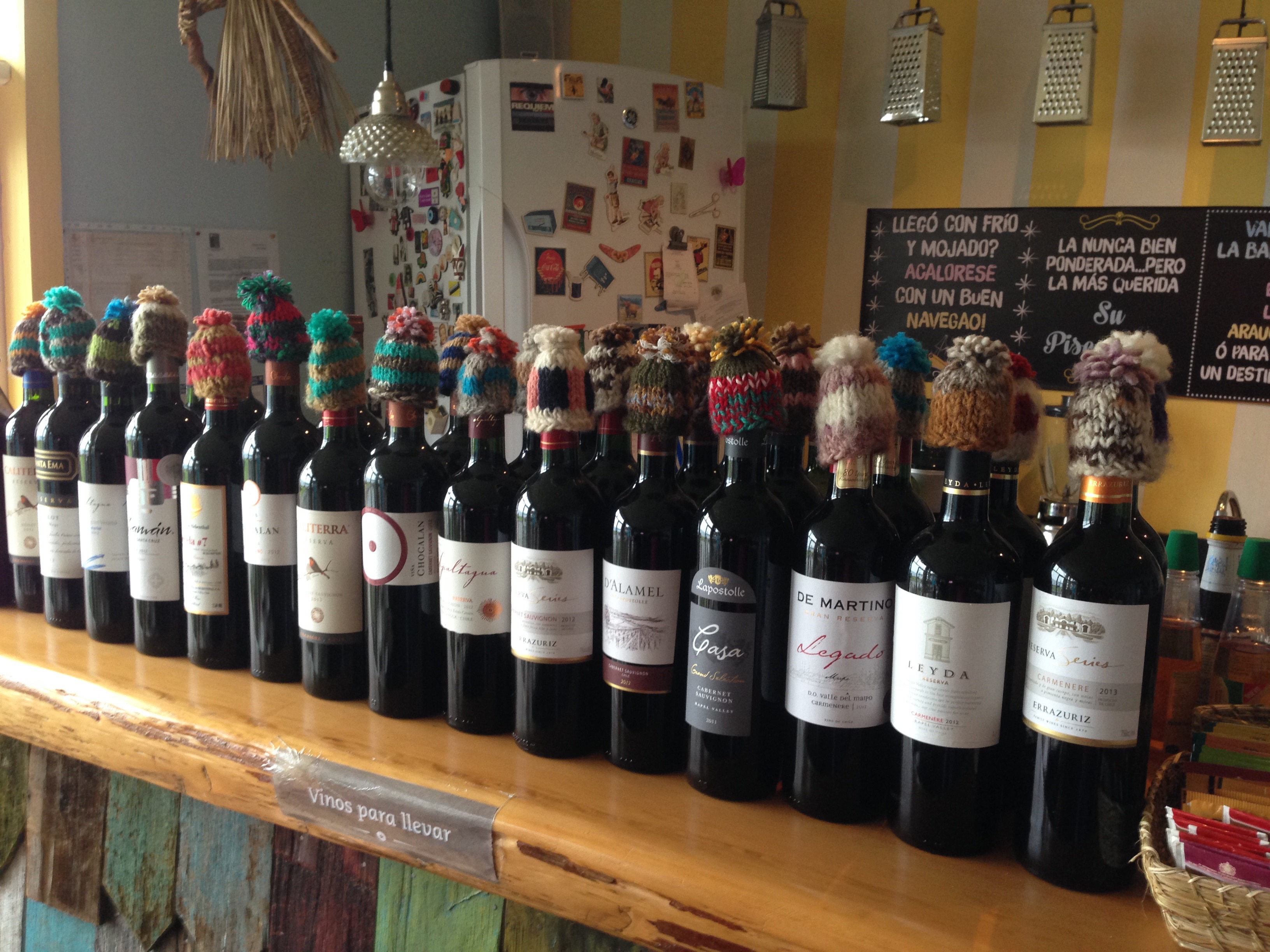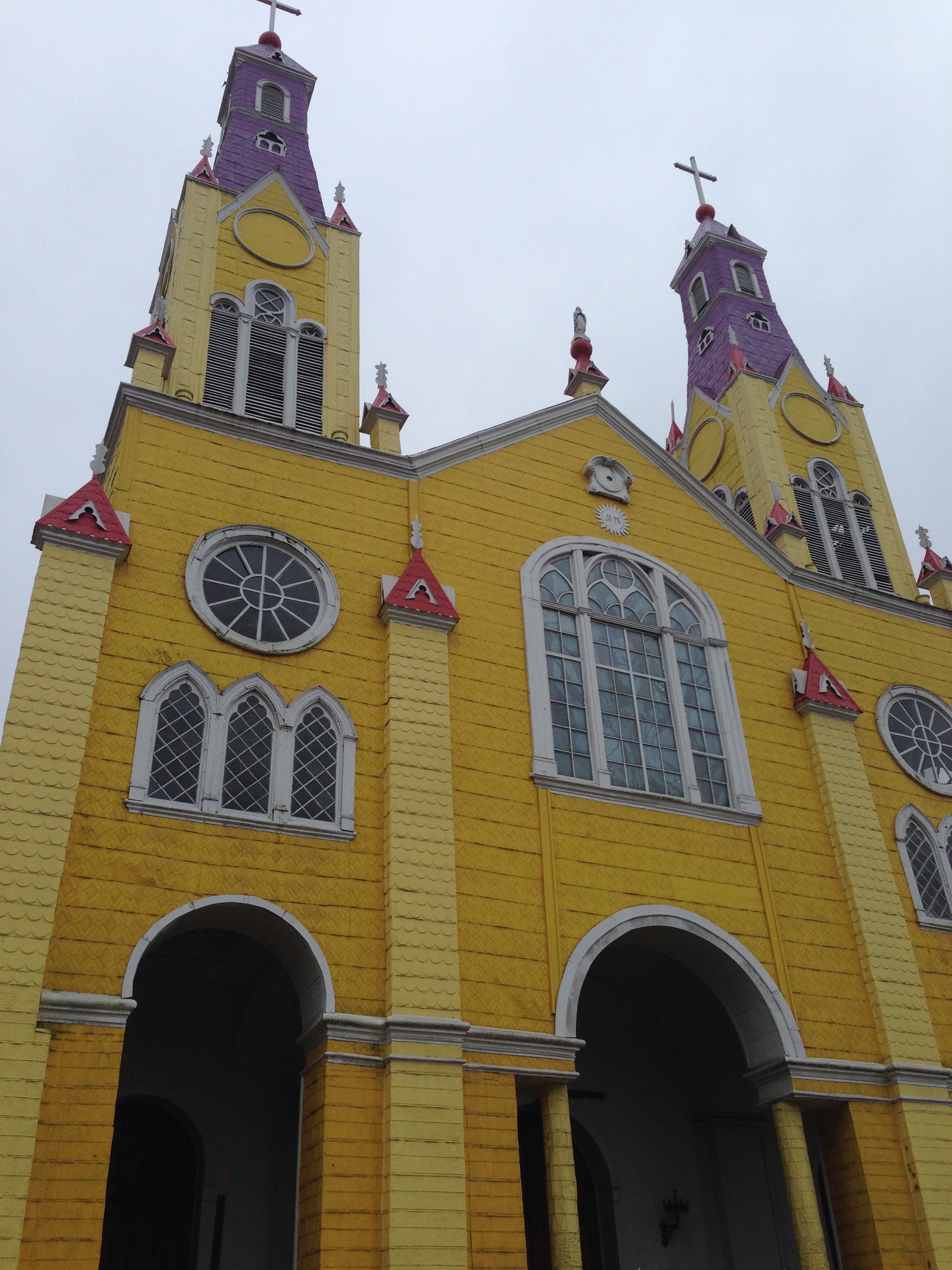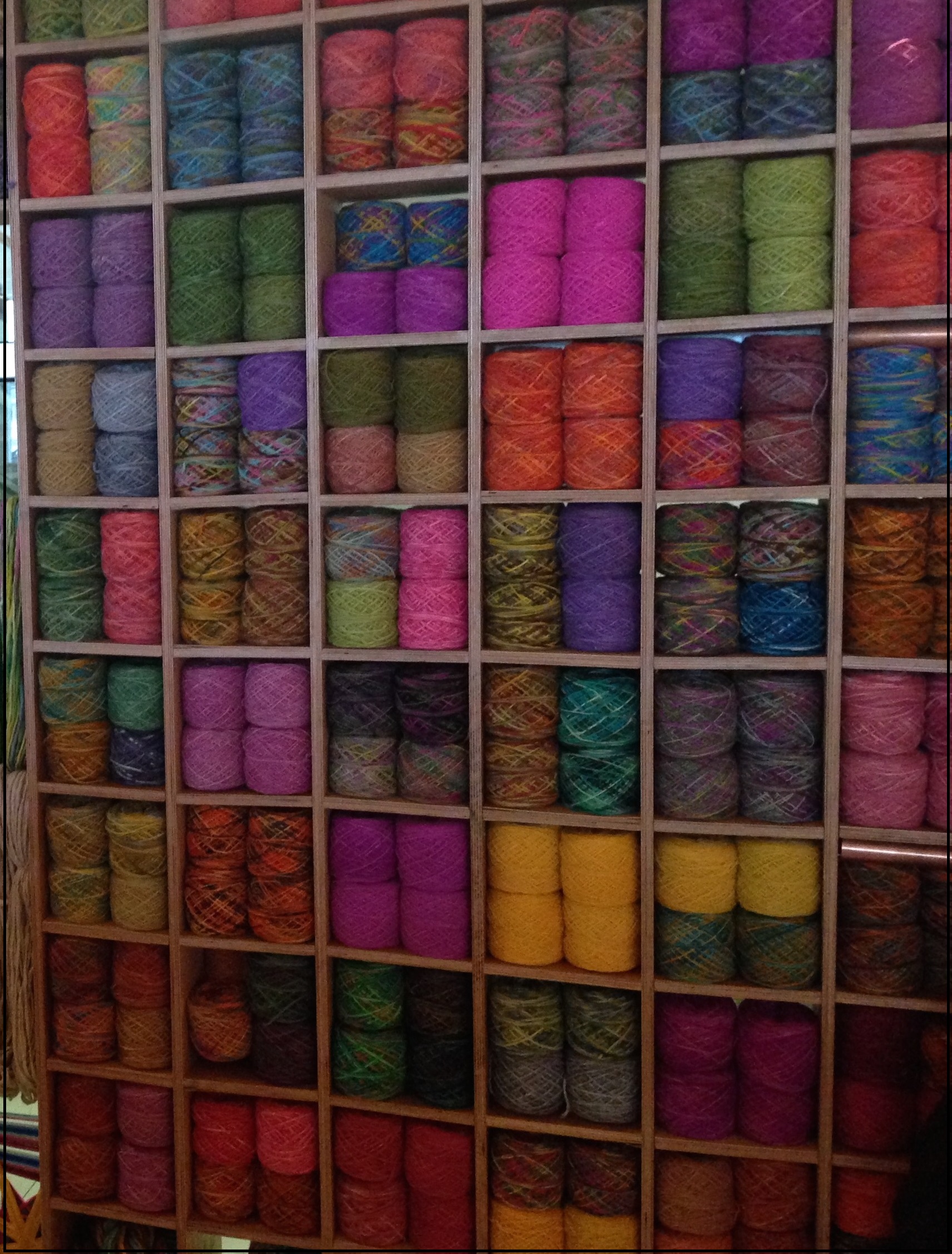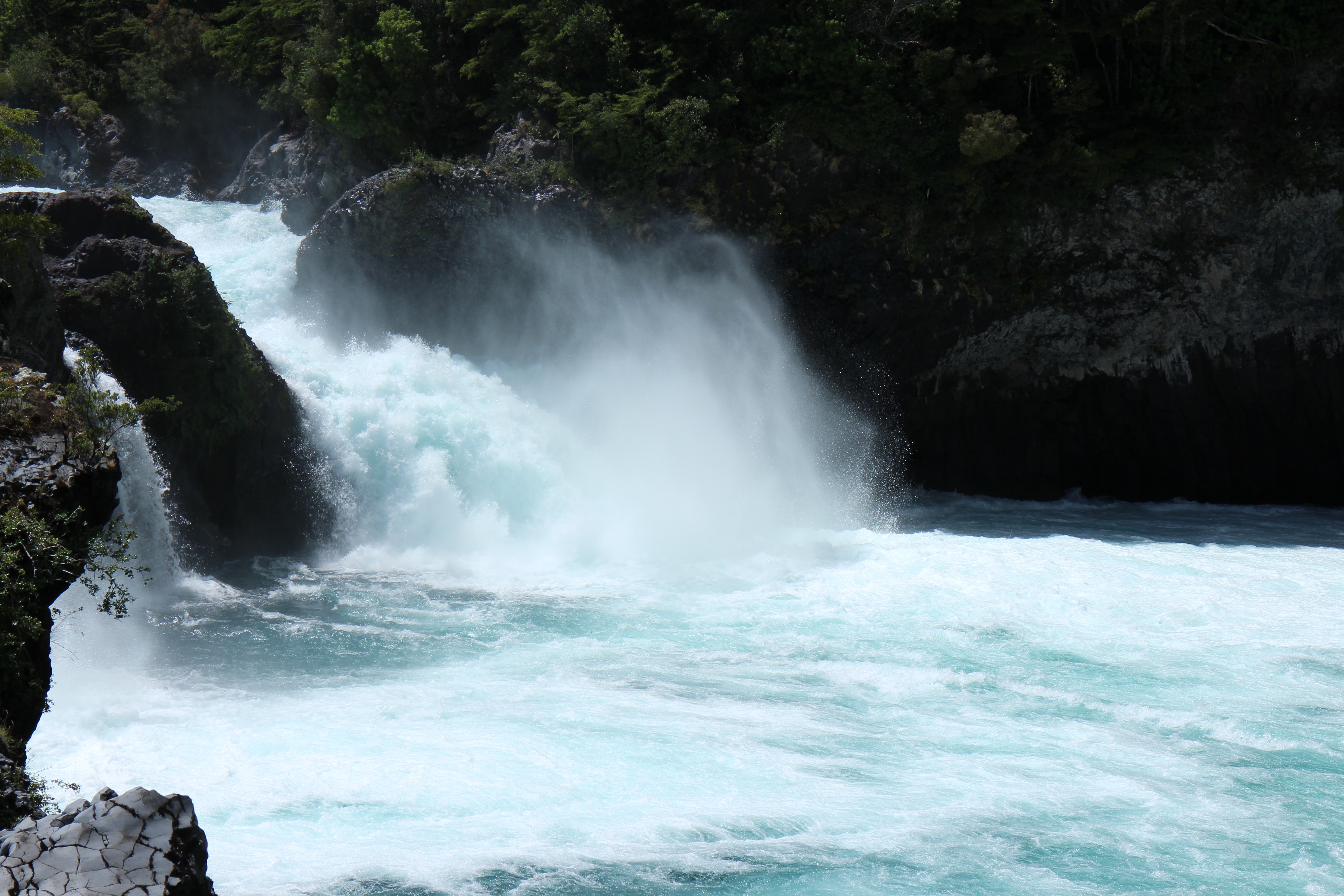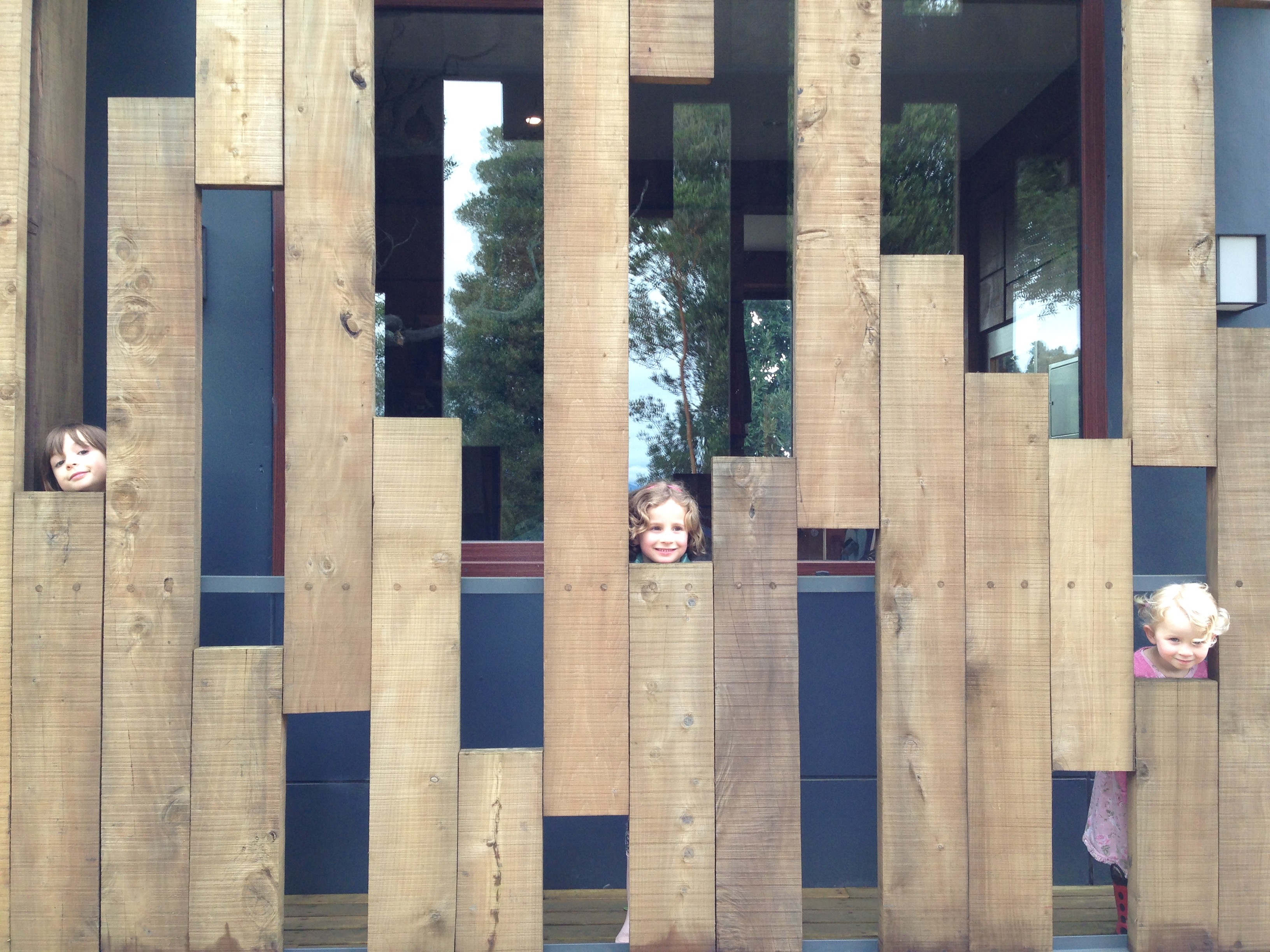Blog
CJ Kingston's Chicken Recipe

On occasion we come across tasty family recipes from years past that show a piece of our family's history. The one below, which we've dubbed CJ's Chicken, is the first of many we hope to share going forward.
This particular recipe was a favorite of CJ Kingston II, (not to be confused with his namesake, Carl John Kingston, family patriarch and founder of the Farm), the oldest of the third generation of Kingstons in Chile. Born and raised on the Farm in Chile, CJ II as he’s called within the family, grew up to become an avid cook and fan of entertaining friends and family at his home. Often he would make this recipe because of its suitability for a group of five or six and its simplicity to make.
As we were preparing to make this dish we noticed that the recipe was not Chilean or American but possibly Portuguese or Brazilian given its name. Entitled “Galinha à moda de Ana Pereira” with references to the recipe's author as Mrs. Pereira, we wondered where the recipe might have come from. A Brazilian or Portuguese neighbor? A friend who often made the recipe and introduced it to CJ? The answer turned out to be simpler, it is a Portuguese recipe found in CJ’s beloved stained copy of Brazilian Cookery by Margarette de Andrade. Wanting to share it with his sister, Susan, CJ wrote it out by hand adding his own notes for best preparation.
With the origins of the recipe solved, we delved into the preparation, buying the ingredients and prepping them for cooking. The most difficult part of this simple recipe was probably just chopping up all the ingredients. In retrospect we probably did not need to chop the onions and tomatoes so small since they managed to melt into the sauce over the hour or so of simmering. Throughout the cooking process we photographed, did lots of tasting and prepared rice and a salad. Most importantly, however, we found time to invite a group of friends over to share it. We paired the meal with our 2015 Cariblanco and 2014 Sabino and it was quite the hit. Now, we hope you'll enjoy sharing it with your family and friends accompanied by a nice glass of wine.
CJ's Chicken Recipe
Ingredients:
6 chicken thighs
6 chicken drumsticks
2 tablespoons of margarine (or butter*)
1 finely minced onion
2 tablespoons of chopped parsley
1 tablespoon of chopped green pepper
2 chopped tomatoes
1 1/2 cups stock or water
Salt and pepper
Cayenne pepper (optional)
3 egg yolks
Juice of 1 lemon
Directions:
1)Melt margarine and sauté onions for 5 minutes.
2) Then add other vegetables and continue sautéing adding small amounts of the stock or water for another 5 minutes.
3) Season the sauce, add the chicken, re-cover and steam the chicken in this sauce. Turn the chicken over once in a while and add the stock or water as necessary so that there will always be at least 1 cup of sauce.
4) When chicken is fork tender and pulls away from the bones, often cooking over medium heat for at least 1 hour, remove to a platter and strain the sauce (Note from CJ: I don’t bother straining).
5) Mix the egg yolks with the lemon juice and add to thicken the sauce. Taste and correct seasoning.
6) Return chicken to the sauce and simmer gently for 10 minutes.
7) Serve with rice (*or salad).
Note: Mrs. Pereira prepares shrimp in this sauce also.
*Notes from our most recent preparation of the dish
Skiing the Chilean Way

In the past few years our family has been fortunate to travel to two of Chile’s remarkable ski areas – Portillo, the country’s oldest and best-known ski resort, and Farellones, a mountain village surrounded by three ski areas collectively known as Tres Valles.
While we’re more than happy to take a few runs when we get the chance, we’re not really avid skiers. So for added perspective on the snow scene, we talked with some of our friends who ski a lot: Ellen Guidera, a former ski instructor and wife of Henry Purcell, whose family has owned and operated Ski Portillo for the past 55 years; and Brian Pearson, a Vermont native whose company,Upscape Travel, specializes in ski and adventure travel tours in Chile.
Portillo
Just about everyone who skis has heard of Portillo. It’s well-known as a summer destination for hardcore skiers and boarders, yet most people don’t realize how different the Portillo experience is from that of other resorts. We think this is what makes it so special. Unlike skiing in the United States, you book your stay at Ski Portillo for a full- or half-week. Many of the weeks are themed (e.g. “Family Week” or “Friends Week”), and a large percentage of Portillo’s clientele returns year after year during that same week. A number of families have been going for generations.
The resort itself consists of a cozy, banana yellow lodge with “450 pillows,” as Ellen describes it. Situated at 9,450 feet, the cheerfully-colored hotel serves as a beacon in snowstorms and is surrounded by three towering peaks, Tres Hermanos, and overlooks Laguna del Inca, a glassy, postcard-perfect lake. You get there by taking the main road to Argentina, a hairpin-heavy route that is not for the feeble. The resort runs vans to and from the airport though, so most hotel guests don’t actually drive it themselves.
There is no town associated with Portillo, so just about everything (but the skiing) happens inside or next to the lodge itself. Guests have access to a full-court gym, fitness center, restaurant and bar, heated outdoor pool, hot tub, movie theater, game room, health clinic and beauty salon. The old-school style hotel feels warm and welcoming, almost like home. In fact, during our most recent stay, our room was located near the peluqueria, outside of which one of the legendary Saint Bernards spends much of his time sleeping in the hallway. We discovered this is because the beauty salon staff give him cookies.
Last year we went to Portillo for one of two wine-themed weeks, called Wine Festival Week, which occurs in late August and also happens to be the most popular time for North American visitors. During this week a handful of small Chilean wineries host tastings après-ski. We had a great time pouring our wines for the guests – many of whom were insanely tall Austrian ski team members. This year our winemaker Amael and his wife Sofia will be participating in Wine Festival Week; we’ll also be hosting 15 guests for a snowshoe lunch and wine picnic during Friends Week.
The dining scene at Portillo is also quite different than that at U.S. ski resorts. There is a lively on-mountain restaurant (and bar with excellent pisco sours that stays open until midnight) called Tio Bob’s, however guests of the hotel eat most of their four daily meals at the hotel itself. Everyone gets an assigned table and the super-friendly waiters serve the same tables for the entire week. We love this for the camaraderie and lasting friendships it fosters. Chef Rafael Figueroa, who started his career at Portillo as a teenager and is still there decades later, prepares delicious locally-sourced hearty fare and also offers vegetarian options. We found the service to be top notch at Portillo too, which is somewhat of an anomaly in Chile. (In general Chileans focus more on the food itself than service.) There’s also a festive nightlife scene with great live music during dinner and rowdier bands that start playing around 10 or 10:30 each night in the hopping hotel bar.
Of course, there’s an excellent reason the U.S., Canadian, Norwegian and Austrian National ski teams train at Portillo during their summers: The skiing is amazing. With 1,235 acres of skiable terrain, dry fluffy powder similar to Colorado’s, and off-piste and heli-skiing options, Portillo is one of the best places in the world to hit the slopes. More than half of the terrain is advanced or expert level, but the other 45 percent of runs are beginner or intermediate and are groomed to corduroy nightly. Lift lines are basically non-existent. The resort has an expertly-staffed ski school and single-day lift tickets are available for those not staying at the hotel. It’s also just really cool to hang out for a week in the same place as the ski team members; they’re basically guests like everyone else, and there are lots of opportunities to watch them train.
We feel a special connection to Portillo and the Purcell family because, like us, the Purcells are a Chilean-American family bridging two cultures. Over the years our family has accumulated lots of funny stories related to our work in Chile, as have the Purcells. Our favorite Portillo anecdote involves Henry Purcell, who started as general manager in 1961 after graduating from the Cornell University School of Hotel Management. Upon arriving at the hotel, which was not in operation, he found a sheep named Lumumba residing in the living room.
Obviously, there is no livestock living in the hotel today, but Americans who visit Portillo - and Chile in general - should expect the unexpected from time to time. Chileans are known for enjoying the moment as opposed to doing things in a hurry. When traveling there, we often find we have to remind ourselves to check our Type A personalities at the gate. We mention this because most of the guests at Portillo are Chilean or Brazilian, and the timing of everything reflects that. The “early” dinner session begins at 8 p.m., for example, with most South American visitors opting for the 9 p.m. time slot. (Although, as Ellen tells us, once the North Americans have had a few days to chill out and get into local mode, they often change their dinner to the 9 p.m. time period.) We love this about Portillo; once we decompress we’re much better prepared to appreciate our friends, family and the stunning natural setting.
Farellones/Tres Valles
If you’re interested in trying out a variety of ski mountains, or don’t have a week to spare, most people head to Farellones, a high mountain village surrounded by El Colorado and La Parva ski areas and the nearby Valle Nevado. Located about an hour-and-a-half from Santiago, getting to Farellones is part of the fun – the steep, windy road that accesses the town has 40 switchbacks. Although it makes for a long day, it is possible to do a day trip. And many Americans who ski in Chile like that you can arrive in Santiago in the morning and, much like Vail or Park City, be on the mountain by 1 p.m.
At this point we feel we should remind you, again, to expect the unexpected. Just because you can get to Tres Valles from Santiago in an hour-and-a-half, doesn’t mean you actually will get there in 90 minutes. The narrow, twisting, barely two-lane, hairpin road is not I-70 or I-80. When we drove it last year we had to stop and wait while a donkey leisurely made its way across the road. And though it happens infrequently, snowstorms can cause the roads to shut down or simply make it more difficult to get there, chains and four wheel drive are a must if you decide to go in winter.
But of course, most people who visit Chile in winter are up for an adventure! And Tres Valles presents many opportunities for that.
Of the three resorts, Valle Nevado is the newest, built in 1989. It also has the most modern infrastructure – it’s the only resort in Chile that has a gondola (but the gondola runs from a parking area to a mid-mountain restaurant, so you don’t actually use it for skiing in the traditional sense). Most of the terrain is intermediate, advanced or expert – our friend Brian tells us there are some pristine backcountry bowls for off-piste missions – and about 10 percent of the runs are beginner level. The base lodge is located above tree line at 9,800 feet, so if you’re not acclimated, it will take your breath away in both the literal and figurative senses. Even if you’re not a skier, it’s worth the drive up there just to feel the power of the magnificent Andes.
Nearby El Colorado is more of a “locals” mountain with older lifts. Many of the runs are beginner or intermediate. For expert skiers, the eastern side gets tons of snow and offers steep pitches and interesting chutes for those who can handle them. La Parva, the third ski area in Tres Valles, has good treeless intermediate terrain and excellent views. For experts there is some great hike-to terrain above the resort.
As we mentioned earlier, we are not ardent skiers, so for a more detailed sense of the possibilities we suggest checking out Upscape’s website to learn about guided tours of Chile’s ski country. In addition to having excellent knowledge of many Chilean ski resorts, including some we haven't visited, Upscape offers heli-skiing and works with Ski Arpa, the only cat skiing outfit in South America running back country tours. Located at 13,000 feet, Ski Arpa is a rugged, high-altitude wonderland that overlooks Mt. Aconcogua, a 22,838-ft. giant, and the Pacific. Some of the tours also include visits to local wineries (which is how we met Brian in the first place) and include stays at quaint Chilean chalets and inns.
During our talks with both Ellen and Brian, we laughed about one of the issues that sometimes occurs while skiing in Chile. Occasionally there are big storms – storms like the one that just dumped a record-breaking nine feet on Portillo – that shut down the roads that get you to (and from) the resorts. Not only do the roads shut down, but the lifts close, too. So there could be piles and piles of fresh champagne powder and a bluebird sky beckoning. And you may be dying to get out there. But you won’t be able to do that. The lifts will open when the lift ops can reach them. Sometimes this takes a while. Which means that you will have to slow down, take lots of deep breaths, savor your breakfast (and maybe lunch) and enjoy the glorious one-of-a-kind surroundings. Eventually you will get outside and experience some of the best skiing this earth has to offer.
If you find yourselves with some extra time during your visit to Chile, stop by our winery for a tour. We'd love to see you.
Cats on Hot Tin Roofs: A Visit to Valparaíso

When deciding which travel destinations to write about for this blog, we’ve chosen to focus on those that are uniquely Chilean and unlike anywhere else in the world. Valparaiso is one such place. With its brightly painted buildings, abundant street art, crazy steep hills, Bohemian vibe, wiring that would cause a U.S. building inspector to go weak in the knees, cats everywhere, and lately, a hip food scene, “Valpo” (as some people call it) has originality and character oozing from its historic rainbow-colored seams.
Located just thirty minutes from our family’s winery in the Casablanca Valley, we often go for the day and sometimes spend the night. Here are our recommendations for what to see, do and expect in this eclectic city by the sea.
Getting There
If you’re visiting Valparaiso from Santiago, we suggest arriving mid-morning and staying at least through dinner so that you can have two full meals and experience the city lights at night. One of the most common comments we hear from guests at our winery is that they wish they had allotted more time in Valparaiso, so if your schedule allows, it might be worth it to stay longer.
We suggest hiring a driver to get you from Santiago and back (we’d be happy to provide some names) instead of renting a car because rentals are only available in stick shift. If you haven’t driven one for a while – or ever – practicing on roads that are steeper, curvier and narrower than San Francisco’s Lombard Street might not be the kind of adventure you’re seeking.
Finding Your Way
You’ll likely notice something unusual about Valparaiso the instant you look at a map. The area closest to the water appears to be a traveler’s dream: The streets are neatly delineated in traditional grid fashion. But then, emerging from the tidy grid and closely resembling a plate of spaghetti are oodles of interconnecting squiggly lines. These are the roads snaking up the city’s sheer hillsides. Unlike places that take advantage of a waterfront location for tourism, Valparaiso’s low, flat “plano” represents the working port section of town. This makes sense because of the city’s history – before the Panama Canal existed Valparaiso was the largest port between Europe and the west coast of the Americas – and until recently Valparaiso wasn’t really a tourist “destination” at all. But you’re going to want to head for los cerros (the hills).
The two most visited cerros of Valparaiso are Cerro Concepción and Cerro Alegre. Both make up part of the area that was designated a Unesco World Heritage Site in 2003. If you are in decent shape, it’s fun to explore them on foot. Like London or any old city that grew organically, the streets go every which way and are dictated by the topography. Sometimes they change names, and direction, so it’s easy to get lost. We find this part of the allure.
If you prefer to have more structure to your visit, a number of companies offer guided walking tours. We highly suggest one of the three-hour “Tours 4 Tips” tours that leave from Plaza Sotomayor every day at 10 a.m. and 3 p.m. Alternatively, there are do-it-yourself routes indicated by markers in the pavement. These take you up and down a number of narrow staircases and along the paseos that provide views of the city and sea. If you’re interested in getting a better feel for the hills and the staircases, and you’re not subject to motion sickness, the annual Valparaiso Cerro Abajo mountain bike race provides an extreme example of a way to get downhill.
In our opinion, a slightly safer way of getting down (or up) the hills is on one of the city’s famous ascensores, which are funicular elevators that cost 100 pesos (less than 15 cents) per person. The first one, built in 1883 and still in operation, is located on Cerro Concepción. When on it we’re reminded that our great-grandfather rode the same one a century ago. Going up (or down) the rickety elevators may cause you to pause and hope you’ve had a good life – that is, until you look out and consider the colorful hodgepodge of art and activity that makes Valparaiso so fascinating.
What to See
For most people, Valparaiso is not a “love at first sight” type of place. Many of the brightly painted buildings are old and weathered and there is graffiti everywhere. As we mentioned, it’s not easy to get from place to place, and to be honest parts of the city are gritty and dirty. But once you study the street art, or take note of the funky new buildings cropping up among the ancient Victorian homes, or bump along the insanely steep streets, or try to count all of the cats hanging out on tin roofs and in windowsills, you may start to like it. At least that’s been our experience. For us, Valparaiso is a city that grows on you. If you compare it to Santiago, the capital is mature and sophisticated; Valparaiso, though old, is still young at heart, free-spirited, and doesn’t take itself too seriously.
Nowhere is this more evident than in the street art, which decorates a large percentage of the city’s walls and can be divided into two categories: murals and graffiti. While it’s often hard to distinguish the two, murals are legal and commissioned by homeowners to prevent unwelcome tagging. Graffiti, which is everywhere, is illegal. But graffiti “artists” respect the muralists’ work and won’t scribble on top of it. Because a clean wall is essentially a blank canvas, porteños pay muralists to paint their homes instead of leaving it up to the bombers (as they’re now called in the U.S).
In addition to street art, you’ll find lots of hidden alleyways, shops, restaurants and unusual sightings on the hills that provide glimpses of the happy-go-lucky nature of Valparaiso. Recent visits have revealed a “store” that someone set up outside a kitchen window on a street in the 30-degree gradient range. Sale items included an egg carton containing cracked egg shells planted with delicate little flowers and a cast-iron skillet, also filled with planted eggs.
Another sighting involved a street performer, for lack of a better term, who was operating a finger puppet show. To view the show you had to sit in a chair and cover your head with a black sheet. The puppeteer then draped the other end of the sheet over his head and the performance began. We can’t think of anyplace else where someone would consider sitting on a sidewalk, with their head waist-level under a sheet, to see a puppet show; yet we witnessed a mother who dutifully stood next to her young daughter as she took in a performance.
We also saw lots of cats (seven from one vantage point) and at least three of them were hanging out on corrugated tin roofs. If you happen to prefer dogs, don’t worry, there are a fair amount of scruffy mutts roaming around, too. Unlike some of the dogs in Santiago, they’re not wearing sweaters. Also, it’s good to keep in mind that picking up after your pet is definitely not Chilean, so you generally need to watch where you step.
One gray morning we strolled around the city and were struck by all the seagulls squawking overhead. Maybe this is why a restaurant was playing the entire “Flock of Seagulls” album when we stopped in for lunch. On another day we listened to a man walk the streets as he beat a gas canister, over and over and over again, to alert people that he was in the neighborhood. He was selling gas for estufas, which are essentially space heaters, that many people use to warm their homes in the winter. And just about every time we head outside we stop to wonder about the tangle of wires emerging from power poles – it seems miraculous that the electricity works at all.
If you happen to be in Valparaiso on a Sunday at noon, one of our favorite things to do is attend the organ concert at St. Paul’s Church. We like sitting in the historic wooden pews while listening to the beautiful organ that was made in England and donated by a British resident in 1903. Not only is the music lovely (most of the time – the organists are volunteers), but the church provides a cool respite on hot days. It also serves as a great example of the city’s diverse history and its ties to Europe. On the back wall is a list of British soldiers who died fighting for England during both World Wars. And down the hill from the church are two fire stations: one formed by Germans and one by English ex-pats. Called bomberos, the all-volunteer fire departments still fight the city’s fires today.
Where to Eat
One of the top reasons to visit Valparaiso these days is for the food – and the ice cream. After walking the city you’ll probably want to eat. Porteños generally don’t sit down for lunch until at least 1:30, so you’ll need to plan for that. We really like Café Turri, Pasta e Vino and Café Vinilo. Other popular spots are Almacén Nacional, a newish restaurant that serves Chilean classics, and Restaurant Montealegre, in the boutique hotel Casa Higueras, which has an outdoor terrace with views of the Pacific. On Cerro Concepción Restaurant La Concepción serves a mouth-watering ceviche and a dangerously delicious pisco sour. But our absolute favorite spot – and our consulting winemaker Byron Kosuge’s “happy place” – is Espiritu Santo.
Located on Cerro Bellavista, the minimalist restaurant and hosteria is owned by our new friend, Doña Laura, and her son, Manuel. Tastefully decorated, we think Espiritu Santo typifies the city itself; aged and worn on the outside, warm and welcoming inside. The innovative menu features fresh, locally-caught fish and organic vegetables. Some recent meals we’ve loved there include octopus with miso sauce and rock fish perched upon polenta, olives and roasted vegetables. Our winemaker, Amael Orrego, and a few of our guides are also fans of the house cocktail made with freshly squeezed grapefruit juice.
If you’re spending the night, we might suggest trying someplace else for lunch and saving dinner for Espiritu Santo. However, one of the advantages of eating there at lunchtime is that it is located just a few blocks from La Sebastiana, one of Pablo Neruda’s three homes. (The other two are located in Santiago and Isla Negra.) The five-story house offers an audio tour, and provides insight into the life of Chile’s most famous poet. It’s a must see if you’re into poetry, literature or Chilean history.
Earlier we made a reference to ice cream. While in general porteños don’t take themselves too seriously, they mean business when it comes to ice cream! We find it makes a great afternoon snack because dinner comes late, at 9 p.m. Lots of little shops sell inventive and ever-changing flavors; we stopped in a dulceria during our last visit and had a hard time deciding between pears and wine, pistachio, and limon de pica, which is a special kind of green lemon found throughout Chile and commonly used in pisco sours.
Where to Stay
We recommend a number of lodging options, all of which are quite different from each other. We love Hosteria Espiritu Santo – it’s simple, clean, quiet and comfortable. Zero Hotel, a B&B located in a huge historic Victorian house, is also a great choice. It has unobstructed views of the city and the ocean in the distance. For a sophisticated yet cozy option, we suggest Casa Higueras. Palacio Astoreca opened in 2012 in a restored national monument, and has a spa. The trendiest option, Hotel Fauna, has really cool architecture, but it can be noisy. Next door is Via Via, an excellent boutique hotel with arguably the best Belgian beer selection in the city, and a delicious lunch menu.
Morning in Valpo
If you happen to spend the night and need something to do in the morning, we suggest heading over to Mercado El Cardonal to check out the piles of local produce. We think it’s fun to see the mountains of cheap avocados, barrels of olives and variety of local fruits and seafood that you won’t find in the U.S. Upstairs you’ll discover a smorgasbord of mom and pop lunch spots, all serving the same classic Chilean sandwiches: barros Luco (a beef and cheese sandwich named after a past president), barros jarpo (ham and cheese), a completo (a hot dog covered with tomato, avocado, and sauerkraut), or the completo’s more popular brother, a completo italiano (hot dog smothered with tomato, avocado and mayonnaise).
An alternative is to stop by our winery for lunch and a tour on your way back to Santiago. With advance notice, we'd be happy to arrange a private, catered meal (minimum of four people), that pairs three courses with our wines.
How Can We Help?
Many of our crew at the winery live in Valparaiso. Should you be looking for additional tips about the city, feel free to e-mail us at guests@kingstonvineyards.com with questions. We’re happy to help!
¡Saludos!
Meet Our New Winemaker: Amael Orrego

Last July we welcomed a new winemaker, Amael Orrego, to head up our family’s winery in Chile. Amael joined us from Viñedos Emiliana, a well-respected organic winery located in nearby Colchagua, a few hours’ drive south of Santiago. Thanks to the introduction by a trusted friend and winemaker, our first meeting was over coffee where Amael’s passion for organic winemaking impressed us. His broad experience working at vineyards in both the U.S. and Chile lent itself especially well to our Chilean-American family. Plus Amael’s connection to Casablanca is strong – parts of our valley are still named after his ancestors. We immediately knew he was the right person for the job. Not only were his values and goals in line with ours, but we had the feeling that he was a genuinely nice person and inspiring leader to boot.
Our team at the winery is small yet diverse, including our cellar crew and our guides who welcome and host guests for tastings and tours by appointment. Amael has led and created a trusted team in his year working with us. His hands are just as wine-stained as our cellar crew’s, and his boots dusty as he spends much of his time walking our blocks in the vineyard with Pato, our vineyard manager. On Friday afternoons during our long and often intense harvest, Amael gathers the team on our terraza overlooking the Casablanca, to relax and taste a special bottle of wine together.
Recently we sat down to ask Amael a few questions about himself, to find out about the best wine he’s ever tasted, and to learn more about his unbridled enthusiasm for organic winemaking. Below are his answers, translated from the original Spanish.
1) What interests you most about Kingston Family Vineyards?
I've always been a fan of Kingston Family wines, and I was especially drawn to the possibility of working in a small family winery. I knew I didn’t want to be an “office winemaker” in a large operation. I like to get my hands dirty in the cellar and vineyards where wine is really made. In a truly boutique operation, you get the chance to do that. That’s quite unusual in Chile, where many wineries are quite big. I was also intrigued by the opportunity to work in Casablanca, a cool, coastal valley known for its world-class wines. The Kingston Family vineyard is located in the coldest, westernmost part of the Casablanca valley, which is exciting for the challenge. Finally---only 10+ years into my career, the opportunity to work with well known and experienced winemakers from Chile and the U.S., like Byron Kosuge, was also a draw.
2) What is your experience with organic winemaking and why are you passionate about it?
I have always been focused on organic agriculture and sustainable farming practices, both in Chile and in the United States. We’re in debt to the environment, and sustainable and pesticide-free agriculture is the way forward. I also think that organic vineyard management is the best way for a vineyard to show it’s full potential. With balanced and healthy vineyards, you can produce even higher quality wines.
3) What is your family’s connection to Casablanca?
My last name is Orrego and much of the valley of Casablanca many years ago belonged to ancestors on my father’s side. Today there are still parts of Casablanca named after my family, some actually quite near the winery. In the Kingston farm offices, there is an old map dating back to 1932 that references “Orrego Abajo” and “Orrego Arriba”. But I actually grew up in Cajón de Maipo, on a horse farm just outside Santiago near the base of the Andes. Today it’s a lodge, cabins and nature preserve on 3600 acres called Cascada de las Animas
. 4) When did you first realize that you wanted to become a winemaker?
I went to college hoping to study winemaking. In Chile we declare our focus of study earlier than in the U.S., and I’ve always been drawn to winemaking and viticulture because of it’s deep connection to the land. I also like that winemaking and viticulture are a special combination of art and science. To craft a special wine that speaks of a place, you have to get outside of the winery, searching far beyond the barrels. You have to understand the terroir, the geography, climate, flora and fauna, the physiology of plants. Being a winemaker gives you the opportunity to work with exceptional people and be part of a beautiful process that evolves each year.
5) Who are your mentors and why?
I am thankful to have had the opportunity to work with Alvaro Espinoza. I have always admired Alvaro. Not only for being one of the most important and respected winemakers in Chile and the world, but especially for being a great person who is extremely open and accessible. He is undoubtedly the pioneer of organic and biodynamic agriculture in Chile.
6) What’s the most memorable wine you’ve ever tasted? What made it so memorable?
I have been fortunate enough to try many unforgettable wines so far in my life. But without a doubt, a bottle of 2009 Quintessa Cabernet Sauvignon stands out. Sofia, my then girlfriend--and now my wife--and I shared a bottle back in November 2013. I remember it not only because of the remarkable wine, but also because of the great company, the conversation, and the deep connection I felt that winter night. Probably not coincidentally, that’s the night I knew I wanted to spend the rest of my life with Sofia.
Atacama: A Desert Oasis

If you’re a looking for a spectacular vacation destination where you can simultaneously recharge your batteries and explore an other-worldly natural habitat, we think the Atacama Desert is an excellent choice. Atacama is one of Chile’s "travel trifecta", along with Patagonia and The Lake District, and is home to a natural marvel, the San Pedro oasis.
Surrounded by a dramatic landscape that looks like the surface of Mars, the colorful oasis consists of the Incan town of San Pedro, active volcanoes, salt flats, and hot springs. It also has geysers that rival Old Faithful (minus the crowds) and geological formations that make us wish we’d taken “Rocks for Jocks” instead of “Physics for Poets” to fulfill our science requirement in college. And Atacama’s clear blue skies, low humidity and high altitude make for incomparable stargazing.
Unlike Patagonia and The Lake District, Atacama is relatively easy to access, and the presence of an actual town with restaurants and a pharmacy make it feel less remote than Patagonia’s Torres del Paine. Widely recognized as a wonderland for adventure travelers, the majority of visitors go for the hiking and mountain biking, wildlife viewing, or because they are driving across South America and it’s a really cool place to stop. However, there are also a number of luxury resorts featuring top-notch spas, unparalleled scenery, and delicious food and wine, so in recent years it has become much more desirable for families with young children and travelers who are simply looking for peace and quiet.
We visited Atacama twice in 2014 – once with our kids – and our Chilean relatives (ranging in age from 10 months to mid-70s) returned in 2015. Below is a sample itinerary we’ve put together based on the Kingston family’s experiences. We hope you find it useful as you consider a trip south to Chile.
Getting There
The most direct way to get to Atacama is to fly into Calama, a two-hour flight from Santiago, and then drive roughly an hour to your hotel in San Pedro. Three airlines access the airport: Sky, Lan Chile and AeroDesierto. Most of your fellow passengers will likely be miners (30 percent of the Chilean economy is based upon mining and the world’s largest open pit copper mine, Chuquicamata, is located just outside of the city), astronomers (don’t accidentally call them astrologers!) and tourists, many of whom will already be dressed in sensible hiking gear, including boots.
Flying into Calama may cause you to feel a bit like Matt Damon in the recent movie “The Martian.” As you descend, all you will see for miles and miles is reddish brown earth accented by tumbleweed, out-sized wind turbines and maybe a small sand storm. We advise against renting a car for safety reasons, some of which we’ll explain later, but most hotels offer airport pick-up, and all of the tour operators have their own well-equipped vehicles so you really do not need a car of your own.
Once on the road, you’ll travel along a flat, straight highway for what seems like forever. You may begin to question what you’re doing there. It’s pretty bleak. You’ll spot few other cars on the highway, except for an occasional turismo van or massive mining truck.
After some time you’ll realize you’ve been gradually ascending a mountain. You’re almost there when you reach the crest, peek over the edge, and see the oasis down below. We were blown away the first time we reached this point. No longer flat, barren and isolated, the red landscape suddenly features all hues of blues, purples and greens backed by massive volcanoes that mark the border between Chile, Argentina and Bolivia. As we drove toward the oasis, we saw vicuñas, a dainty version of alpacas, romping along the hillside. The experience was like cartoon characters witnessing a mirage; the scene was Sedona on steroids.
Four Days in the Desert
We recommend at least three full days to see Atacama’s highlights. As with all travel to South America, we suggest that you pad your trip with an extra day at either the beginning or end of the vacation. All of the U.S. cities that offer flights to Santiago operate only one per day, so it’s generally a good idea to have a back-up plan in case of a delay.
Day 1
The town of San Pedro is located at 7,900 ft., so you’ll want to make sure to give yourself time to acclimate before undertaking any strenuous activities, many of which take place at even higher altitudes. One good way to do this is to arrange for a guide (before you arrive) and go to the Valle de la Luna (Valley of the Moon) on the day of your arrival. Assuming you get to Atacama mid-day, this is an easy activity located about 15 minutes from town.
On our second trip we hired Gustavo Bustamente (gustavobustamante@gmail.com) for the duration of our vacation. Gustavo previously led excursions for two of San Pedro’s top resorts, and took us first to this surreal area that becomes even more remarkable when the sun sets. (The terrain is so much like that of the moon that it was once used to test a Mars rover prototype.) He was extremely knowledgeable about the crazy striped rock and sand formations that make up the dramatic landscape; it was at this point that we wished we knew more geology.
If Gustavo is not available when you need him, we also highly recommend an outfitter based in Santiago called Upscape Travel, which is owned by Brian Pearson, originally from Vermont. A third tour operator, Cielo Norte, gets rave reviews as well. Regardless of whom you work with, we definitely suggest hiring a guide because they are prepared for all types of desert situations.
Day 2
Another adventure that is suitable for all ages is a visit to Laguna Cejar, a beautiful turquoise lagoon that meanders among a hard, dry salt flat. It is about an hour’s drive south of San Pedro, and some people ride bikes to it and have a picnic. We went to this area with guides from the hotel. They brought along lounge chairs and libations, including lots of water, while we relaxed and explored by the lagoon. Our kids had a great time wading in the buoyant water, and they quickly learned the reason that you need to rinse off upon getting out: the salt burns your skin as it dries! Speaking of burning, there is no shade here, so you definitely want to have adequate sun protection.
We visited Laguna Cejar in the morning and returned to our hotel for lunch. On this trip we stayed at Alto Atacama, a beautiful, eco-friendly resort that blends seamlessly into the hillside. It has seven (!) pools and our kids spent the afternoon swimming in as many of them as they could access.
Before sunset, we took another guided trip to Laguna Chaxa and Los Flamencos National Reserve. The terrain here differs from that of Laguna Cejar in that it features areas where melon-sized chunks of salt coat the earth. We think it looks like city snow after it’s become hard and grey. You will want hiking boots as opposed to regular sneakers for this activity; it can be challenging to walk on the rocky salt.
A number of endangered species including the southern viscacha (a rodent that resembles a squirrel with bunny-like ears) and vicuñas roam freely here and the three types of flamingos found in Chile also live in this area. The awe-inspiring image of hundreds of flamingos in their natural habitat at sunset is a memory we will have forever.
One of the reasons we do not recommend renting a car is because of the wildlife – and sometimes livestock – in the area. On our dark ride home from Laguna Chaxa our driver slowed to a near stop at one point because there are often donkeys sleeping in the middle of the road; the asphalt retains the heat from the sun so they snooze in the street because it’s the warmest place at night.
Although this day did involve a fair amount of driving and effort (everything is spread out and there isn’t really a logical “route” you can use to access these places in order), the drives are stunningly beautiful so everyone enjoyed them.
An alternative evening activity involves a visit to one of the mini observatories in the area. Atacama is well known worldwide as an astronomer’s nirvana, which is why the internationally-renowned ALMA Observatory is located there. ALMA is not open to the public, but a number of companies provide “star tours,” which usually involve driving to various telescopes in the desert or going to one of the observatories. We went to an observatory near our hotel and found it mesmerizing.
Upon entering a pitch black room, the roof opened and the “show” began. Using a red laser pointer, our guide pointed out stars, planets and constellations in galaxies that seemed far, far away. There were also telescopes through which we could see everything “up close.” The experience was very similar to a planetarium field trip, except that these were real stars, real planets and real constellations as opposed to those you see in a pre-recorded movie.
Day 3
One of the most popular spots to explore is El Tatio, a geyser field consisting of more than 80 active geysers. Many people (and we do mean many) take sunrise tours to see them. To do this, you typically get up at 5 a.m., drive about an hour and watch the sun rise around 6. The golden sunlight behind the white plumes of steam is absolutely striking and unlike anything you’re likely to see anywhere else. Also unlike other places with boiling geysers surrounded by unstable ground, there are no signs or barriers to keep you away from them. So you need to watch your step, especially with kids. We highly recommend staying on the paths.
El Tatio is located in an area called the Altiplano, which translates to “foothills” of the Andes. Starting at 14,170 ft., these are not ordinary “foothills.” Altitude sickness is a serious concern and needs to be considered. It’s cold at sunrise – very cold – so you definitely need warm clothing, including hats and gloves, for the early morning tours.
Most tourists leave El Tatio around 9 a.m. after swimming in the hot springs and having a picnic breakfast, but we recommend staying for a hike in the area after the crowds depart. The terrain is very different than the desert floor, as are the plants and animals. We saw some beautiful ducks and exotic birds, as well as more vicuñas and guanacos, which are all in the llama/alpaca family but range in size and elegance.
After our breakfast, which included some amazing high-altitude and high-test coffee made by Gustavo, he led us on the seven-mile Copa Coya hike. It’s challenging, but mostly because of the altitude – it starts at 13,000 feet and finishes at 14,000. Some of us tried it in preparation for the extreme Volcán Lascar hike the next day, but had to quit due to headaches, disqualifying us for the volcano trek. While the friends who were not affected by altitude summited Lascar on our last day, the rest of us were inspired by some Russian tourists we saw at the El Tatio hot springs and hung out in the Explora Hotel’s Purisima hot springs instead.
Day 4
In recent years, Atacama has become a destination for extreme athletes. The Atacama Crossing, for example, is a seven-day 155-mile footrace that takes place every year in October. Another popular activity is sandboarding, which is similar to snowboarding, and can be practiced on the dunes near San Pedro in the Valle de la Muerte (Valley of Death). We had heard it helps to know how to snowboard before trying it, so we opted to leave the boards behind and run down the dunes instead. The kids couldn’t have been happier, and the adults equally enjoyed the carefree feeling of running uninhibited downhill. If you do this, make sure to go in the morning because the sand gets too hot on your feet in the afternoon.
For those interested in hiking, one of our favorite routes is the “cactus hike.” Beginning at nearly 10,000 ft., this hike originates where the warm thermal springs of the Rio Puritama meet the icy waters of the Andes’ fed Rio Purifica. The two- to three-hour excursion takes you past waterfalls, rocky outcroppings and humungous Candelaria cactuses. This trek is ranked “medium” in terms of difficulty and is another striking example Atacama’s amazingly varied scenery.
If extreme challenges are up your alley, there is the Volcán Lascar trek. This hike is not offered by any of the local hotels because it starts at 15,912 feet. To do it, you need to be in excellent physical shape, and most of the local guides will not take you unless you’ve demonstrated you can handle the altitude. (As we mentioned, we failed the test the day before.) The three to four-hour hike is not technical and bad weather is rarely a factor.
Although altitude sickness prevented us from even attempting this trek, our friends who did it reached the 18,346-foot summit where they saw smoke rising from the crater of the most active volcano in the Chilean Andes. To a certain degree, we see this hike as a metaphor for Chile itself. It’s not easy getting there, and not everything always goes as planned, but the experience is well worth the effort.
When to Go
Most people go to Atacama in the spring (November) because of the lengthening days. There is also the greatest chance of seeing El Flor, an amazing natural phenomenon that only occurs in years when it rains more than normal and causes hundreds of species of desert wildflowers to bloom all at once. We went in winter, however, (June) and thoroughly enjoyed it. It is considerably less crowded. Daytime temperatures reach about 70 degrees and nights drop to the mid-thirties. If you are interested in seeing the Southern Cross and other constellations, plan your trip around a new or blue moon. When the moon is full, you cannot see the stars.
Where to Stay
Scattered in and around San Pedro are a variety of hotels, ranging in price and quality from hostels to luxury properties. We highly recommend the following resorts and inn.
Alto Atacama. Situated on the far side of a small river in its own valley about 10 minutes outside of town, this adobe-style, energy efficient resort melds into the landscape. We stayed here with our kids and loved it. The property has a rustic, mountain lodge-feel to it, like something you would find in Jackson Hole, Wyoming. It is very family friendly and, as we mentioned earlier, has seven pools! Our Chilean relatives also stayed here during their November 2015 vacation and, despite the remarkable surroundings, a number of them never left the premises.
Explora Atacama. Originally built in 1998, Explora was the first luxury hotel in the region and is currently undergoing a major renovation. It is slated to reopen in January 2017. Explora has its own private hot springs (which you can use for a fee, even if you’re not a hotel guest) and offers 40 full- and half-day excursions.
Tierra Atacama. Located on the edge of town, Tierra Patagonia is a beautifully-designed hip boutique hotel owned by the Purcell family, who also own the Portillo ski resort. The modern property features a gorgeous spa and offers a variety of marvelous excursions. The restaurant serves creative, local fare and offers drop dead views from many parts of the property. We stayed here once (without kids) and hope to return.
Pasqual Andino. This is a small bed and breakfast in town with eight rooms. We stayed here for a few nights when Tierra was booked. It’s more reasonably priced than the resort properties, and is very comfortable, clean and nice.
One final note: Should you be visiting Patagonia, The Lake District and/or Atacama during one trip to Chile, Tierra and Explora often offer discounts if you stay at more than one of their hotels.
What to Know and Bring
Packing for the desert is much like packing for the mountains. You will need to bring – and use – sunscreen, sunglasses and a sunhat. You’ll also want layers including a winter hat and gloves for when the sun goes down. You definitely want to bring hiking boots because some of the terrain is difficult to walk on and regular tennis shoes won’t cut it. Plan on drinking lots of water to stay hydrated.
How Can We Help?
Should you be considering a trip to Chile, we would be more than happy to help you with planning assistance or additional travel tips. Feel free to e-mail us at guests@kingstonvineyards.com.
We would also like to welcome you to visit our family’s farm and vineyard only an hour outside of Santiago en route to Valparaiso and the coast, another popular destination. We offer private tours and tastings year-round at our vineyard overlooking the picturesque Casablanca Valley.
Wine and Chocolate: Creative Pairings

Over the past few years we’ve had the great fortune to travel around the U.S. hosting wine dinners at top restaurants such as the James Beard House in NYC, La Mar in San Francisco, and the Amangani Resort in Jackson Hole, Wyoming. Through these experiences we’ve enjoyed how some of the country’s best chefs pair our wines with exceptional food in novel, imaginative and often surprising ways.
One of the most exciting side benefits of these dinners is meeting great people, many of whom share our passions for travel, innovation – and chocolate! It was in Chicago, for example, where we met Katrina Markoff, the pioneering founder of Vosges Haut-Chocolat, who was one of the first chocolatiers to incorporate unexpected ingredients (such as bacon) into her creations. And in Bozeman, Montana, we met Parisian-born Wlady Grochowski, who with his wife, started La Châtelaine Chocolat Co. after moving to the U.S. and struggling to find high-quality, artisan chocolate.
After getting to know these entrepreneurs who have pushed the boundaries of their crafts in inventive — and sometimes wacky — ways, we started to think about different means of intermingling our wines with chocolate. We began serving one of our all-time favorites, Esther Price’s dark chocolate, with our Syrah at the end of our winery tours. We arranged a tasting event with Vosges in Chicago. Our marketing manager, Eliana, got into the fun by baking cupcakes using our Bayo Oscuro Syrah and blogging about it. Maybe not coincidentally, a great chocolate shop in Santiago contacted us about blending our Lucero Syrah into its chocolate liqueur.
And then we began experimenting with pairings on our own.
As Valentine’s Day quickly approaches, we thought it would be fun to inspire our friends and family to try some wine and chocolate pairings. There are lots of guidelines on this topic (light wine/light chocolate, dark wine/dark chocolate), but we firmly believe that there are really no “rights” or “wrongs”— ultimately what you put together and enjoy is a matter of personal taste. Below we outline some combinations that worked for us; we hope that you will come up with some of your own.
Getting Started
We set out to find a citrus-flavored dark chocolate, a chili-infused dark, a caramel-filled variety and a milk chocolate at our local specialty market. We had some specific brands in mind, but ended up with completely different ones. We also came home with some extras: a rich dark chocolate, a nutty-flavored dark and a white chocolate.
Just as our shopping didn’t go exactly as planned, our tasting session didn’t, either. We had imagined our event to be an elegant and well-organized affair, with the chocolate nicely displayed on china, and a white tablecloth background. We were going to do a photo shoot. But tight schedules and unexpected travel forced us to adjust our plans. Ultimately, we did the tasting at the kitchen table. And it included a five-year-old. We took photos with our phones — and tried to take better ones later in the day — only to discover that our friend's dog had sneaked into the pictures.
Despite our missteps, the tasting yielded some fun surprises and unexpected results. Everyone loved the pairing of citrus-flavored chocolate with Cariblanco Sauvignon Blanc. We thought the spicy chili-flavored chocolate would couple nicely with the spice notes of our Lucero Syrah, but it didn’t — the wine intensified the chili flavor causing our throats to temporarily burn. We didn’t expect to enjoy the white chocolate with anything — and we didn’t.
Our Favorites
2013 Cariblanco Sauvignon Blanc with Citrus-Flavored Chocolate
For our first pairing, we matched the citrus elements of our 2013 Cariblanco with citrus-flavored chocolate. We started with Alter Eco Dark Twist, a vibrant and tangy chocolate made with crystallized orange peel. We also sampled TCHO PureNotes Dark Fruity chocolate. Both paired nicely with the crisp notes of the Sauvignon Blanc, offering bright and refreshing combinations. Yet ultimately we preferred the intense orange flavor of the Alter Eco to the more subtle citrus hints of the TCHO. (The five-year-old did not care for either of these chocolates with her milk.)
2011 Alazan Pinot Noir with Caramel-Filled Dark Chocolate
Perhaps it’s just that there’s something irresistible and indulgent about a gooey, buttery caramel and dark chocolate combo, but we can’t help but recommend it. For this pairing we sampled Ghirardelli Dark Chocolate Caramel with our popular 2011 Alazan Pinot Noir. Known for its sweet cherry core and slow reveal, our shy Pinot Noir offers hints of earthiness. When coupled with the caramel-filled chocolate, the wine's finish was drawn to a decadent length. It’s possible that we just love caramel, but we found this duo to be a great match.
2011 Lucero Syrah with Dark Chocolate
With its meaty notes, traces of blackberry and hints of Mediterranean spices, our 2011 Lucero Syrah demands a complex dark chocolate. We found TCHO’s PureNotes Dark “Chocolatey” to be just the ticket. Made from 70 percent Ghana cacao, the rich chocolate held up to the energetic wine making for an extremely nice pairing. For a nuanced alternative, we also enjoyed TCHO’s “Nutty” chocolate, an organic and fair trade treat made with cacao from Ecuador.
Now It's Your Turn
We hope we’ve motivated you to get creative and try some out-of-the-box pairings. We encourage you to be flexible and open your mind to new flavors when picking your chocolate. As we’ve learned, they might not work out as planned, but it’s fun to see what happens.
To make it easier for you to hold a chocolate and wine pairing event of your own, we've put together this set of 6 wines including 2 bottles of each of the wines we tried in our pairing. After you've done your own experimentation with your favorite chocolates, we’d like to hear about your discoveries! Please e-mail us if you come up with a “must-try” combination.
Finally, if you happen to find yourself in Chile, we would gladly welcome you to our family’s vineyard and farm in Casablanca. And because most trips to Chile generally begin and end in Santiago, we wanted to recommend these chocolatiers there:
Salud!
Explore Patagonia

When choosing a name for his outdoor clothing business, Patagonia founder Yvon Chouinard wanted something that evoked a sense of someplace faraway – somewhere that was “not quite on the map.” With the immense popularity of his company’s products – which prominently feature Patagonia’s mountains on the logo – he quickly put the remote region “on the map.”
With its jagged peaks, icy-blue glaciers and fjords, dramatic lakes and unusual wildlife this awe-inspiring area that straddles Argentina and Chile has an undeniable allure. We first visited 15 years ago as twenty-somethings and went back last year. Both trips were packed with jaw-dropping scenery, lots of hiking and unforgettable once-in-a-lifetime experiences. But the similarities pretty much stop there.
During our first trip we stayed in refugios, or bare-bones hostels with bunk beds three high. We laughed about having to wear headlamps to reach the upper bunks; nights were so dark we literally could not climb the ladders without them. We loved the camaraderie of our international roommates, but there wasn’t much in the way of privacy or creature comforts. We hiked without guides in sketchy weather on trails that would’ve given our mothers nightmares had they realized what we were doing.
Most of the other tourists in the area were extreme athletes of some sort, usually climbers or skiers. We don’t recall much about the food, but we do remember having remarkable pisco sours at Refugio Grey on Lago Grey. In hindsight, we’re not sure if the cocktails were actually amazing or if we were just so exhausted from hiking and enthralled by the setting that anything would’ve seemed extraordinary.
In contrast, our 2014 vacation included three generations of family members from 5 to 75 years old. Our park exploration involved hikes with local guides who understood the area’s quickly-changing weather patterns, and who took us on routes that suited our various fitness levels. We talked a lot about sheep. And the food and wine options were exceptional. At the end of the day, we slept wonderfully at Tierra Patagonia Hotel and Spa, a hotel so luxurious yet understated that you never want to leave.
Below we provide our vacation recommendations for Patagonia based on our family’s past experiences. It is the second post in our three-part Chilean travel blog series. We hope you find it helpful.
Patagonia
Getting There
Patagonia covers a large part of the southern portions of both Argentina and Chile, however when most people visit they go to the southernmost tip of one country or the other. During both of our vacations we traveled to Torres del Paine National Park (TdP) in the Magellanes province of Chile. The other popular destination is Los Glaciares National Park, the home of Fitz Roy, in Argentina.
Patagonia is not easy to access, which is a large part of the attraction. You need an elevated level of determination to even plan the trip. To get there, most U.S. travelers take a red-eye to Santiago and then catch a three-hour direct flight on LAN Chile or Sky Airlines to Punta Arenas. The direct flight is pricey, but we think it’s worth it because it cuts down on travel time.
When you land in Punta Arenas it’s possible you’ll feel as if you’ve reached the end of the earth. In many ways you have. Located at the very bottom of Chile, it is one of the departure points for Antarctica via Cape Horn. It's usually quite windy – on the day we arrived it was so gusty that the pilot had to turn the plane around and back into the gate so the door did not blow off when opened. It's also a nearly four-hour drive to Torres del Paine. You’ll want to get your rental car and hit the road. Or, if you’re staying at one of the hotels outlined below, a vehicle will be waiting upon your arrival.
Should you feel mildly disoriented when you reach Punta Arenas, the sensation will probably increase during the northbound drive through the pampas to TdP. The other-worldly terrain consists of immense stretches of uninterrupted natural landscape punctuated by native animals. We spent a large part of this journey last year oohing and ahh-ing over fluffy baby lambs that shared their habitat with thousands of nesting pink flamingos. At times a ñandú, an ostrich-like animal, sprinted alongside our car, reminding us of the inexhaustible road-runner cartoon character. The wind blew so hard we felt as though our car was stuck inside a hair dryer; when we opened the windows, our hair instantly went horizontal. It was awesome, in the truest sense of the word.
How Much Time Do We Need?
We recommend spending a minimum of four nights at Torres del Paine, although the Park offers so much to see you could easily stay much longer. Should you have additional time and want to explore other areas, you might also consider a visit to Fitz Roy in Argentina. Another amazing alternative is a three-night cruise on the top-notch Australis line, which we describe in more detail below.
Where to Stay
We suggest staying at either Tierra Patagonia Hotel and Spa, located just on the outskirts of TdP, or at Explora Hotel Patagonia. Both sustainably-built hotels are beautiful and cozy refuges with drop dead vistas from every room. Featuring minimalist architecture, the properties were designed to blend in with the natural environment, keeping the focus on the outdoors. Yet no details are overlooked inside. One family member who often travels internationally and has been fortunate to stay in some of the world’s finest hotels has placed Tierra at the top of his personal “world’s best hotels” list. We agree. We enjoyed every aspect of our stay there, with one of our favorite features being the indoor infinity pool; it’s one of the best places to soak up the view, and it served the dual purpose of keeping our kids over-the-moon happy.
Speaking of children, there were not a lot of them at Tierra, but they were quite welcome and babysitters are available with advance planning. We hired one for a day so that we could do a hike in an area the locals call “puma valley.” (We were happy to not see any of the large cats during this hike, although they are quite abundant; you definitely do not want to take this route without a guide.)
Because all of our adventures were to take place within the confines of TdP, we found it much more convenient to stay at Tierra. However, another good lodging option is The Singular, in Puerta Natales, which you will pass through on the drive from Punta Arenas. It’s about an hour south of the Park. The bustling town was once a busy trade route and has recently become a foodie mecca of sorts.
Dining
Much like national parks in the U.S., there really aren’t restaurant “options.” You eat wherever you end up at at the end of the day, which comes late because the sun does not set until 9 or 10 p.m. We generally ate earlier though and discovered that the creative chef at Tierra uses local ingredients to make deliciously sophisticated fare. They also offer a children’s menu, and even have special kids’ tables featuring wool cushions on the chairs – three white and one black. Our kids loved the chirimoya and frambuesa (raspberry) smoothies. The chirimoya is a local fruit that tastes like ice cream.
If you visit Puerto Natales, you should try to get to Afrigonia, a restaurant featuring African and South American-inspired fare. One of the most popular dishes in the region is called centoyo, which always reminds us of a line from the movie Princess Bride, and consists of local king crab slathered in mayo. (Chileans love their mayo, so if you’re not a fan, make sure to ask for it on the side.)
The Great Outdoors
What was once the sole territory of extreme athletes has slowly and deliberately become more accessible to mere mortals. Most people explore Torres del Paine on foot or horseback with the large majority of travelers being hikers and climbers. Last year, in part because we were with our kids, we made the surprising discovery that unlike national parks where you have to hike for miles to experience the gems, the majority of highlight sights in Torres del Paine are visible by car.
Having said this, for us, the best way to truly experience Patagonia is on foot. The most popular route is the “Circúito,” a seven-day trek that involves intense ups and downs during the day with nights spent in the refugios or in tents. It requires a high level of fitness and is not for the faint of heart.
For those with less time, the “W” is the way to go – it’s a shortened version of the Circúito (four days) that hits the key points – the French Valley, Lago Grey, Lago Pehoé and the base of the Torres. We did this on our first trip to Patagonia and re-visited parts of it again in 2014 with our 5- to 8-year-old kids in tow.
One of our most memorable experiences occurred in the French Valley. Standing in one spot we witnessed four vastly different landscape and weather phenomena: avalanches tumbled down massive slopes to our right, sunlight danced upon the vibrant robin’s egg blue water of Lago Pehoé in front of us, the towering sandy backs of the three Torres rose from the desert to our left, and behind us, it snowed.
While some of the day hikes are gentle and doable on your own, we strongly recommend going with a guide for most of them. Both Tierra and Explora lead a wide variety of half- and full-day hiking choices, ranging from easy to very intense. The guides are quite knowledgeable about all things TdP-related and we found them to be cautious and safety-conscious. They also lead other excursions including South American “estancia-style” horseback riding. Other companies offer zodiac boat tours of the lakes, allowing you to get right up next to the glaciers.
If you stay at Tierra, you will meet with your guides by 3 p.m. the day before your next adventure to plan. As we witnessed in the French Valley, weather conditions can vary dramatically within a span of a few miles, making some routes unadvisable at best. Last year, for example, we took the kids to the must-see Salto Grande, a majestic powder blue waterfall that boggles the mind due to the sheer water volume. When we got there we learned from our guide Luis "Nacho" Miranda (who took many of the beautiful photos in this post) that there are days when you would never want to go because intense winds can blow you dangerously close to the water. We were glad to have Nacho! We were also thankful for our high-quality, all-weather gear. We needed it and definitely suggest making the investment in good outdoor wear.
For a completely different perspective on the region, we cannot say enough positive things about the luxurious Australis cruise line, which offers exceptional tours. The small ships sail around the region's fjords, Tierra del Fuego and Cape Horn, and include expeditions on land. The remarkable scenery includes massive ice fields as well as native animal species such as elephant seals and penguins. A number of our family members did these cruises last year and rank them among their favorite travel experiences of all time. One of many highlights was chipping "millennial ice" from ancient glaciers and drinking it with scotch.
Regardless of how you choose to experience Patagonia, the vast expanse of untouched natural beauty is nothing short of magnificent. There were many moments when we just felt small. No matter which way you look, you’re likely to see something remarkable: glaciers collapsing into Lago Grey; condors floating overhead; grazing wildlife; or guanacos, which resemble llamas or alpacas but don’t spit at you.
Now Is The Time to Go!
Sadly, Patagonia’s magnificent glaciers are receding rapidly. We don’t mean to sound alarmist, but the landscape is changing so quickly that visiting ten years down the road will likely mean a completely different experience. So if you’re going to do it, we believe now is the time to go.
We’re Here to Help
Patagonia is not for everyone but for those with adventurous spirits it provides the ultimate "bucket list" trip. As with all travel in Chile, we recommend adding extra time into your itinerary for unforeseen issues. And before flying home from Santiago, we hope that you will take an afternoon to visit us at our family vineyard in the Casablanca Valley. We’d be happy to welcome you.
For additional information, we suggest the Chile Moon Travel Guide by Wayne Bernhardson. You may also feel free to e-mail us at guests@kingstonvineyards.com for planning assistance or further travel tips.
The Frost Blanket (and Our New Wines!)

For many, frost conjures up images of a crisp autumn morning and a white dusting on your neighbor’s roof or lawn. For our family’s vineyard in Chile, frost is also a hallmark of fall, but it is even more so a rite of passage for Casablanca Valley’s early spring.
We have lived through almost 20 years of nail-biting induced by western Casablanca’s spring frost season. It has become part of what we expect each year, and we breathe a collective sigh of relief when late September comes and we’re finally in the safe zone.
We have extensive frost protection throughout our vineyard, including overhead micro-sprayers and wind turbines. The micro-sprayers are usually most effective, because as the water freezes on the buds, it releases latent heat and keeps the new green growth warm. But given Casablanca’s 9-year drought, it means making a big bet with our most precious resource, water. Once we start the water sprinklers, we have to keep them on until the temperatures rise again above freezing. Thankfully, our vineyard manager Patricio and his crew are quite adept at 2am decisions about whether or not to use water on those clear, cold nights.
The 2014 vintage was particularly challenging, when the strongest frost in over 40 years hit us on the night of September 17, 2013. Similar to a 50-year flood or a forest fire, there was little we could do to counteract Mother Nature’s powerful freeze that night. But also akin to those devastating natural disasters—with time we saw small signs of rebirth.
For this fall release, we made just 5 barrels of Pinot Noir and Chardonnay—bottling 50 cases of our 2014 CJ’s Barrel Pinot Noir, and 75 cases of our 2014 Sabino Chardonnay. Despite the high farming costs and meager harvested grapes per hectare, we are especially pleased with the quality of these wines and think they are among our best ever. Our winemaker Amael Orrego commented in his recent tasting notes: “it’s wines like our 2014 Pinot Noir that inspired me to become a winemaker.” David Gates, our longtime vineyard consultant from California’s Ridge Vineyards, fortunately tells us outstanding wine frequently emerges from extreme frosts as the additional bud break produces low quantities of grapes, but exceptional fruit.
Unfortunately due to the very low quantities, our new wines will likely be sold out immediately to our Old Corral Club members. For our general mailing list customers, we’re delving into our library to share some earlier vintages that have since been highly rated. I pulled together a fun set of my husband Andy's and my favorite wines that we too will be enjoying this Fall with our family and friends.
Frosts and other challenges notwithstanding, our family is grateful for our farm, and for the opportunity to share our corner of the world with you. Thank you for your support and enthusiasm for our wines; it means everything to our small, family vineyard.
Seven Days in Chile's Lake District

Over the years our family has had many opportunities to explore Chile – first as kids, later as young adults and now, as parents. Last year we had the good fortune to travel to the country’s three most popular destinations: The Lake District, Patagonia and The Atacama Desert. Our vacations were filled with many memorable adventures, amazing scenery, lots of great food and wine, and, of course, a few mishaps. Friends often ask us for advice about Chilean travel, so we’ve decided to put together a sample itinerary based upon highlights of our own trips. We will share our experiences in a three-part travel series, beginning with the Lake District.
Sample Seven-Day Itinerary
Located in southern Chile, the Lake District, or Región de Los Lagos, is best known for its spectacular scenery made up of emerald green hills, snow-capped volcanoes, historic fishing villages, farms speckled with sheep, lush forests, national parks and – you guessed it – lots of lakes. An adventurer’s paradise, the area is a popular travel destination for chilenos, but is less known to international travelers than Atacama and Patagonia.
When arriving in The Lake District just about everyone comments upon how green it is. The climate is temperate, much like Ireland or Portland, Oregon, and it can get very rainy at times. Most tourists visit during the Chilean summer, but in our opinion the best times of year to go are March/April (fall) or November/December (spring) because it is less crowded. Last year we went in winter (July) and were practically the only Americans vacationing there; it was a little chilly -- and definitely wet -- but well worth the visit. The region had an amazing mystical quality to it that felt special and original to Chile.
In addition to the gorgeous scenery and lots of opportunities for playing outside, the area’s diverse history provides a unique mix of culture that you won’t find anyplace else. Once inhabited by the indigenous Huilliche people, the region was conquered by the Spanish in the 1540s. Later, in the 1850s, German settlers from Hamburg began to put down roots. As a result, many of the geographical names are in the Huilliche language, some of the area’s biggest attractions are hundreds of wooden churches built by Spanish Jesuit missionaries, and the architecture in several areas is distinctly German.
One reason we like the Lake District is because of the creative spirit that pops up in unexpected ways and places. Sometimes striking, often quirky, there’s a sense of Chilean artistry that has flourished since Pinochet’s military government left power in 1990. We saw it in unusual locations such as outdoor metal sculptures perched upon a hilltop, at a restaurant that prominently featured wool woven into its décor and in modern architecture accentuated by sustainably harvested wood from local forests.
Anyone who travels to Lake District should know that not everything functions like clockwork. You’ll want to allow extra time for just about everything you do, because you never quite know what’s around the next corner. There could be a traffic jam (cows crossing the road), snowfall at high elevations, or even a volcanic eruption (or two).
Day 1 – Chiloé
The easiest way to get to the Lake District is by plane. Two airlines, LAN Chile and Sky Airlines, operate many direct daily flights from Santiago. LAN Chile tends to be more expensive than Sky, which is somewhat like Southwest Airlines in the U.S. We recommend flying into Puerto Montt, about an hour’s drive from the island of Chiloé.
Taking a morning flight into Puerto Montt should give you enough time to explore some of the area’s bigger towns and small fishing villages in a day, should you want to do that. Upon arrival, you can rent a car at the airport or arrange for pick-up by your hotel. A few hotels even offer free transportation and will plan daily excursions for you, eliminating the need for a rental vehicle entirely. Assuming you rent a car, head south to Pargua to catch the car ferry for the crossing to Chiloé. You should know this is not like a ferry to Nantucket. There are really no “schedules” – the boats seemingly just go back and forth between the island and the mainland – so you might have to wait a while. The boarding process is very low-key, too. When the road disappears into the water you stop your car and wait for the ferry to pull up.
In the event that you’re hungry when you reach land, you might try the sour apple empanadas being sold along the roadside – they’re delicious and made from a local variety of apple. Some people go to the seaside city of Ancud for lunch with the hope of seeing penguin colonies that inhabit the area from November through March. We suggest heading southeast toward Castro, the teeny capital of Chiloé, and checking into your hotel.
We stayed at the Centro del Ocio, located on the Peninsula Rílan, about 20 minutes from downtown Castro. The wood-shingled buildings are linked together by walkways, which is typical of the area because of the soggy ground. The hotel has a beautiful view overlooking the archipelago, and the cabins are positioned on the hillside above a sheep farm. If you’re lucky you might see a monito del monte, a rare tree mouse that resembles a mini possum, but is cuter. We’re pretty sure one resides in the casa antigua, an original building on the property. We also highly recommend Tierra Chiloé, a new sustainably-built boutique hotel, or you could try one of the “palafitos” for a truly local experience. The colorful houses perched on stilts along the water’s edge were once the homes of fishermen who would tie up their boats to the stilts and climb up a ladder to the door. Our friend Maria Paz's family owns Palafito del Mar, a contemporary-style B&B that prominently features local wood.
Dinner comes late in Chile so make sure to plan accordingly. Most restaurants will let you in around 8 p.m., but chilenos won’t start arriving until at least 9. (To fend off hunger, a common practice is to take “onces,” which is similar to high tea and happens between 5 and 7 p.m.) For dinner, Sacho is considered the top seafood restaurant in town, known for its curanto (a traditional chilote meal consisting of fish, meat, potatoes, dumplings and vegetables), soups and other crab dishes. We like it because it’s casual and kid-friendly. Other popular spots are Rucalef Putemun (you’ll need reservations) and Mercadito, a cozy spot that sports wine bottles wearing little woolen caps. Licor de Oro, a Chilotan liqueur that tastes somewhat like Limoncello, completes most meals on the island.
Day 2 – Chiloé
Due to its small size, it’s easy to take in Castro’s sights in a few hours. You can’t miss – and wouldn’t want to – the bright yellow and purple Iglesia de San Francisco. In addition to being an important historical landmark, you’ll notice that all of the religious icons are wearing wool sweaters. MAM Chiloé, a modern art museum housed in an old converted barn, is another “must-see” in our opinion. One friend believes it to contain the best art in all of Chile.
If you were to visit these places in the morning, you would still have time for afternoon activities. Some options are heading to the beach (windswept Cucao is a lovely choice, although it is about an hour’s drive), taking a ferry to a neighboring island such as Isla Quinchao, or going to the “feria” (outdoor market) in Dalcahue for original woolens. We purchased colorful yarn at the Puerto Montt airport and later bought long, wooden knitting needles in Dalcahue. If you prefer not to rent a car and explore on your own, many private tours are available. Tierra Chiloé, for example, offers half- and full-day excursions that range from boat trips to horseback riding to visiting cultural attractions. Their experienced bilingual guides provide access to off the beaten path locales that you might not otherwise find.
Day 3 – Puerto Varas/possibly Frutillar/Petrohue
Saying good-bye to Chiloé is never an easy thing to do, but adventure awaits! Roughly 200 km north of the island is Lago Llanquihue, Chile’s second largest lake. You’ll know you’ve arrived when you spot Volcán Osorno, a breathtaking snow-capped volcano that looks like Mt. Fuji, and Volcán Calbuco, which erupted in April of this year. Situated along the lakeshore is Puerto Varas, a postcard-perfect town with the stunning white Iglesia del Sagrado Corazón de Jesús at its center. Assuming you departed from Chiloé in the morning, La Jardinera Gastropub would make a good stop for lunch. It has a lovely cottagey feel, features organic fare and the sommelier knows our wines, which we were very excited to learn. You could also try Donde El Gordito, which chef Anthony Bourdain profiled on his TV show.
At this point you’ll have to make some choices: Do you want to hop back in the car and drive east to Lago Todo los Santos or have an outdoor adventure? Another option is to continue north to the “must-see” village of Frutillar Bajo, located 30 minutes from Puerto Varas. Your decision really depends on how much time you want to spend driving.
Puerto Varas serves as a gateway of sorts to the rugged outdoors. The surrounding area offers many chances for adventure, ranging from gentle hikes to more extreme activities such as canyoning, a combination sport that involves technical climbs, swims and jumping off boulders into rivers. The most common water activities are sea kayaking, canoeing, rafting, boat touring and fly-fishing, or you can stick to land and see the area by bike. Numerous tour companies are stationed in town, ready to help you get out and about.
We opted to head to the Petrohue Lodge, on the banks of Lago Todo Los Santos. However, we highly recommend visiting Frutillar Bajo at some point during your visit. The quaint resort town was colonized by Germans in the 1850s and features houses with German architecture, tidy rose-lined streets, and is famous for its pastries such as “kuchen,” which is essentially a pie made with local raspberries and strawberries. Known in Chile as “La Ciudad de Musica” for its annual music festival, Frutillar is also home to Teatro del Lago, a contemporary performing arts center that has hosted some of the world’s best known musicians including Yo-Yo Ma and Plácido Domingo. It’s a gorgeous venue and we think its restaurant, Café CapPuccini, has the best espresso in town. It also has great high-speed Wi-Fi, which is not a given elsewhere.
If you decide to stay for a night or two in Frutillar, we recommend Hotel Serenade de Franz Schubert. The charming B&B has a veranda overlooking pretty gardens, rooms named after composers, and wonderful breakfast served on floral china. (Frutillar is not far from Interstate 5, which takes you to Puerto Montt, so if you cannot make it at this point in your travels, you can always stop on the way to the airport on your last day in the Lake District.)
Day 4 – Petrohué
After a day of travel, the lush natural surroundings of the Parque Nacional Vicente Pérez Rosales provide the opportunity for lots of fresh mountain air. The only lodging option in the park is the Petrohué Lodge, situated at the base of Volcán Osorno. It’s not fancy – there is no TV, phone or Wi-Fi – but the Swiss-style hotel has an old-school feel that we like. It’s distinctly Chilean in that the first time we were there, in 2000, the same person (Marcelo) greeted us at the door, was our waiter, guide, concierge, bell-man, and by the end of our visit, friend. While there, you’ll want to visit , the magnificent chute-like waterfalls that tumble over black volcanic rock into turquoise water. There’s an information center that is nice, new and informative.
Day 5 – Petrohué
A second day in Petrohué provides countless opportunities for getting outdoors. The Lodge offers guided treks ranging from a half-day to six days that vary in terms of difficulty. Three of the treks can be completed in one day or less: the “Trek El Rincon,” which involves hiking along the base of Volcán Osorno through ancient landslides and native forests; the “Desolation Pass Trek”; and the Trek Paso los Pumas,” a full-day adventure that includes boating across Lago de Los Santos, crossing creeks and walking through a valley of endangered alerce trees. Many tourists also go white-water rafting on the Petrohué River. We stayed on land and had almost as much fun watching a duck endlessly surf the river’s Class IV rapids.
Day 6 – Puyehue
A scenic three-hour drive past snow-peaked volcanoes, farmlands and Lago Rupanco gets you to Lago Puyehue and the Cantarias Lodge and Spa. Widely recognized for its world-class fly fishing, the chilly crystal waters in the surrounding area are filled with salmon and trout (Rainbow and Brown). Experienced fly-fishing guides are available at the Lodge and will create custom outings based upon your needs. The owner, Javier, is great and took us on a boat ride on the lake. We couldn’t miss the many nesting bandurrias (black-faced ibis), which are very loud, goose-size birds whose beaks look a lot like downturned divining sticks.
The creative gourmet food at the restaurant, which we found to be the best in the area, followed by a glass of wine next to Cantarias’ volcanic rock fireplace made for a wonderful last meal in the Lake District.
Day 7 – Puerto Montt/Santiago
Many travelers use Puyehue as a stop along the way to Villa La Angostura, an especially picturesque town in Argentina near Bariloche. You’ll need a visa to do this – as well as a few more days – so we are not going to profile that journey here. We are also leaving out Parque Pumalín in Región Aysén, an amazing 715,000-acre nature preserve created by The North Face founder Douglas Tompkins, which we also strongly recommend, but cannot easily be fit into a one-week trip. Instead, we suggest making the three-hour drive back to the airport in Puerto Montt and returning to Santiago. (Make sure to build in some extra time in your itinerary because of unforeseen issues.)
Once you return to the Santiago area, we welcome you to visit our family’s vineyard in Casablanca. It’s an easy afternoon outing from the city. ¡Bien Viaje!
We hope you’ve found this information helpful. Feel free to e-mail us at guests@kingstonvineyards.com if you find yourself in need of planning assistance. TripAdvisor is also a great resource.
A New Look for Kingston Wine Labels

Courtney Kingston is the founder of Kingston Family Vineyards. While she usually lives in northern California, this year she, her husband Andy Pflaum, and their three daughters are living in Santiago, Chile.
This past year was our 10th vintage at Kingston Family Vineyards. We've been farming in the Casablanca Valley for five generations, and our family tends to take the "long view" on things. For the last decade, we've been steadily zeroing in on how to make the best wines possible in the western hills of Casablanca. Much has stayed consistent for us -- our commitment to leveraging the best of Californian and Chilean techniques to make small lots of wines that reflect the terroir and climate of the western Casablanca Valley; our focus on pinot noir, syrah and sauvignon blanc; and the leadership of our longtime winemaker Evelyn Vidal and consulting winemaker Byron Kosuge.
In the past 10 years, we also haven't changed the design of our wine label -- a distinctly short, rectangular front label with an abstract etching of our 1880's house on our Chilean farm -- which has been essentially the same since our first vintage in 2003. But with this month's release of our 2013 pinot noirs to our mailing list, our newest wines will have an new look, which you can see pictured below.
Why change? Our main reason for the update is to better balance the display of the horse name we provide to each wine -- such as Alazan for our flagship pinot noir, or Cariblanco for our sauvignon blanc -- with our name, Kingston Family Vineyards. Over the years we've received feedback from fans and sommeliers that they wanted us to increase the visibility of the Kingston Family name & logo, yet not give up the horse-name motif. So to better accommodate both our family name and each wine's name, we've increased the size of the label, and in so doing have also updated the label design. We hope you like it.
Most important of course, is that what's in the bottle this year and in the next decade is of the same caliber and aspiration as our wines of the past decade. And we're confident we're delivering on that.
Courtney Kingston
P.S. Our new label features the horse names in a script reminiscent of the handwriting of the Kingston family patriarch, Carl John Kingston ("CJ"), who came to Chile in the early 1900s as a mining engineer. These horse names were written for the new labels by my father and CJ's grandson, Michael Kingston, who grew up on the farm in the 1940s & '50s, and who remains very active today in the family farm and winery.
